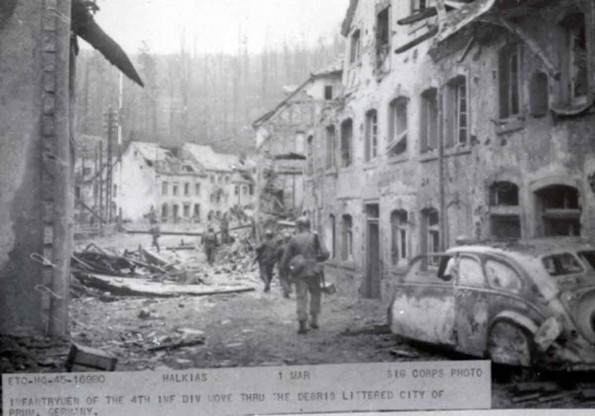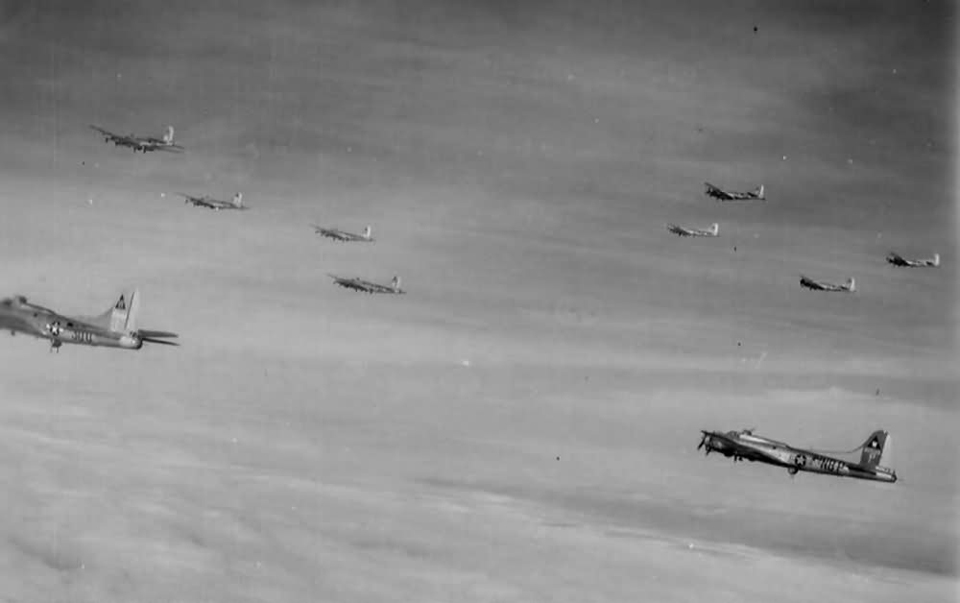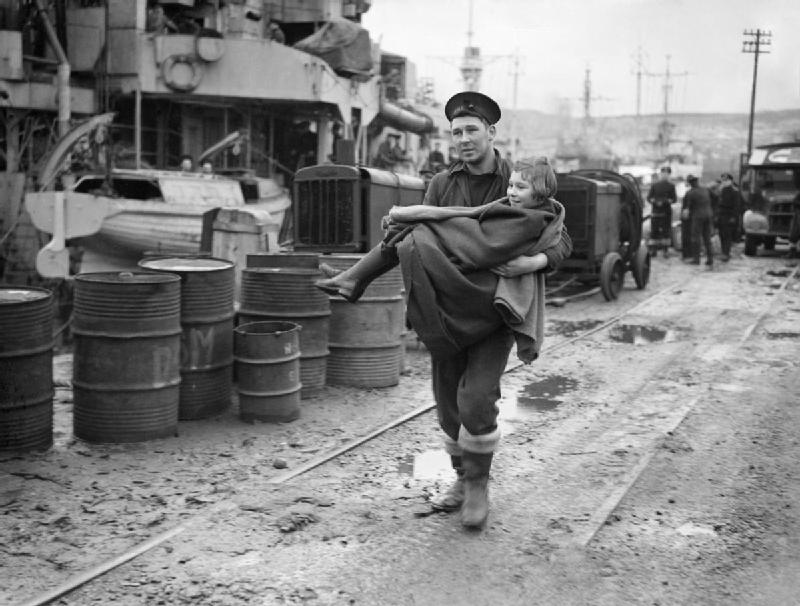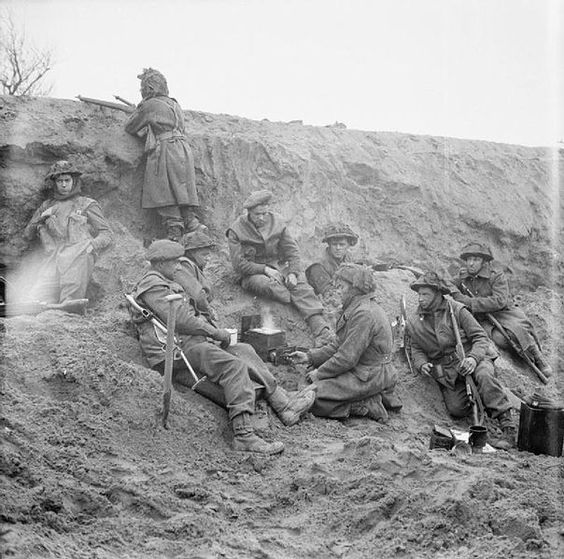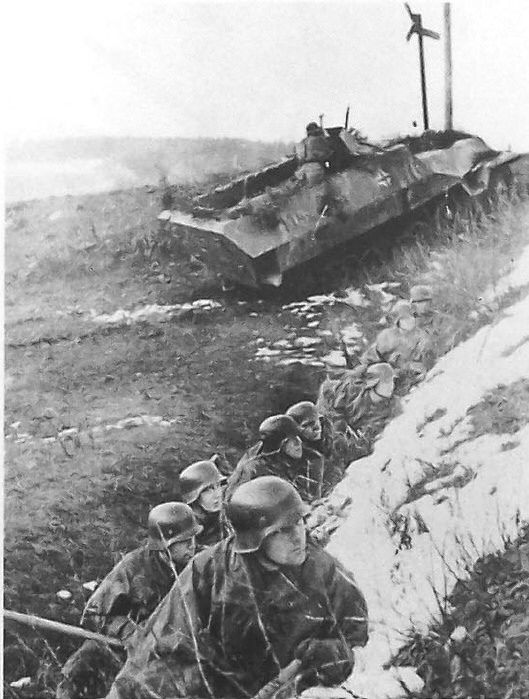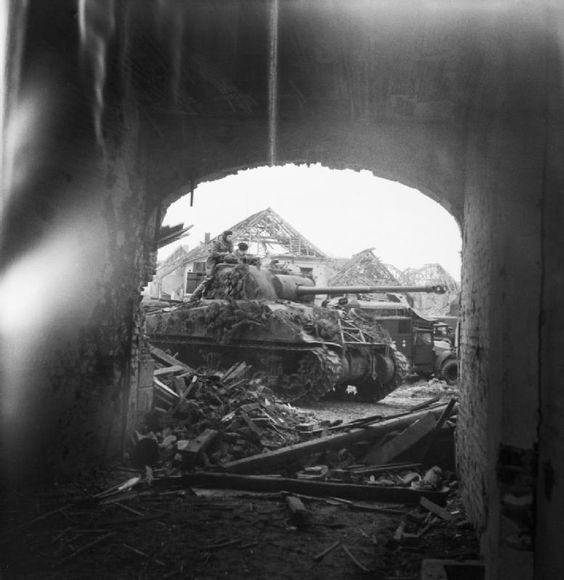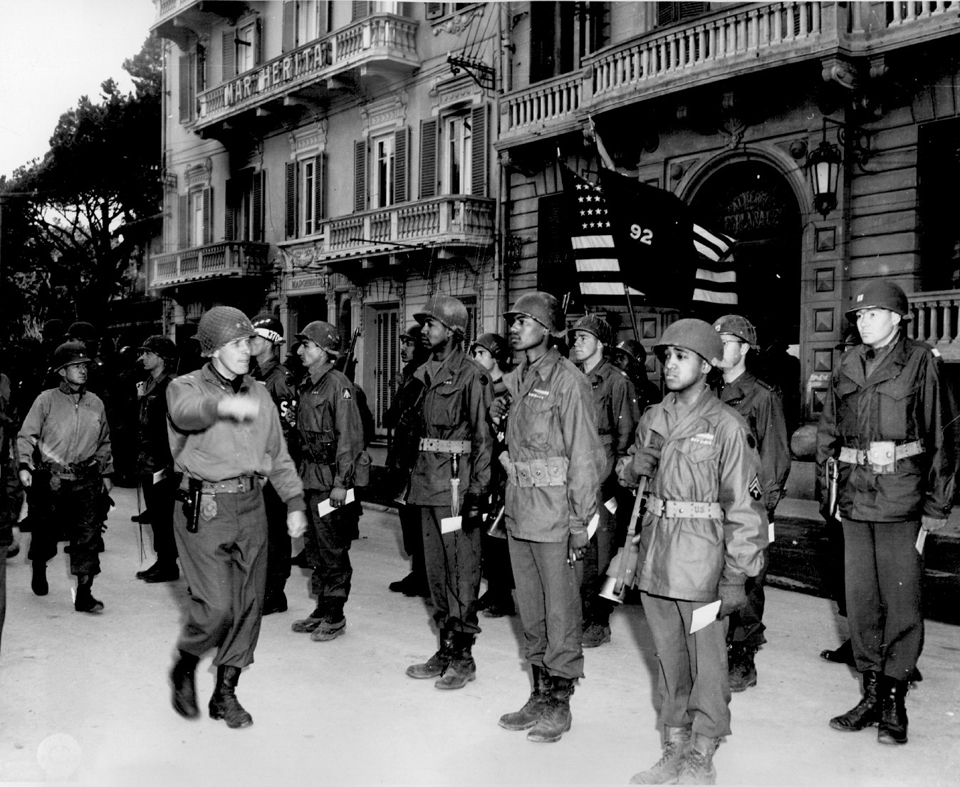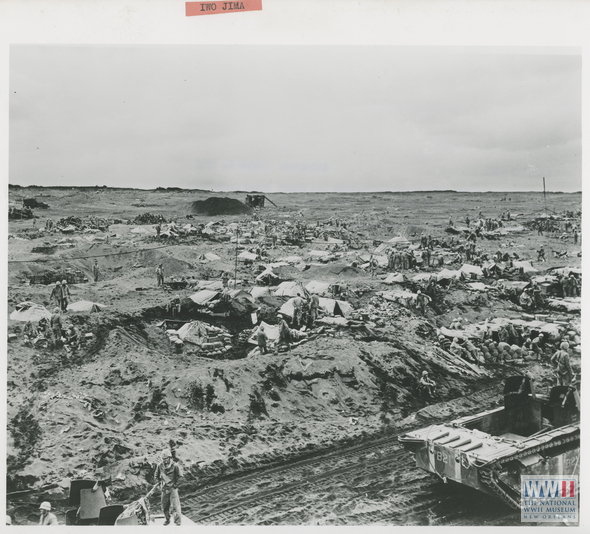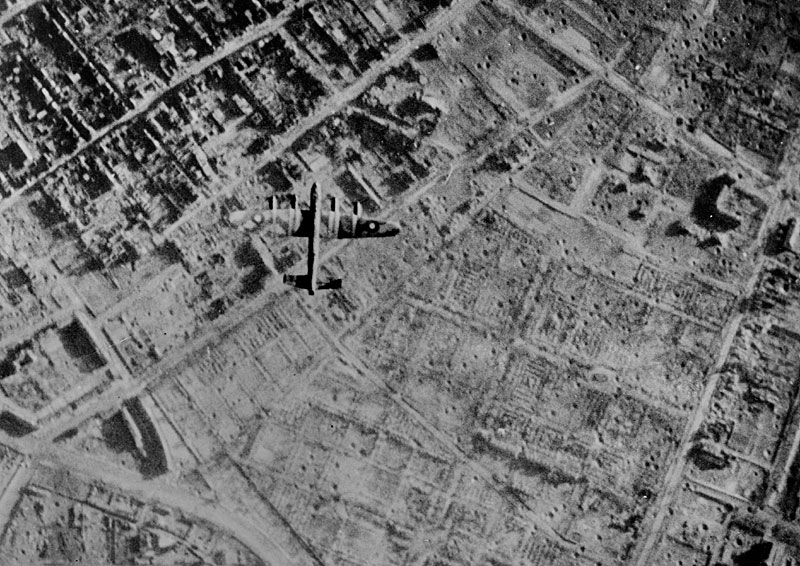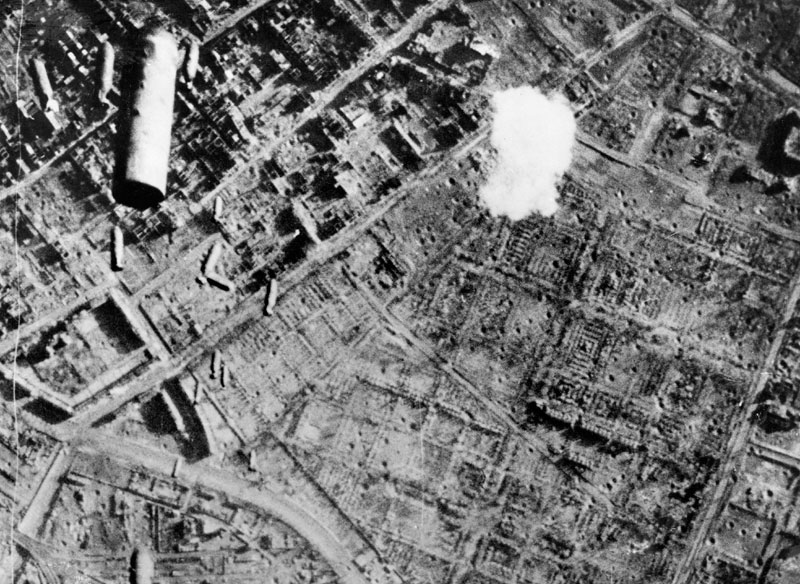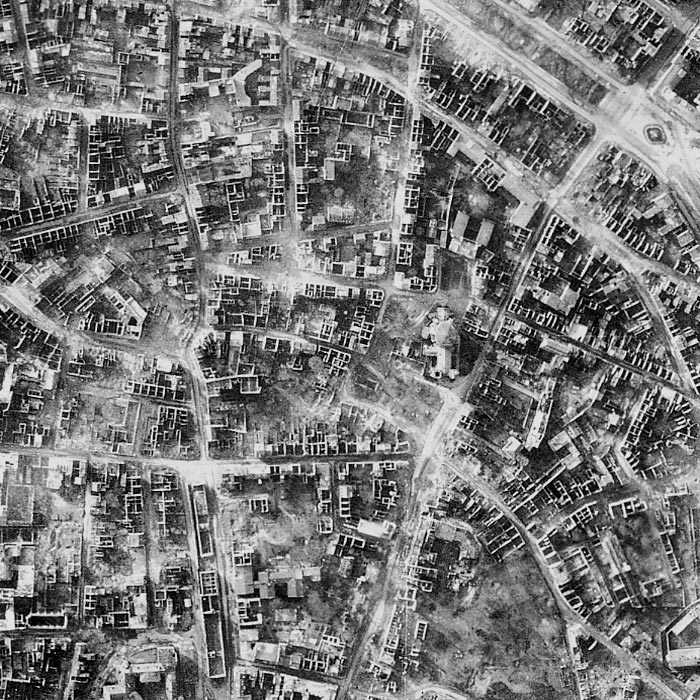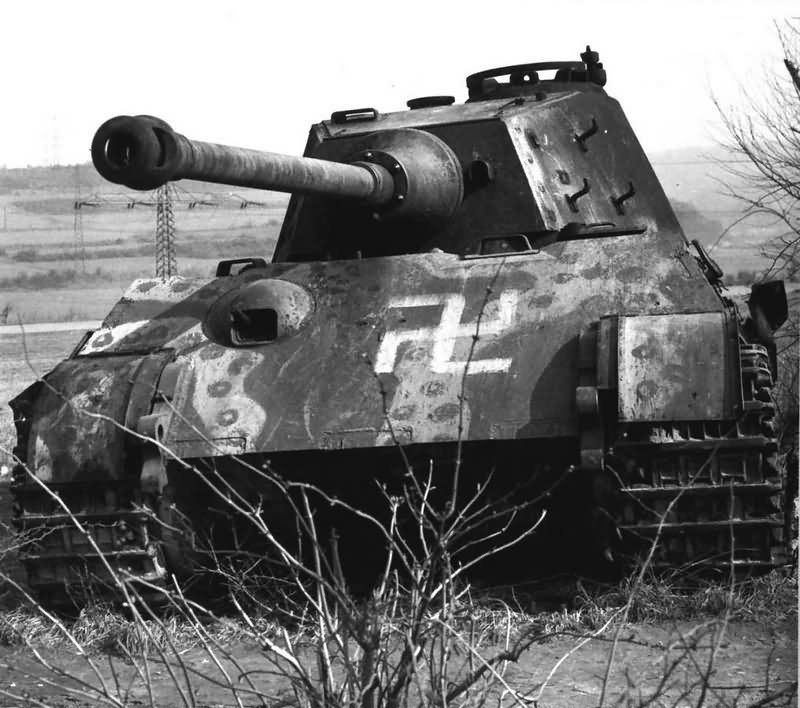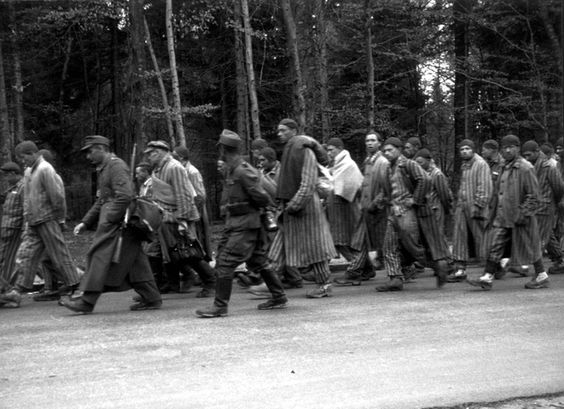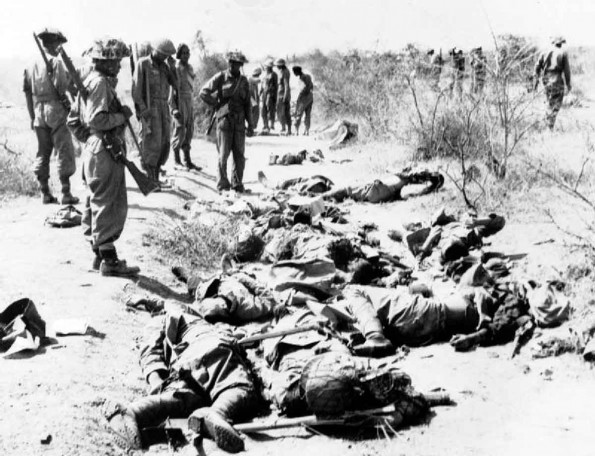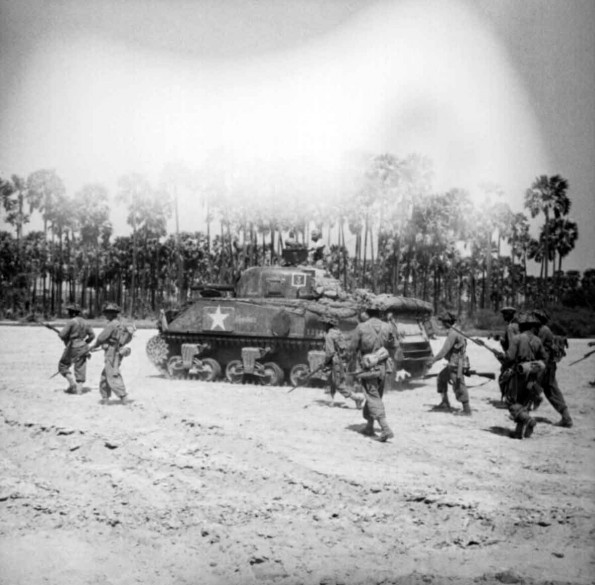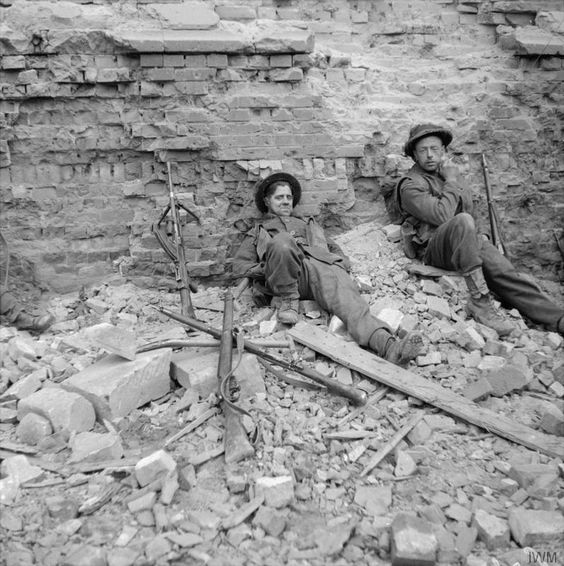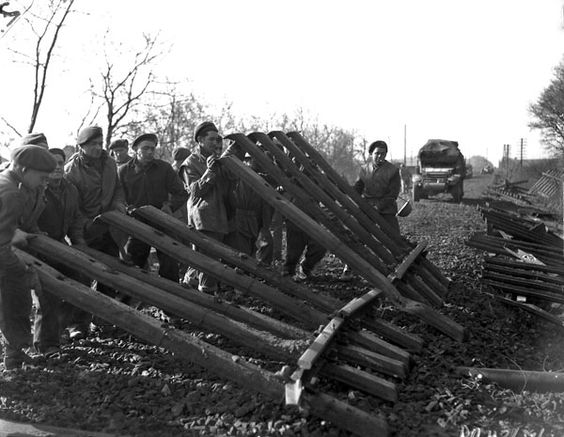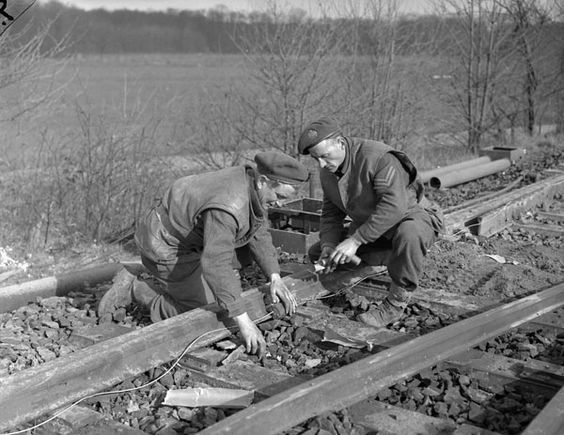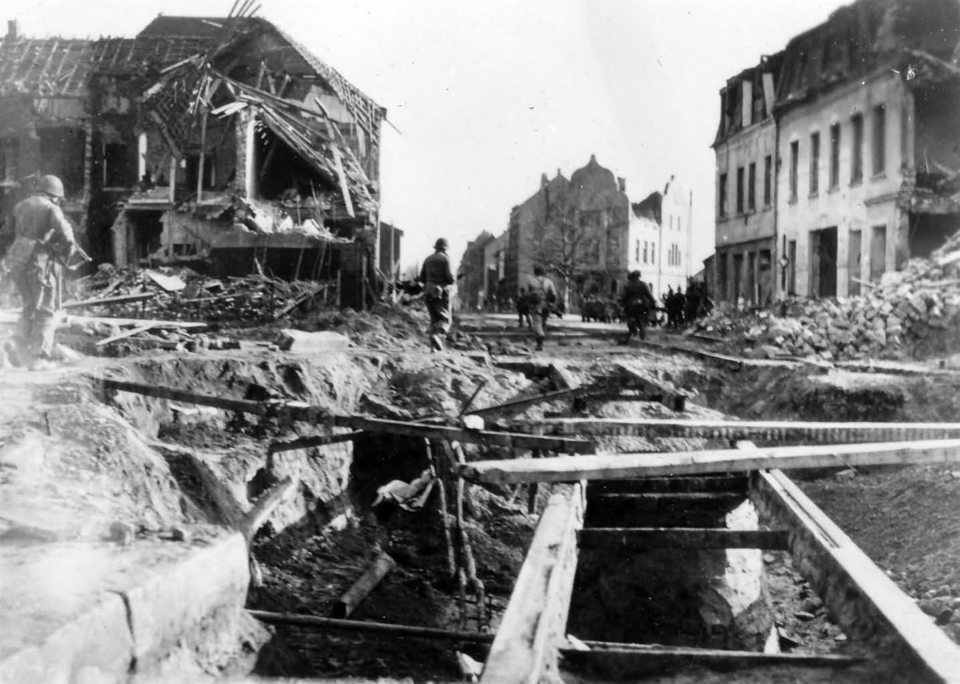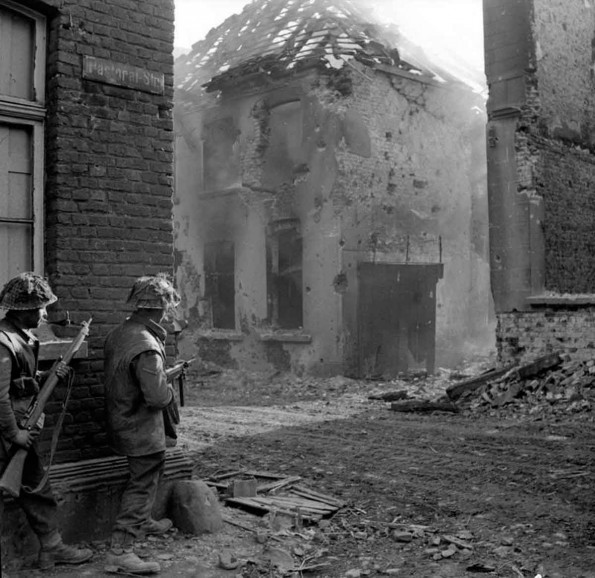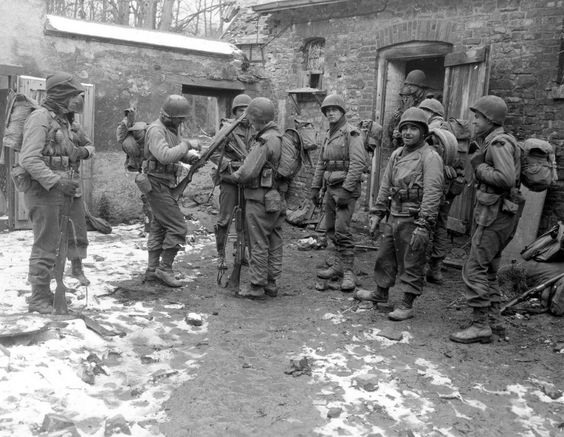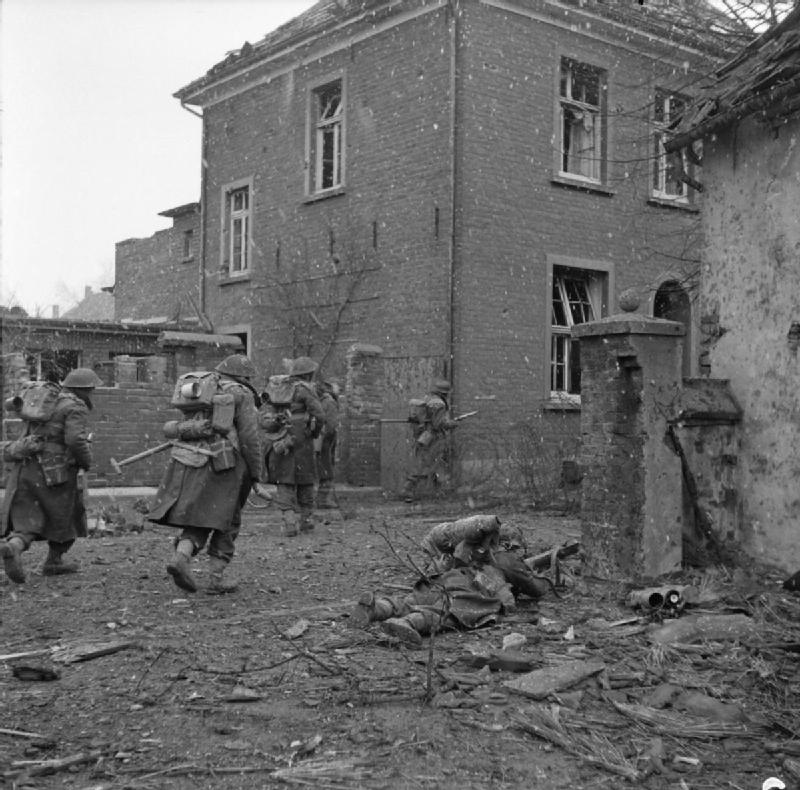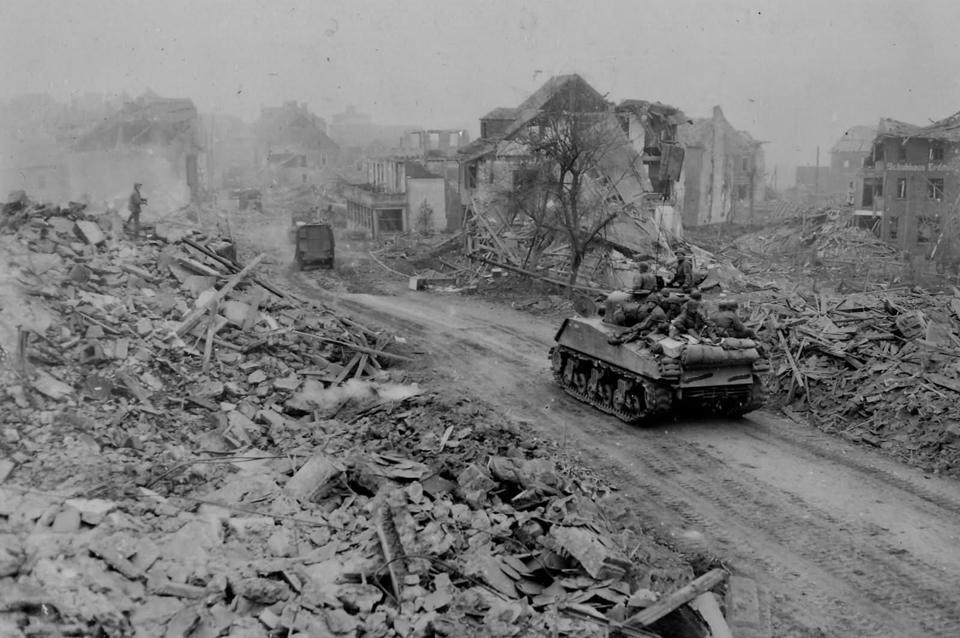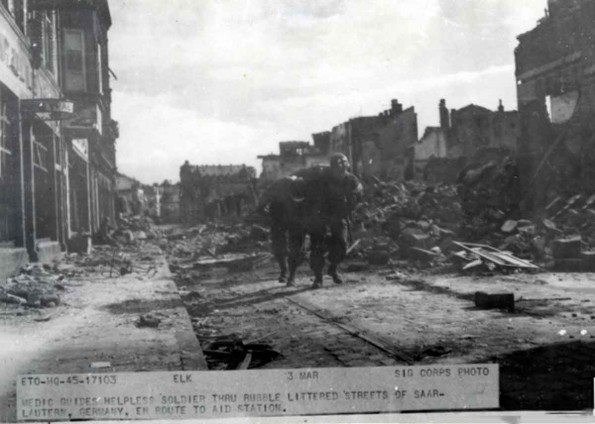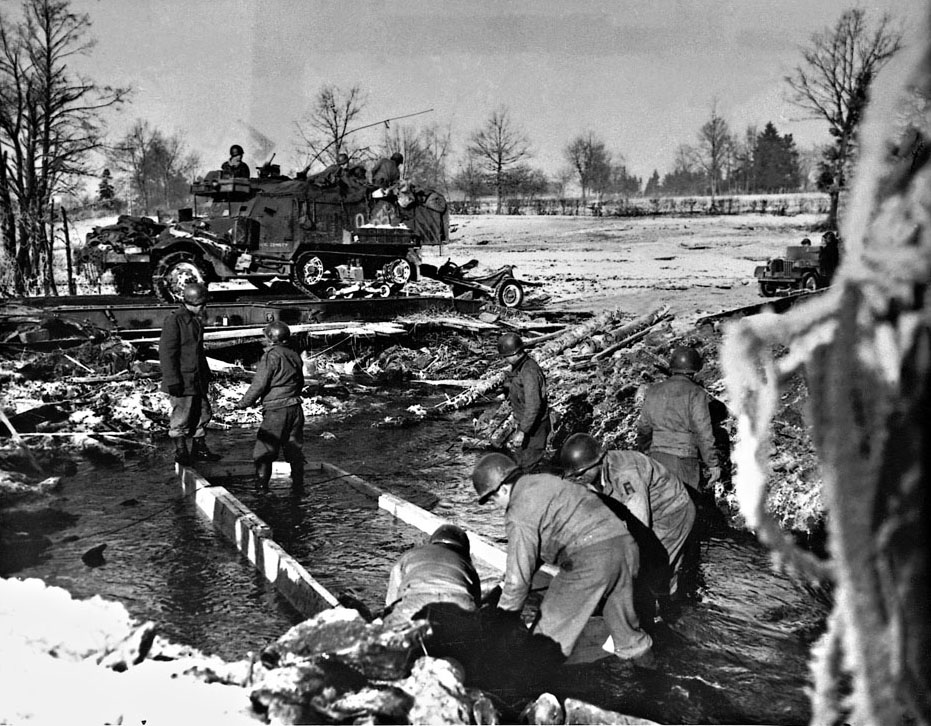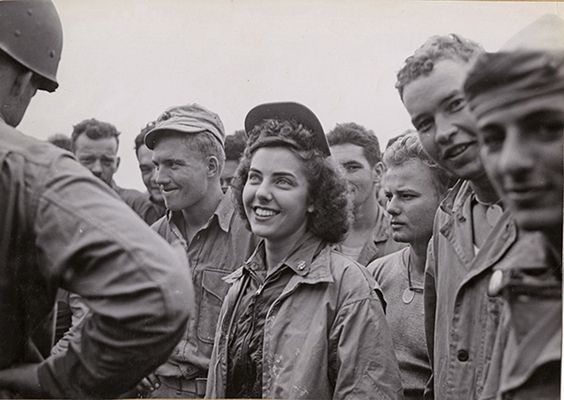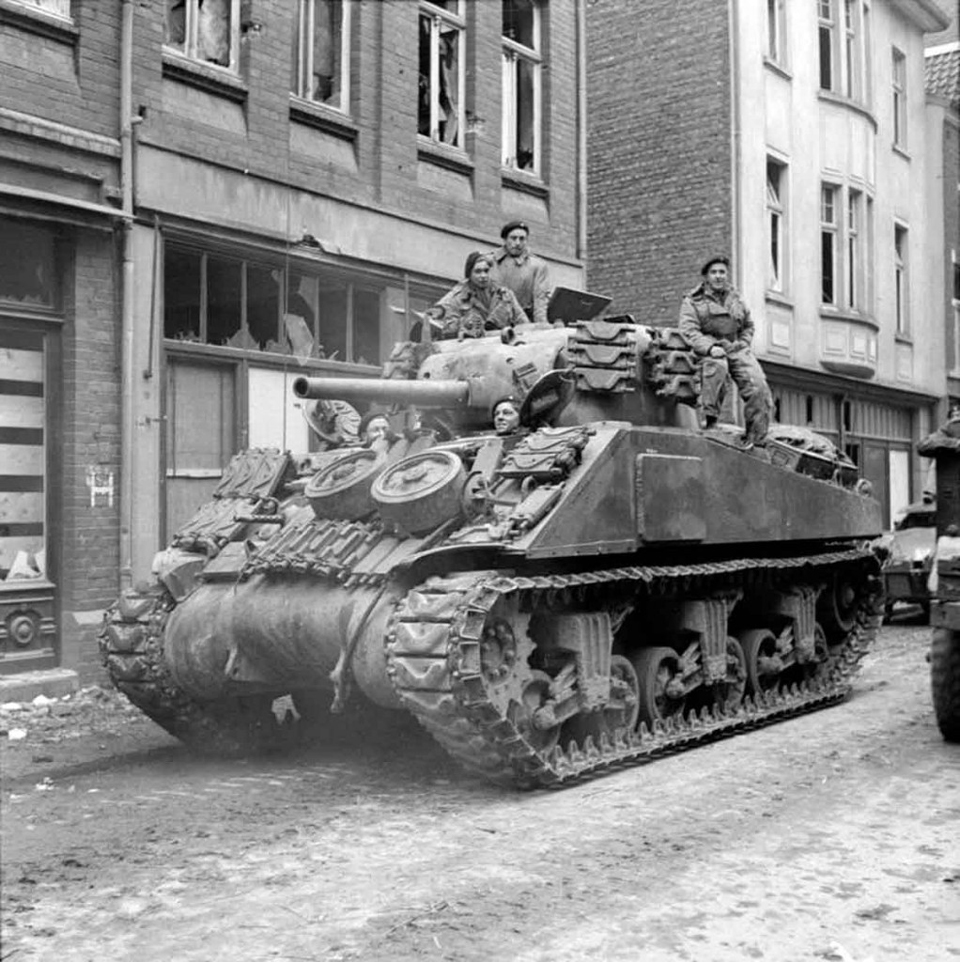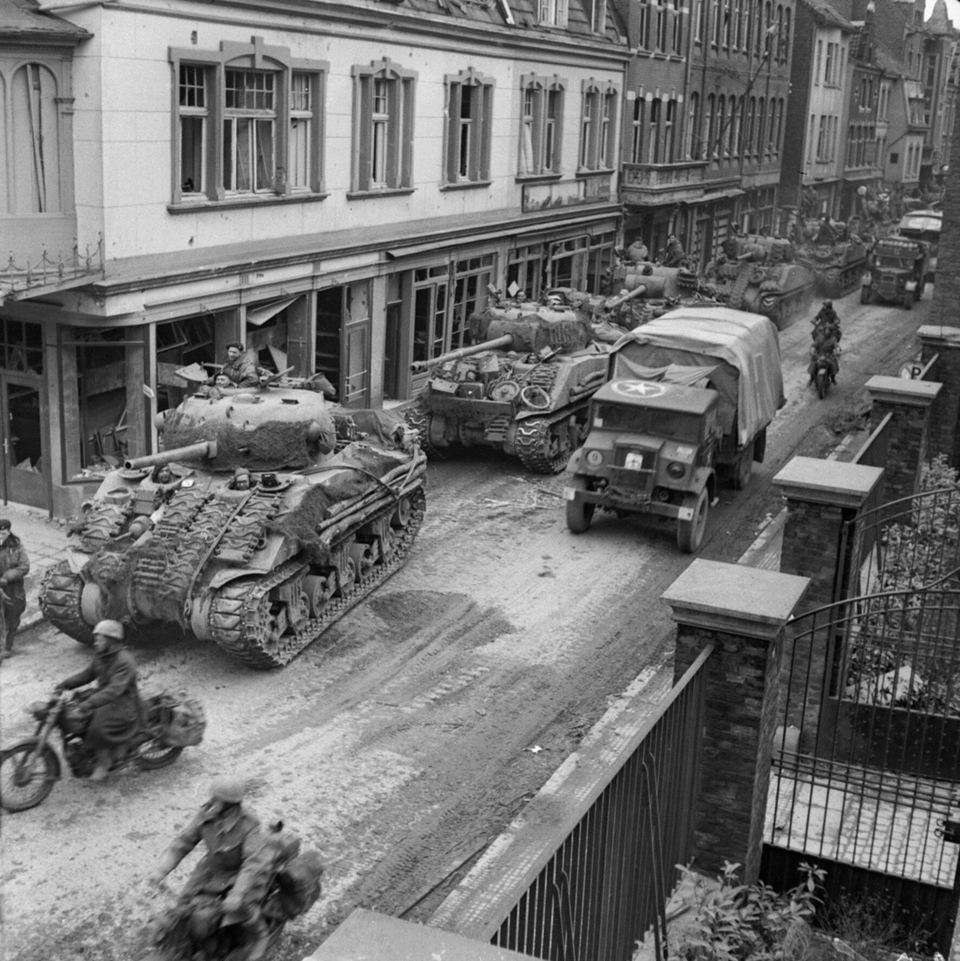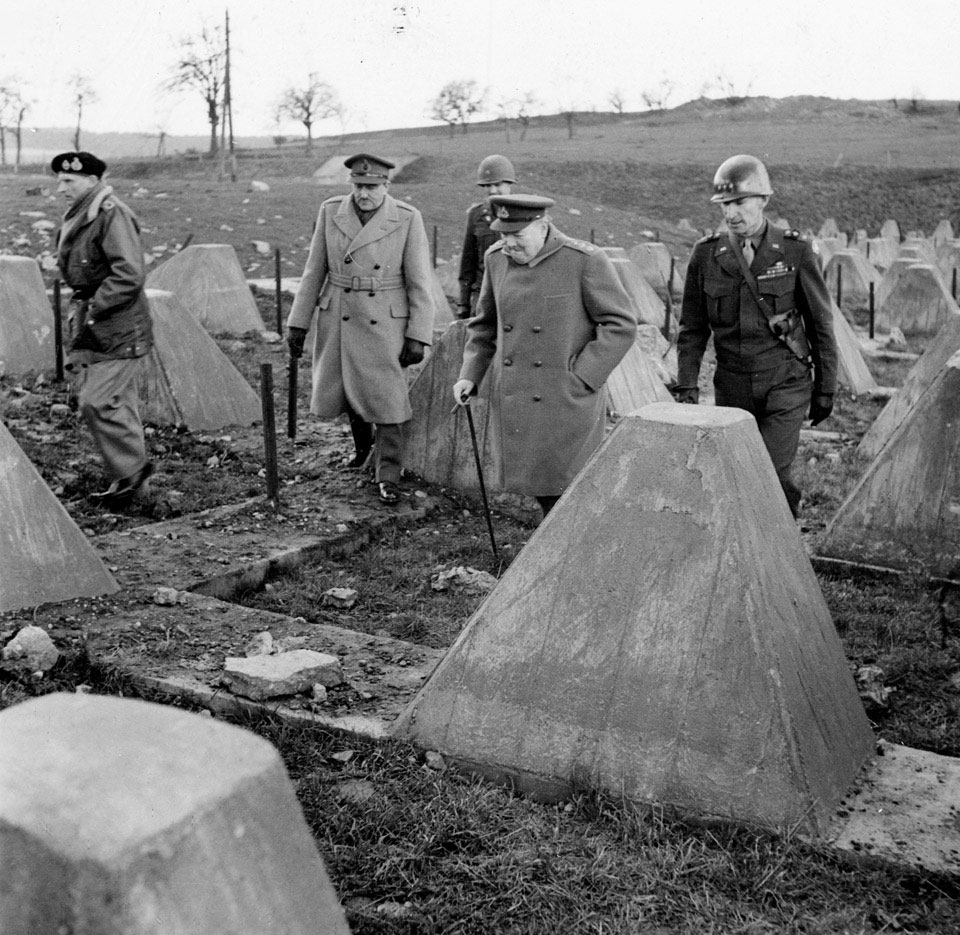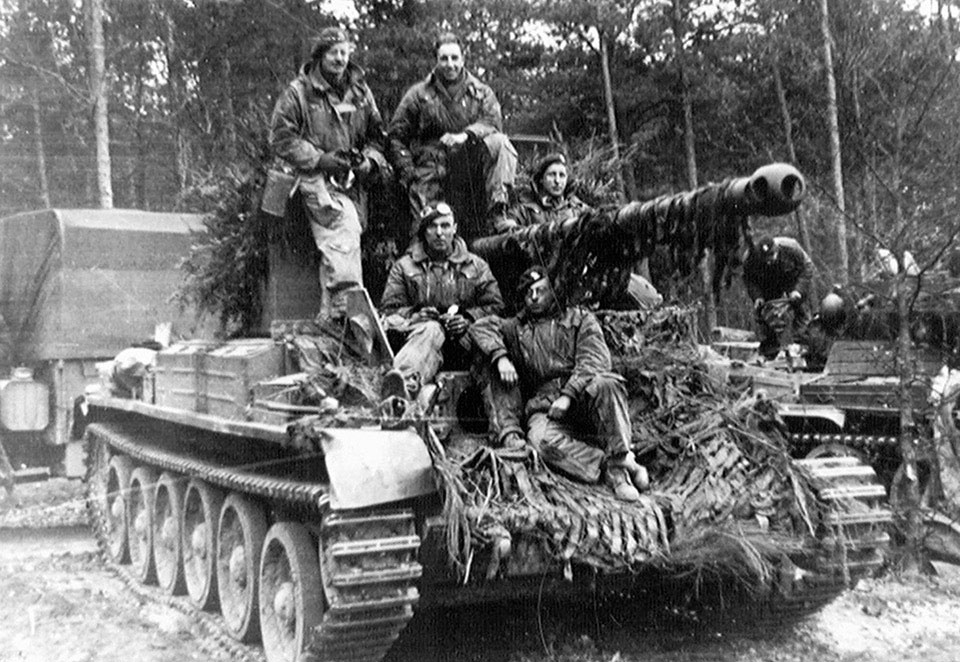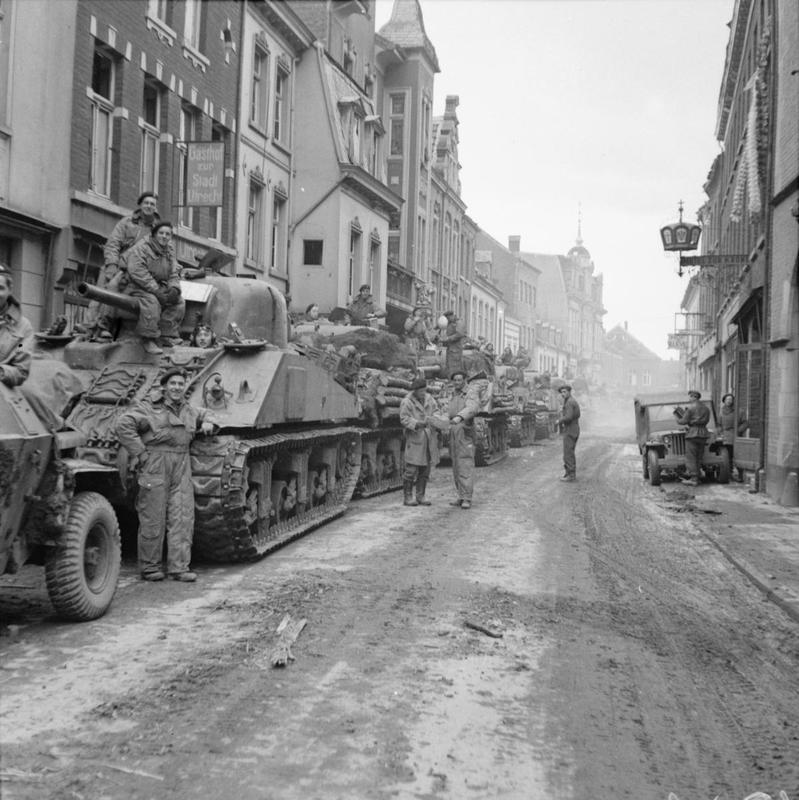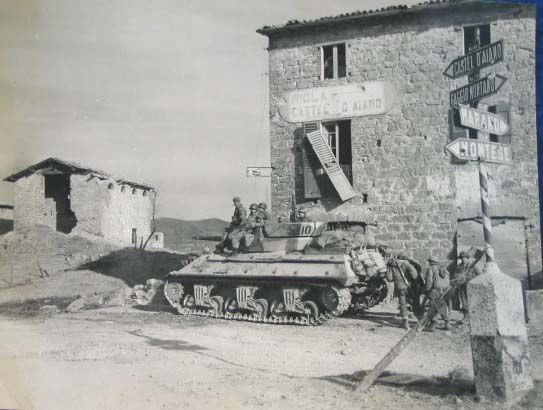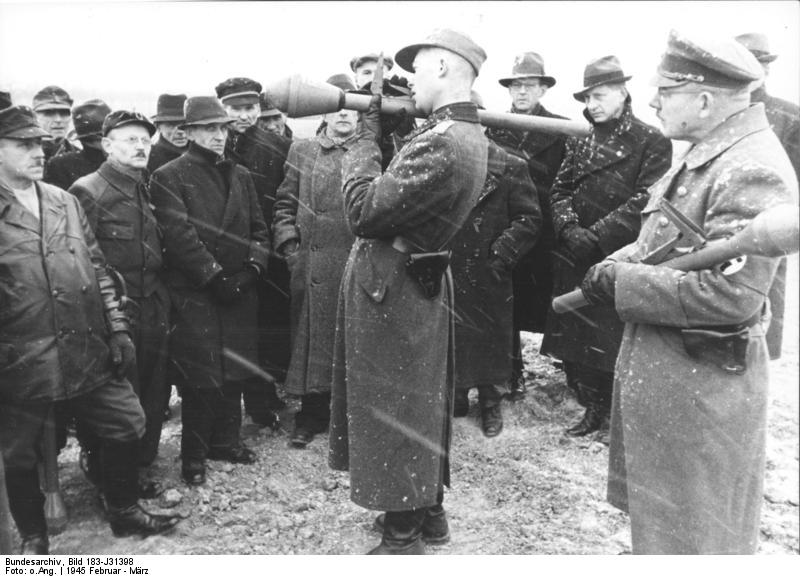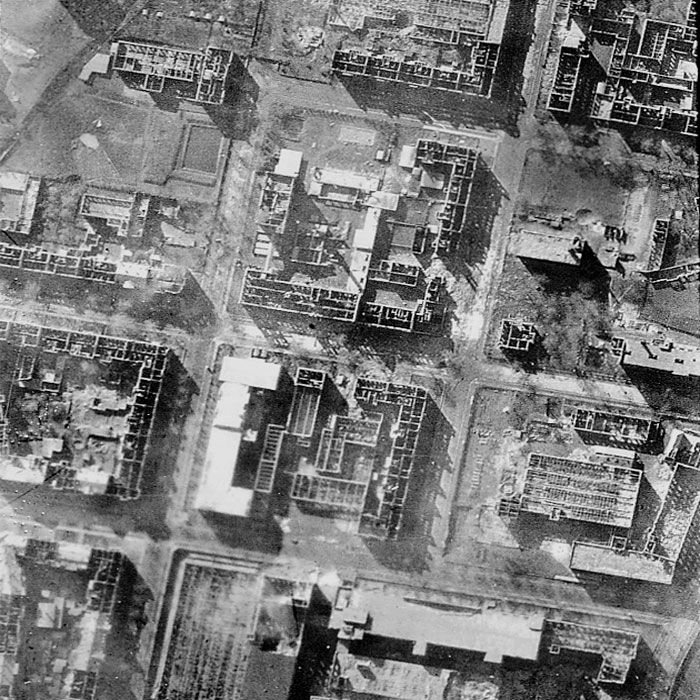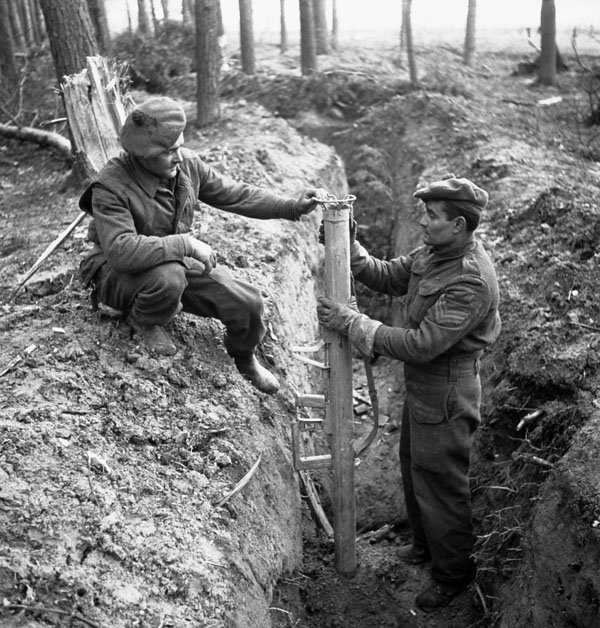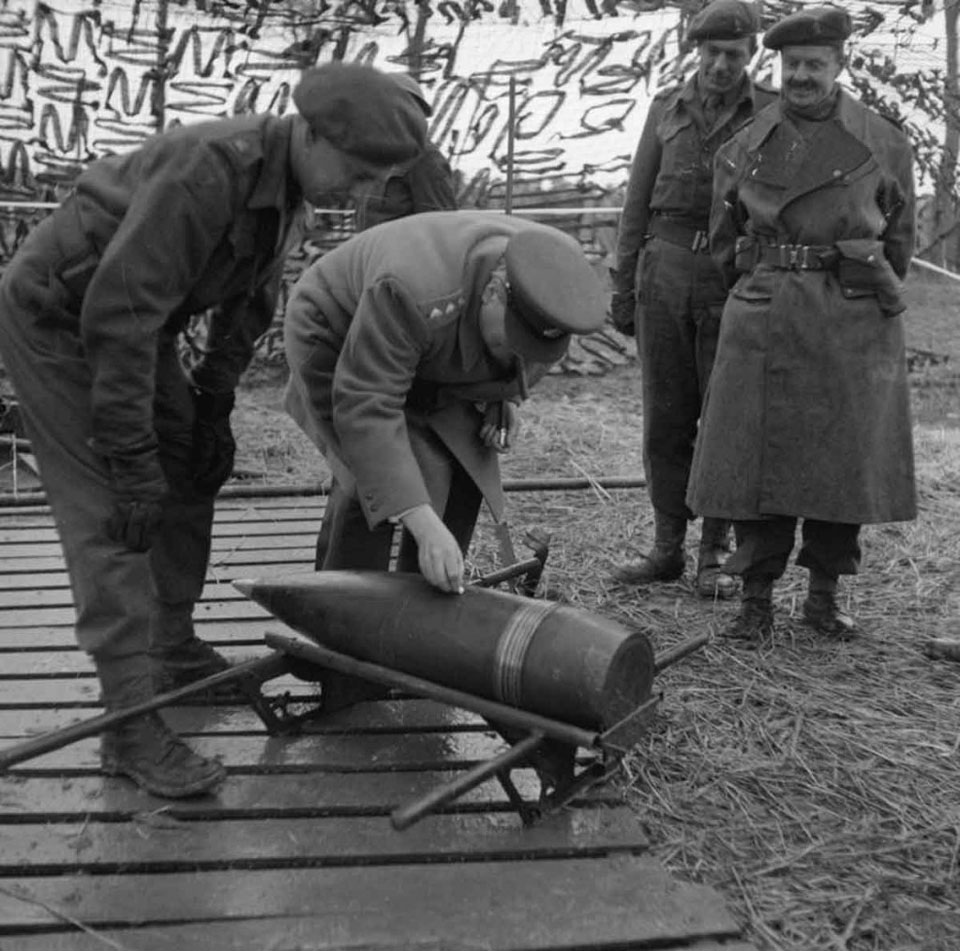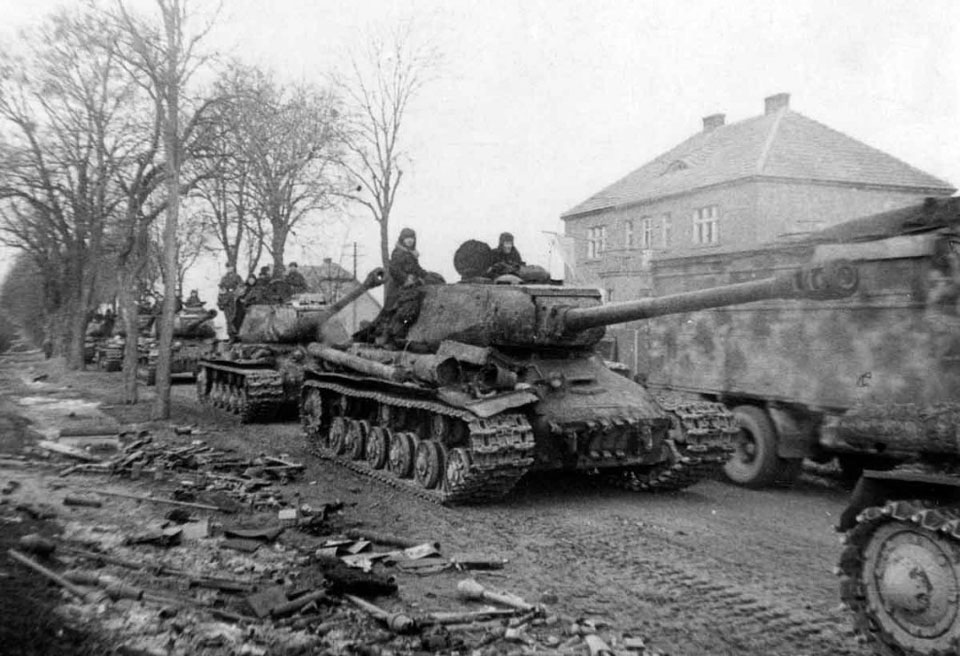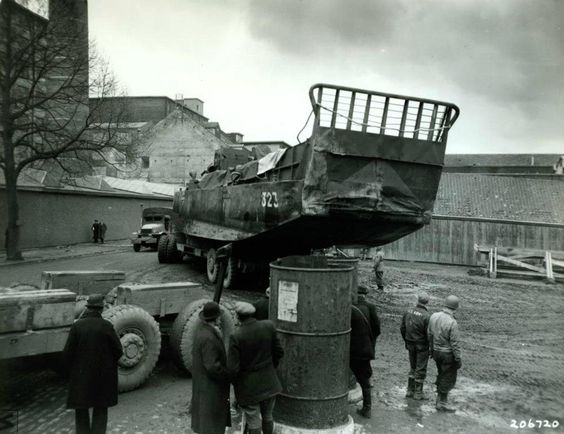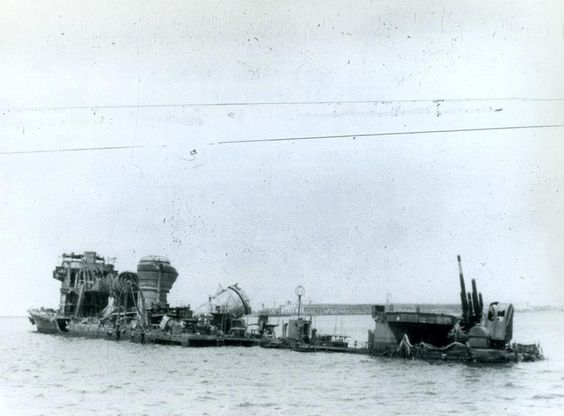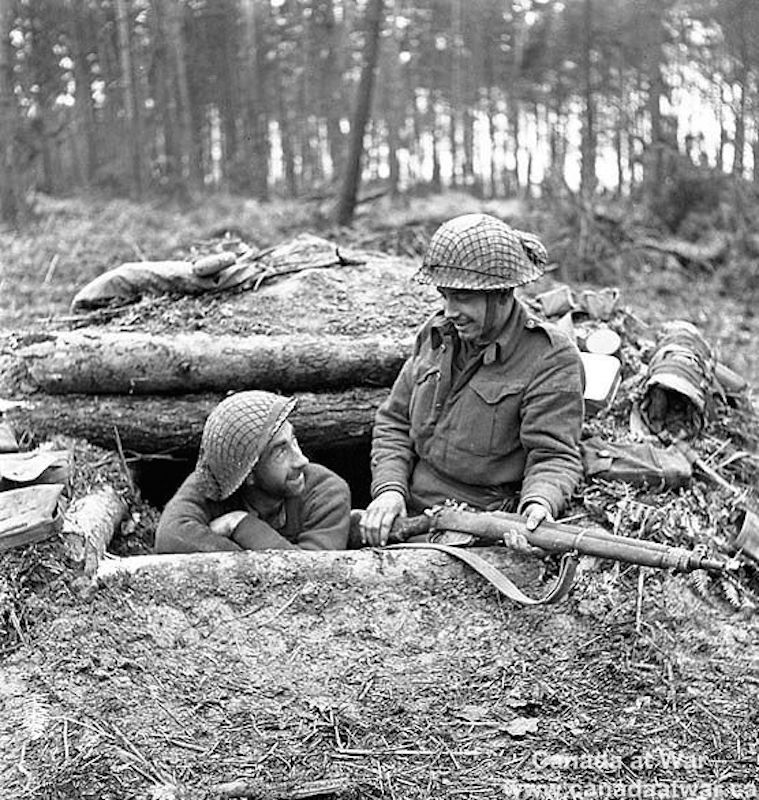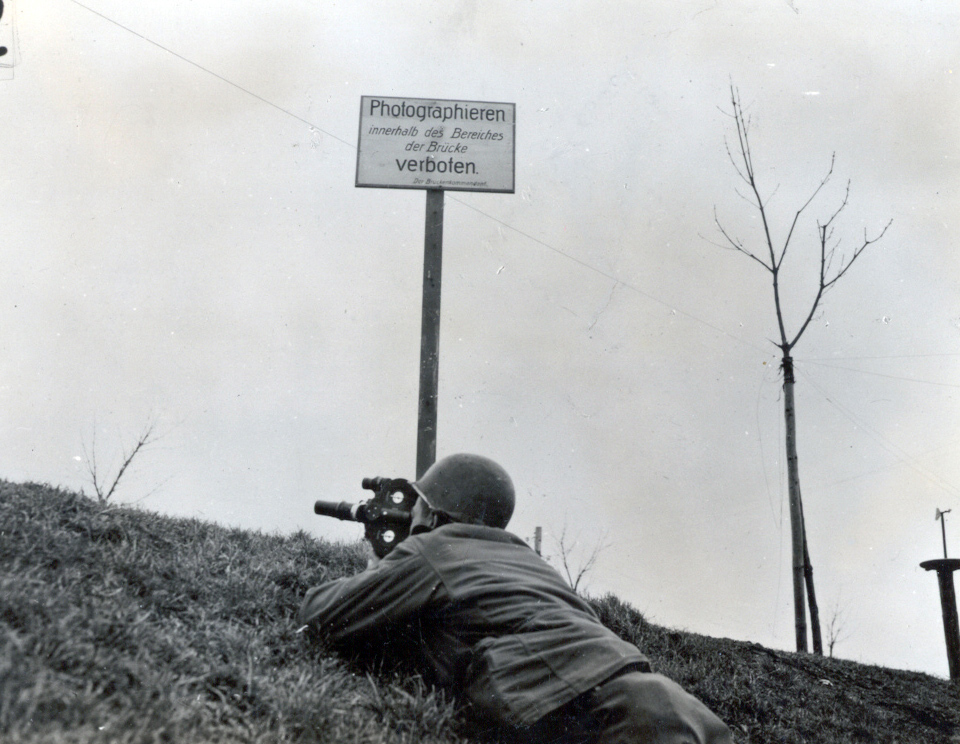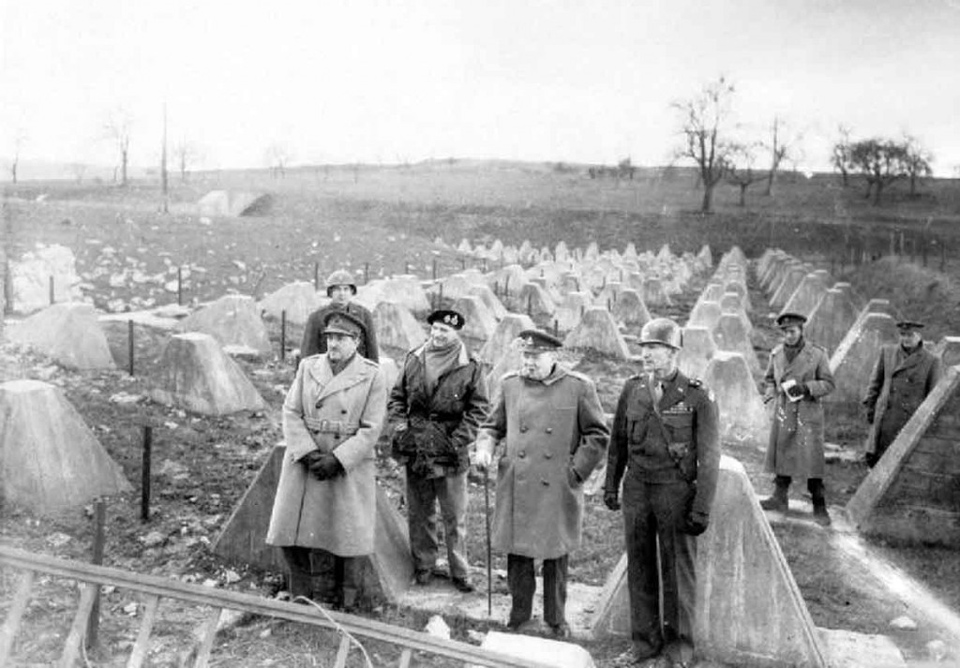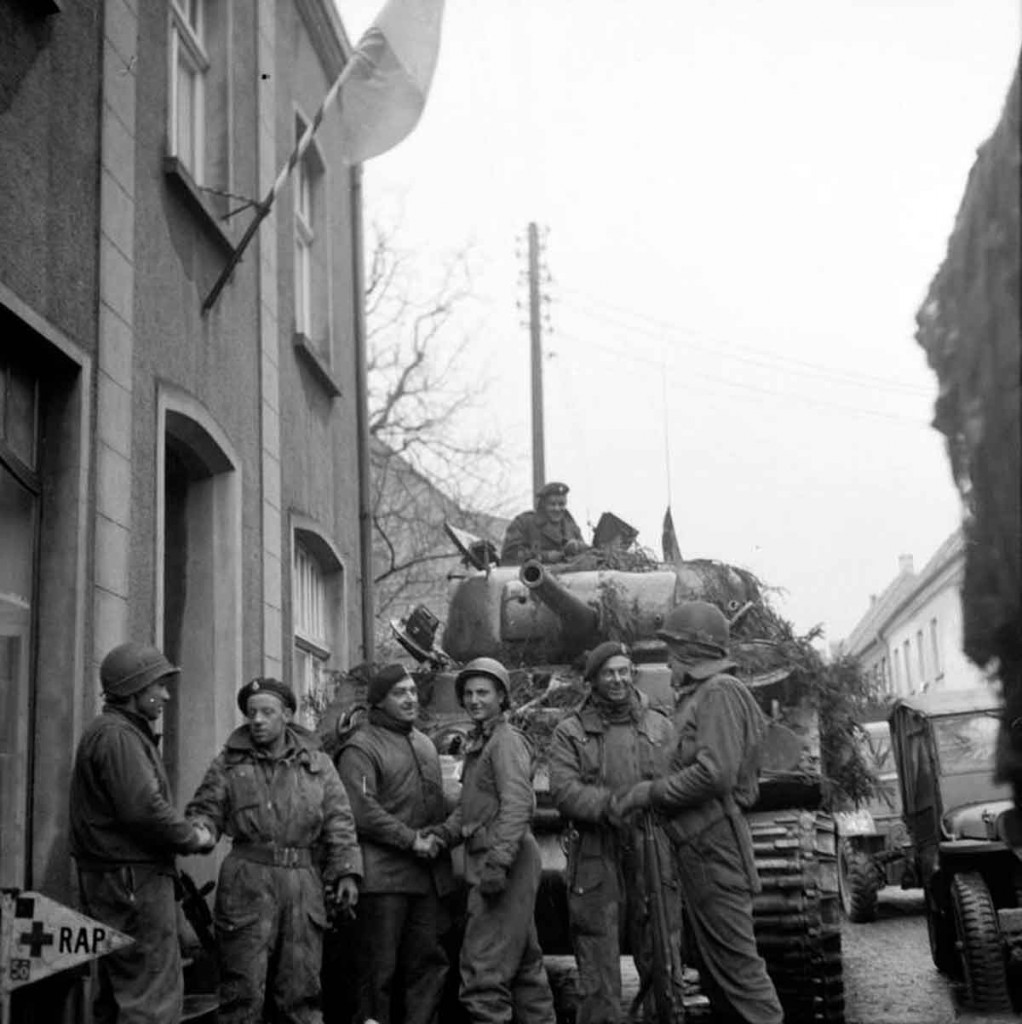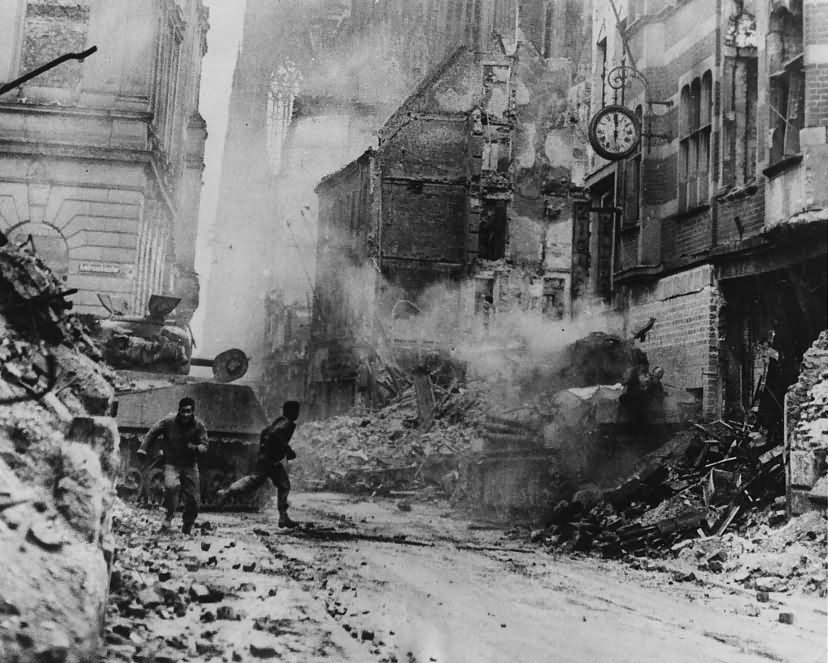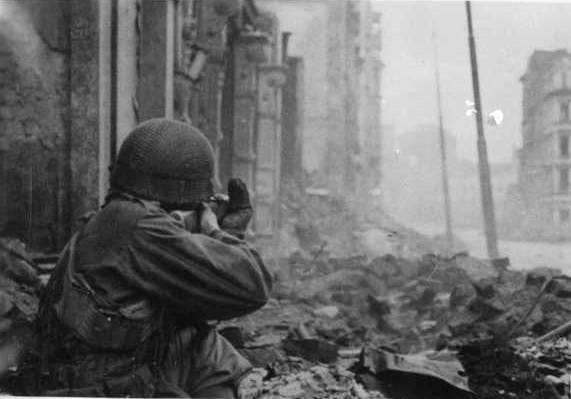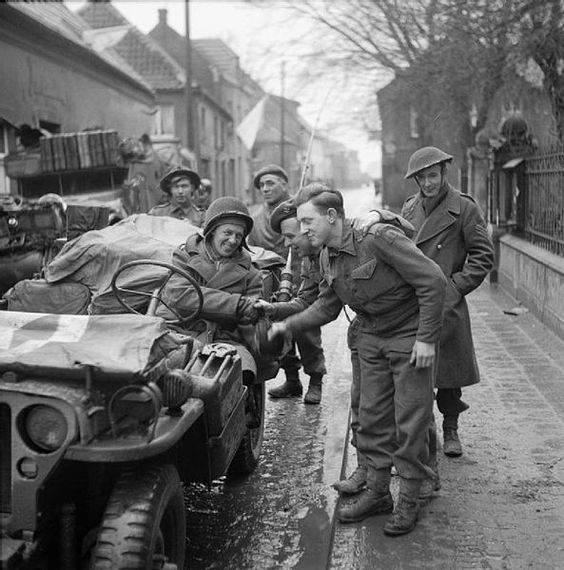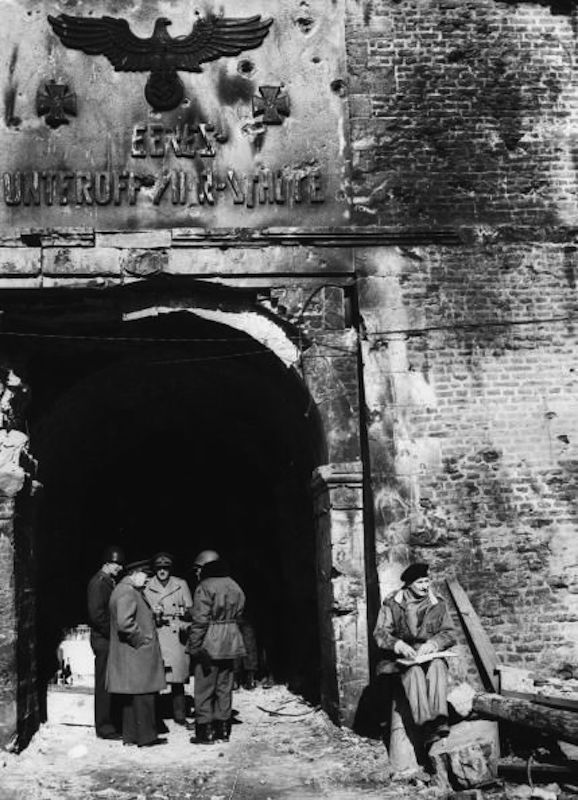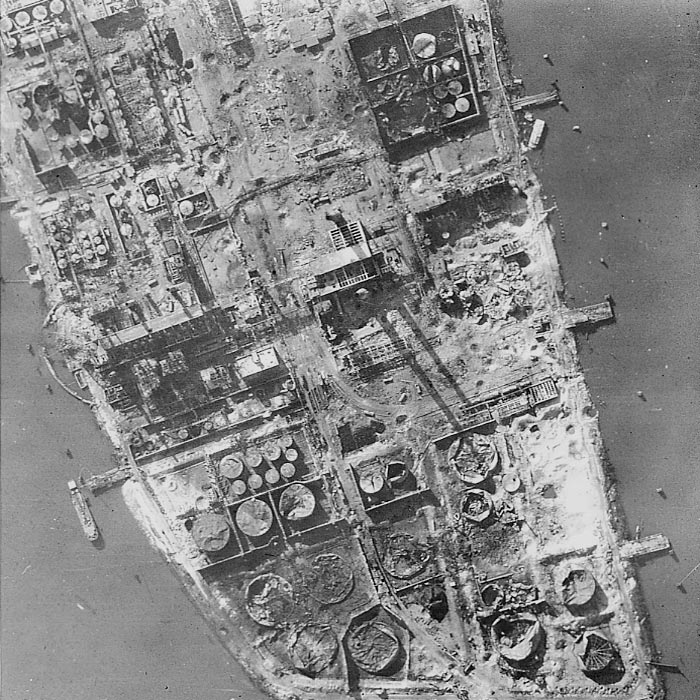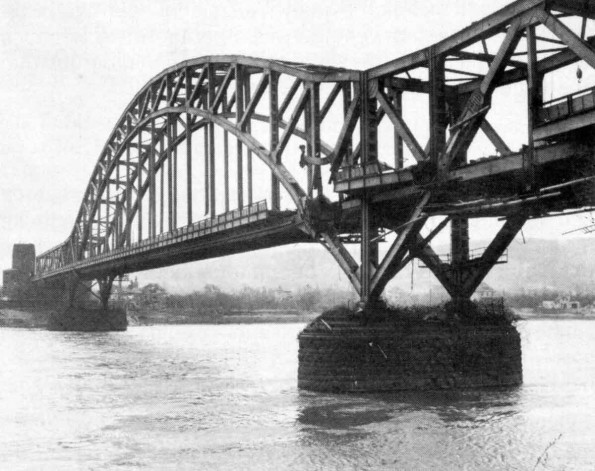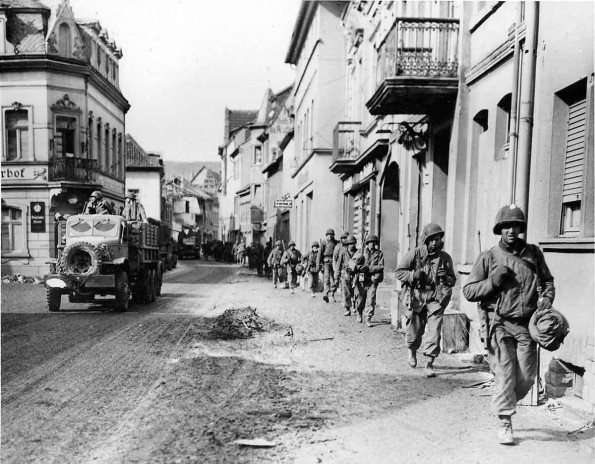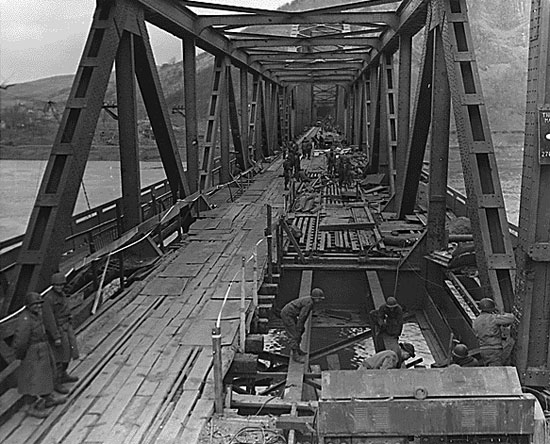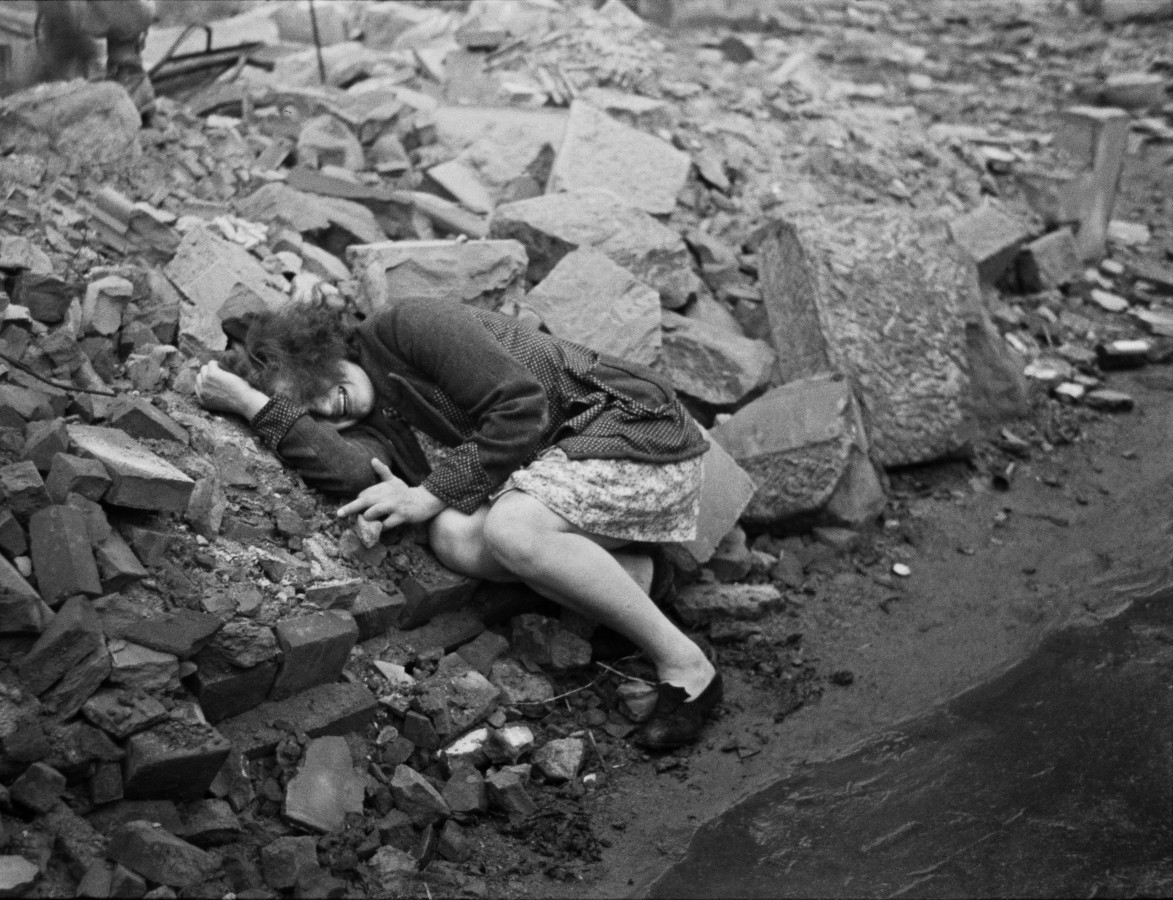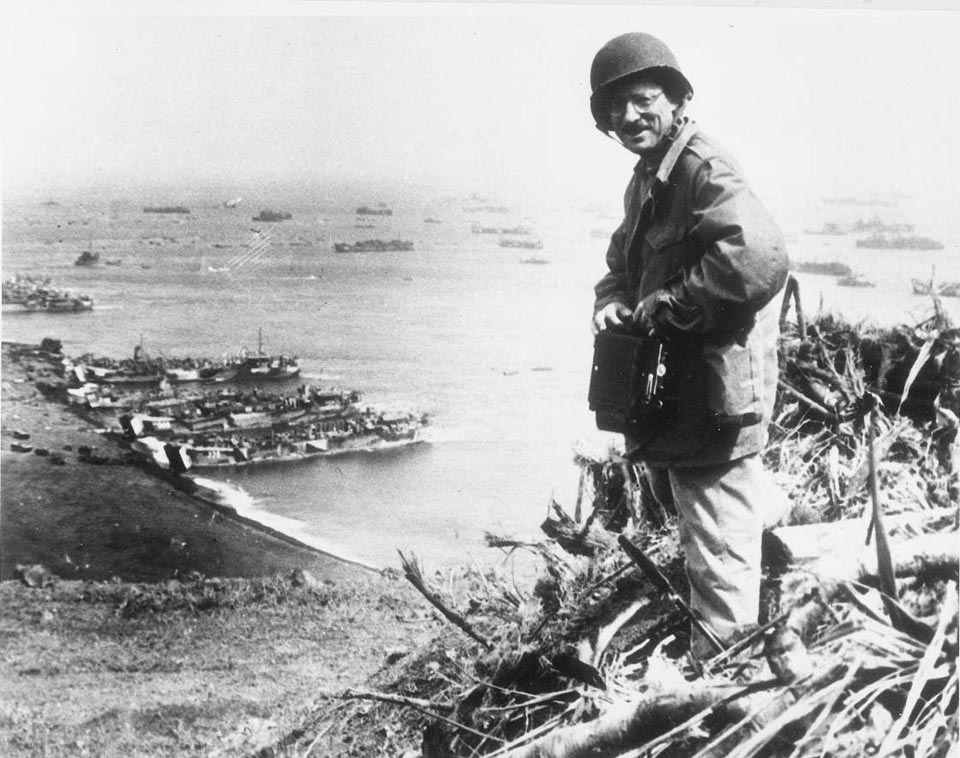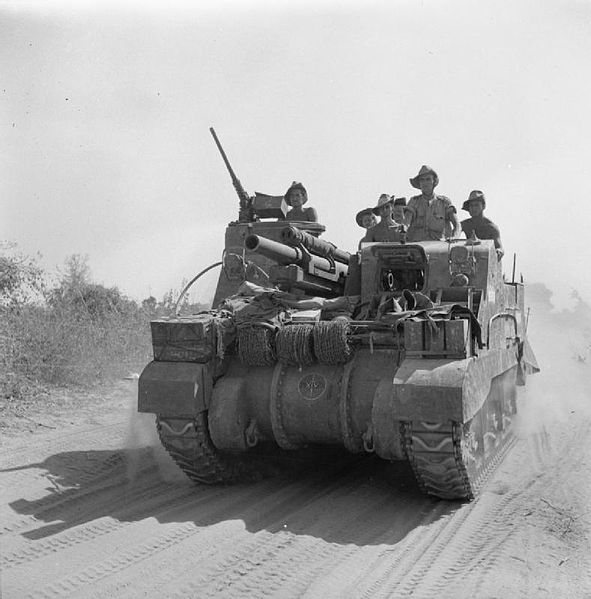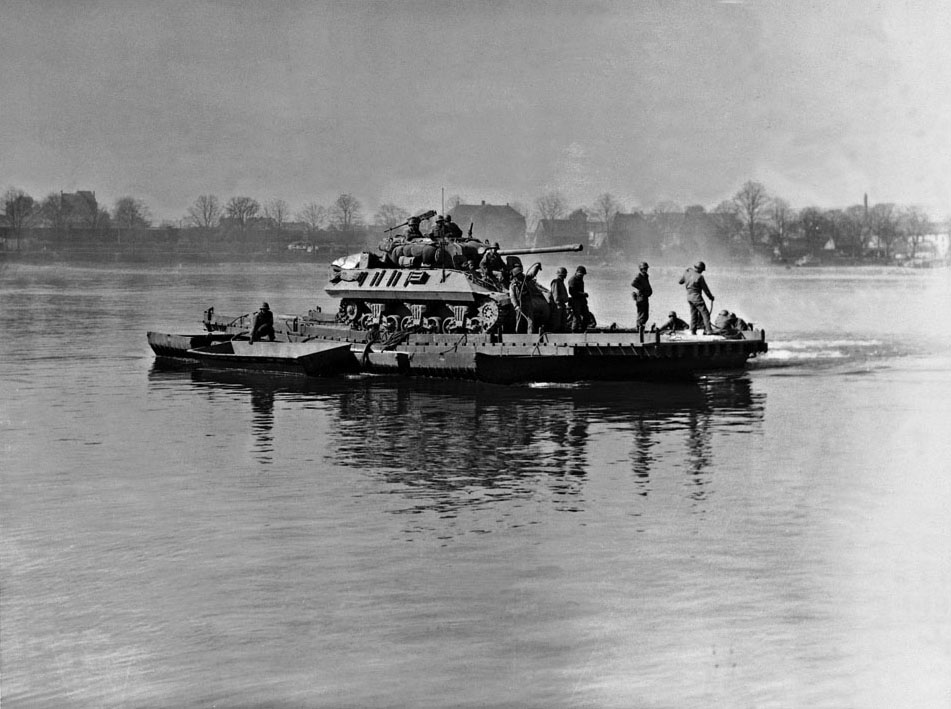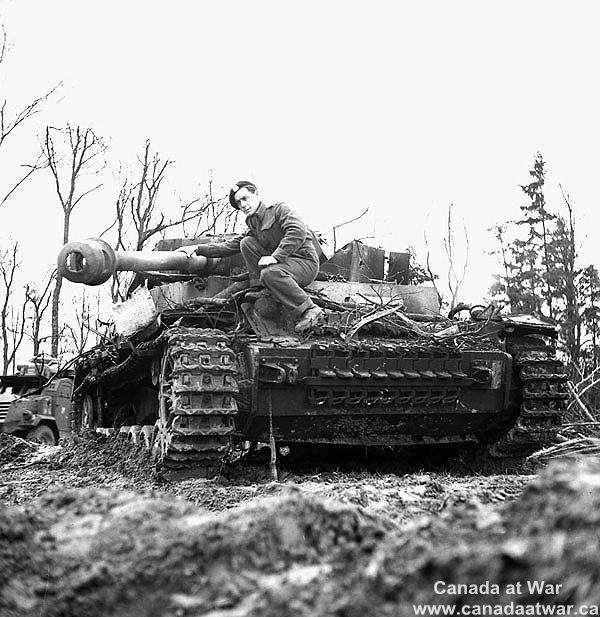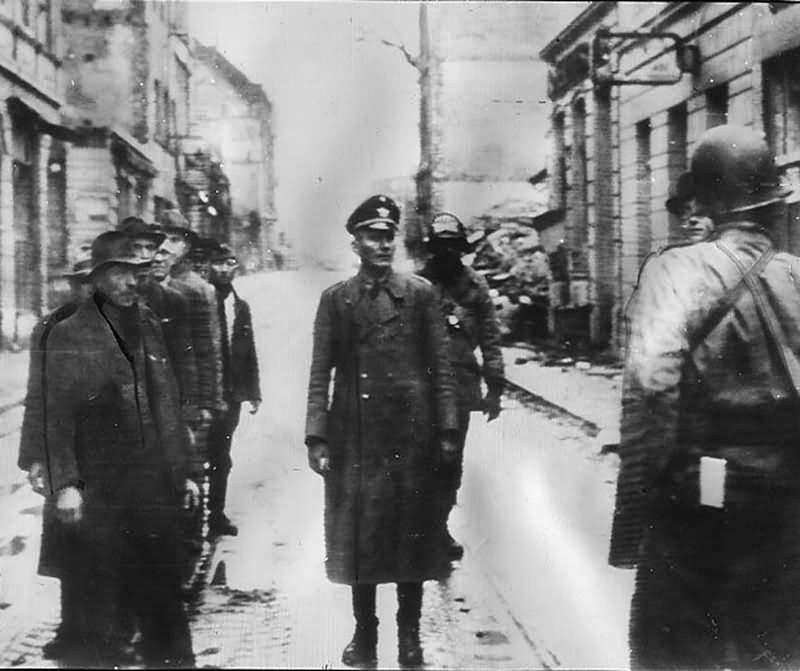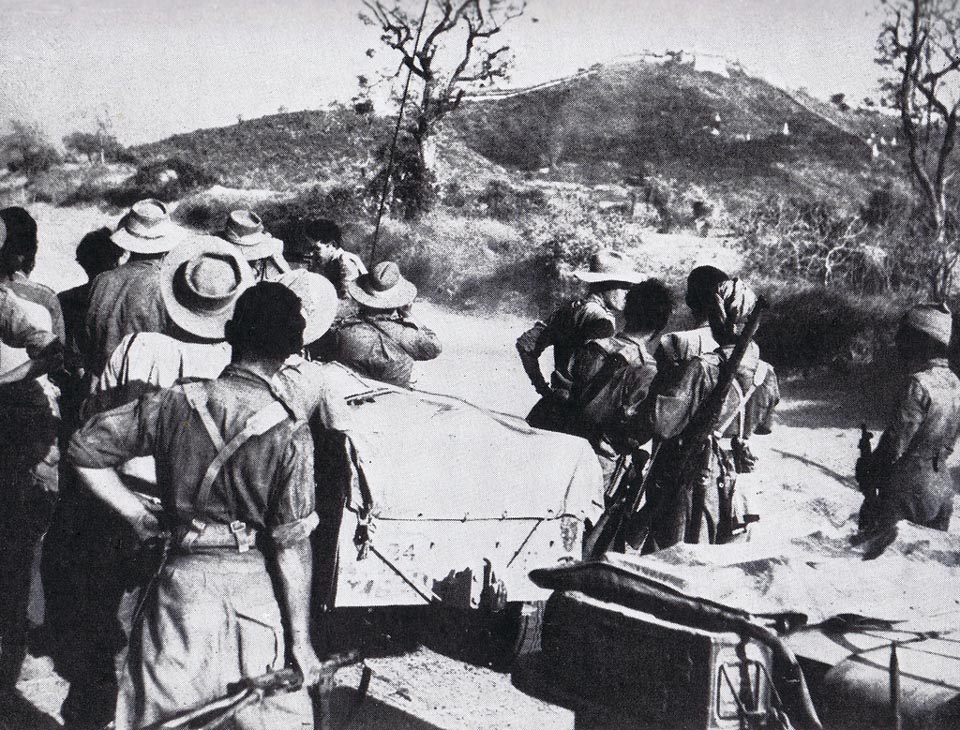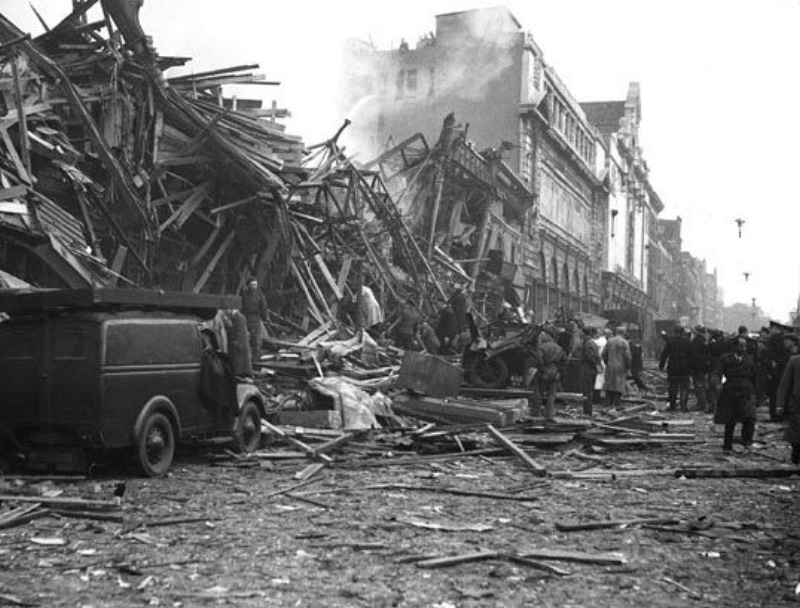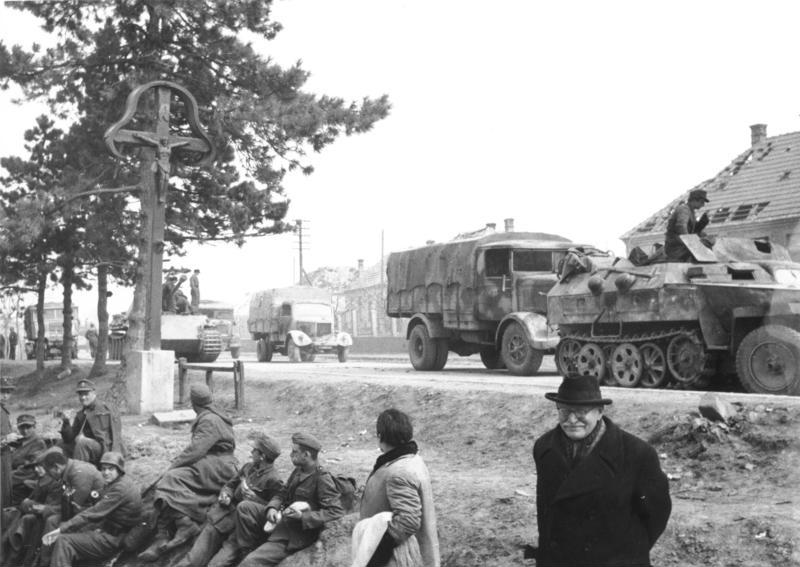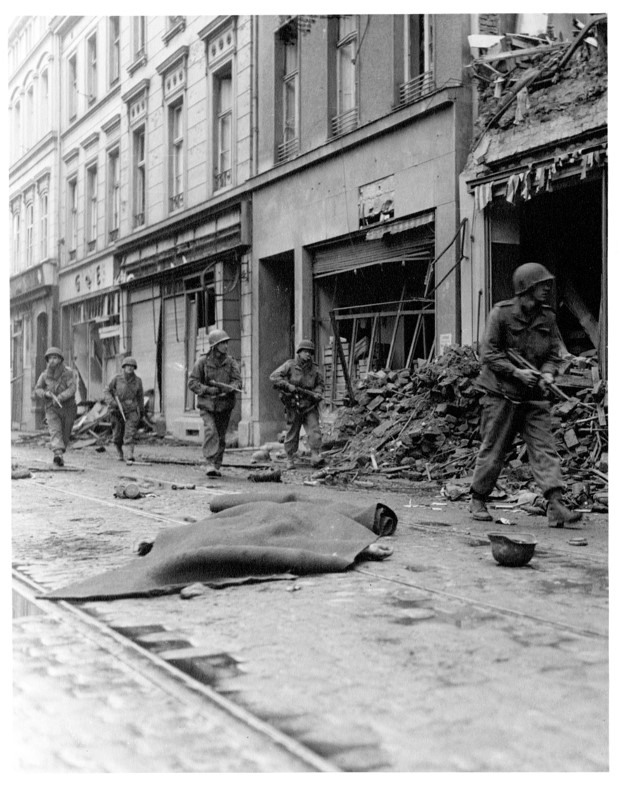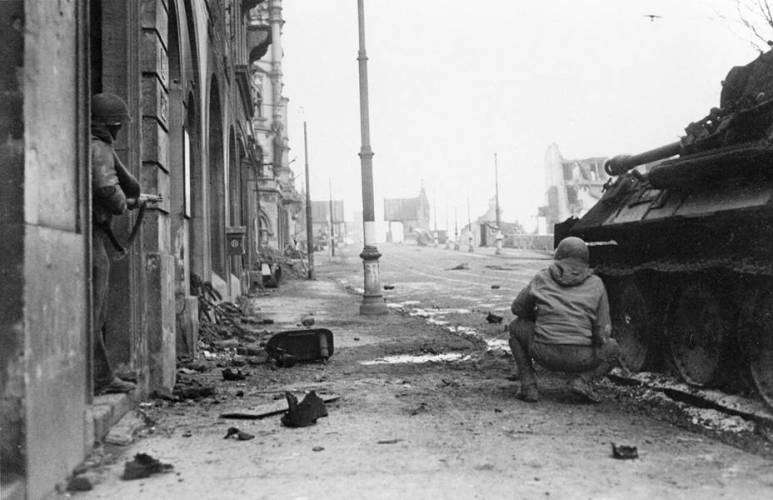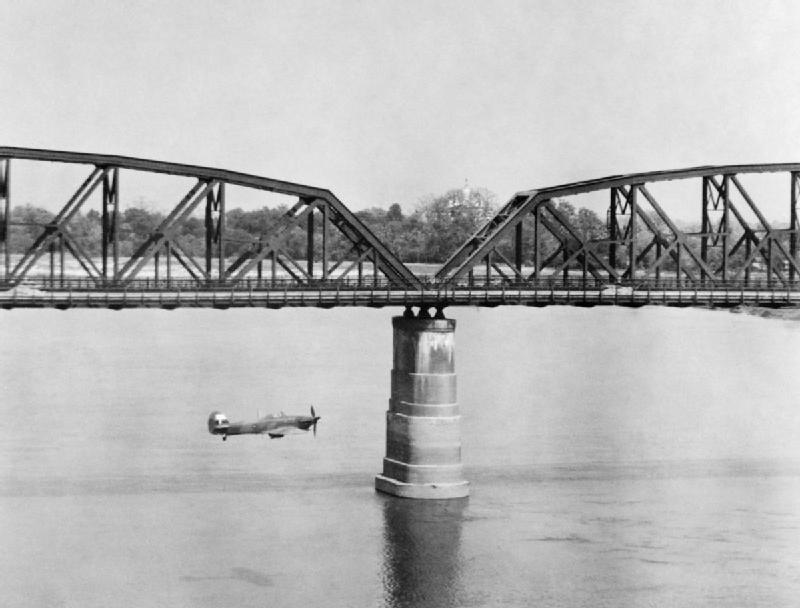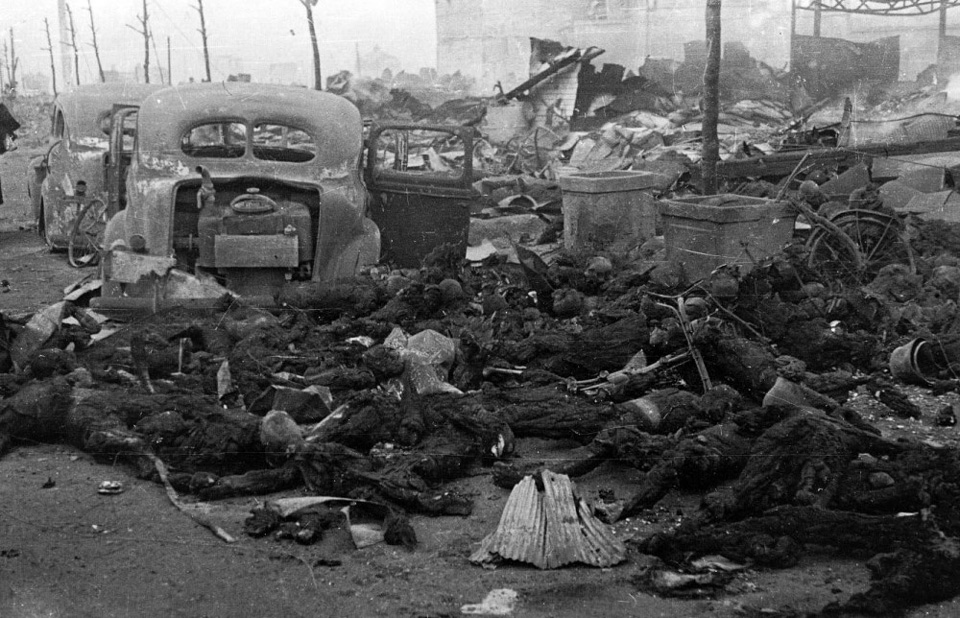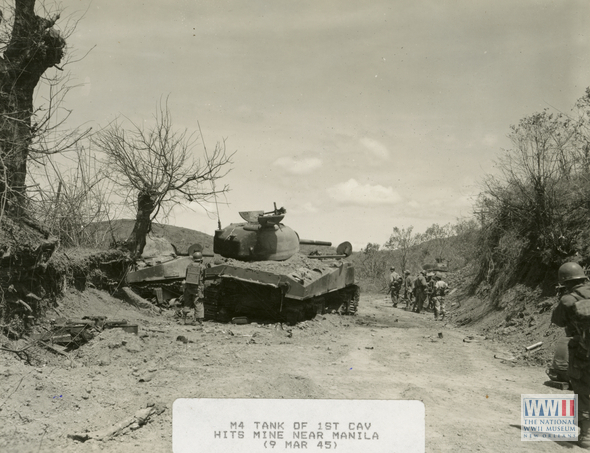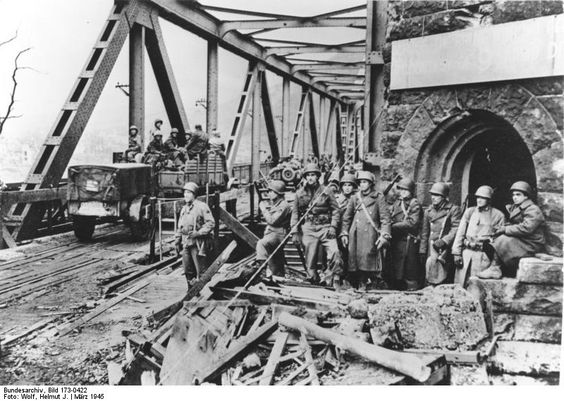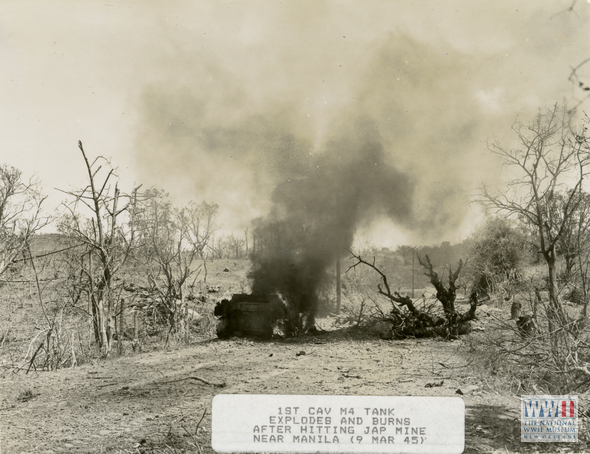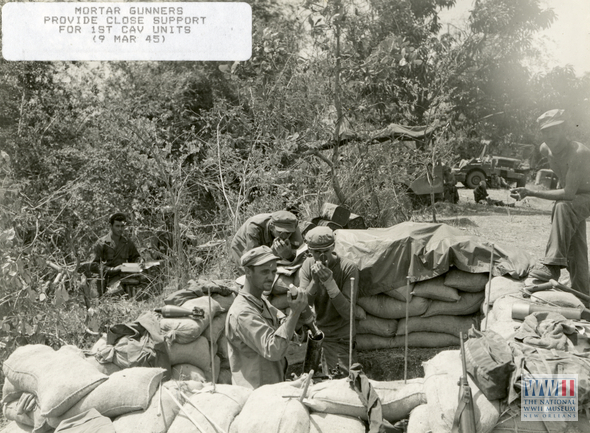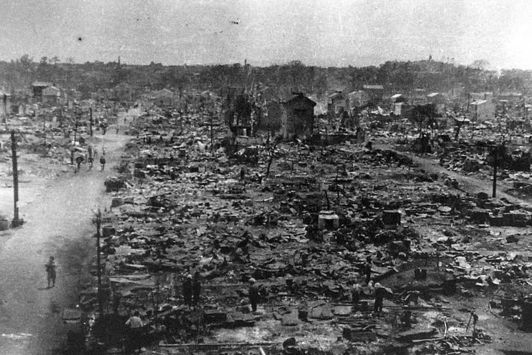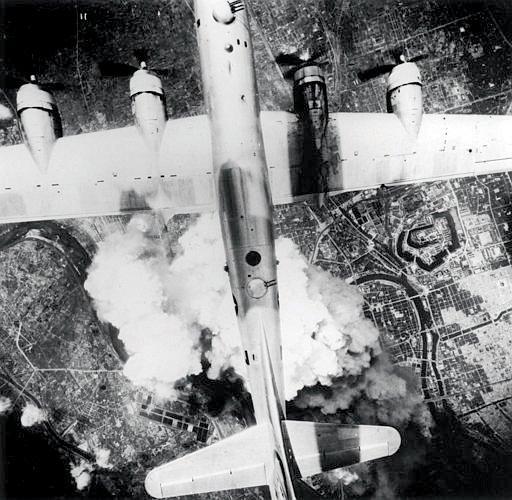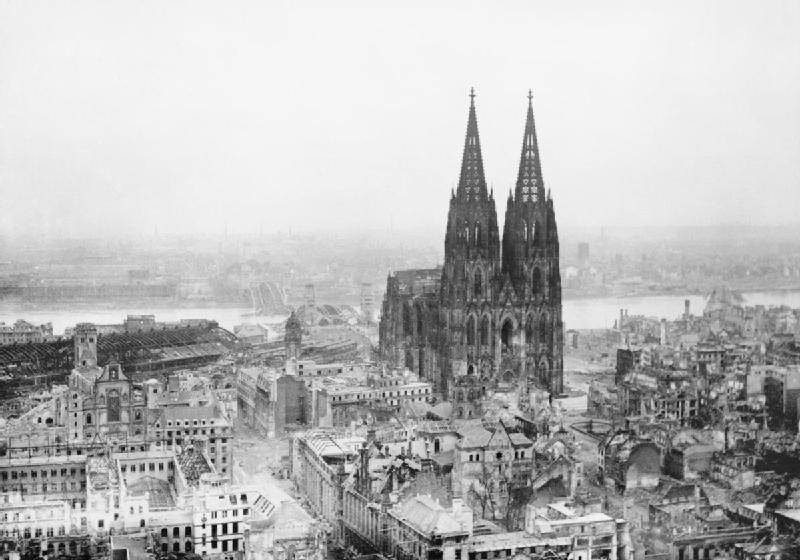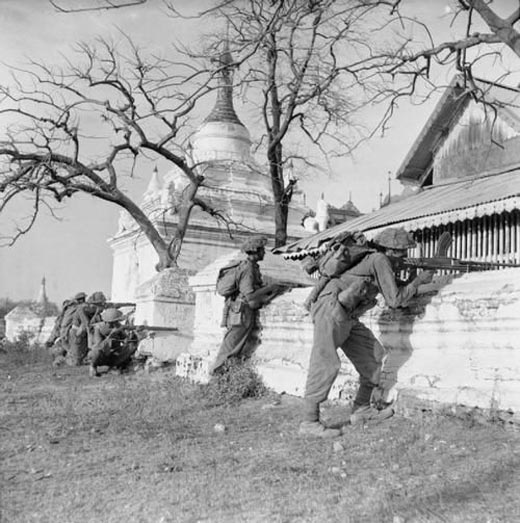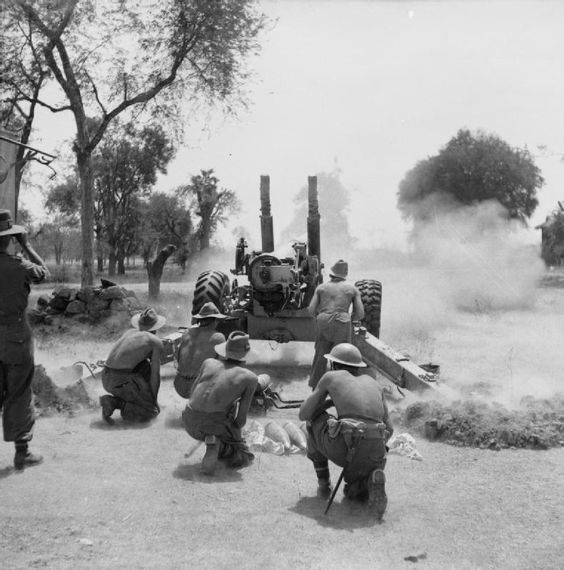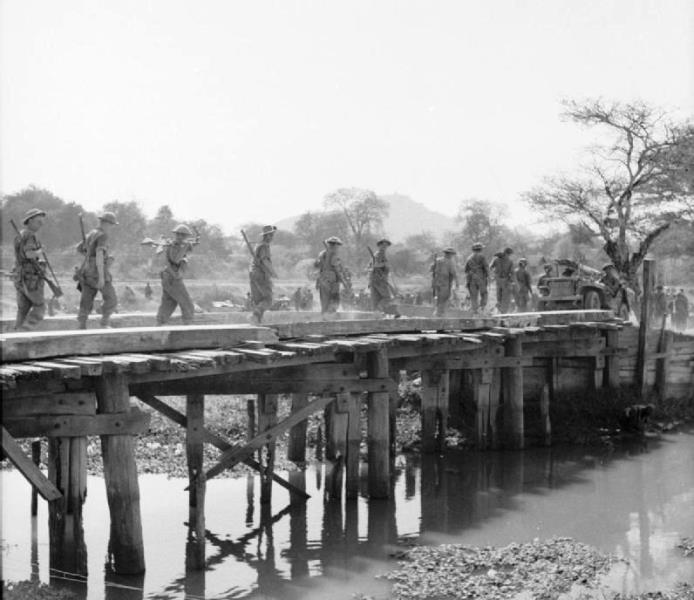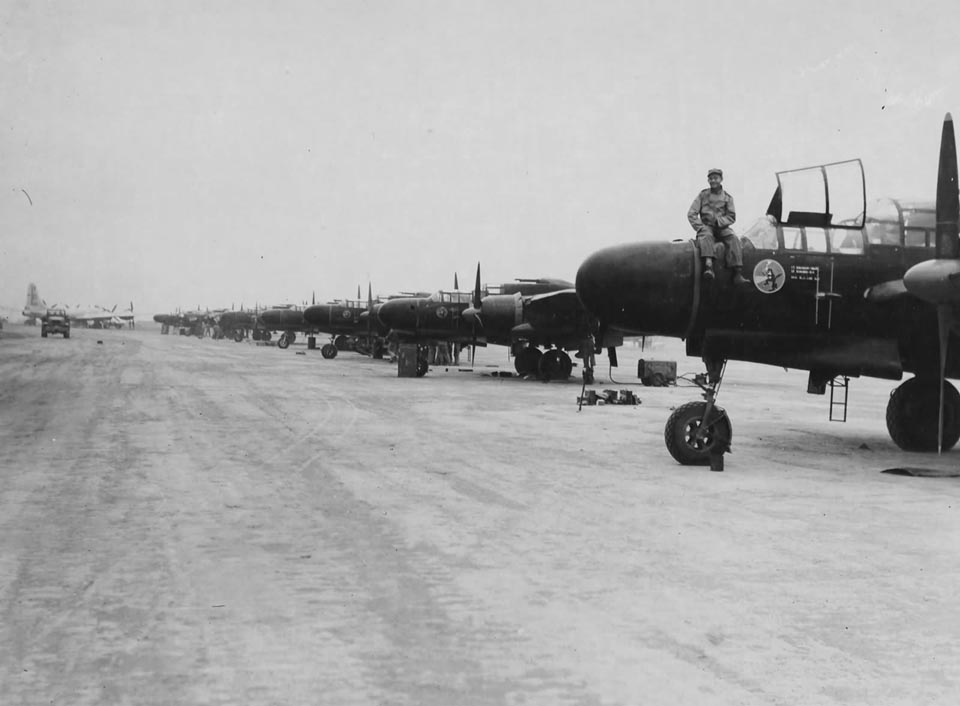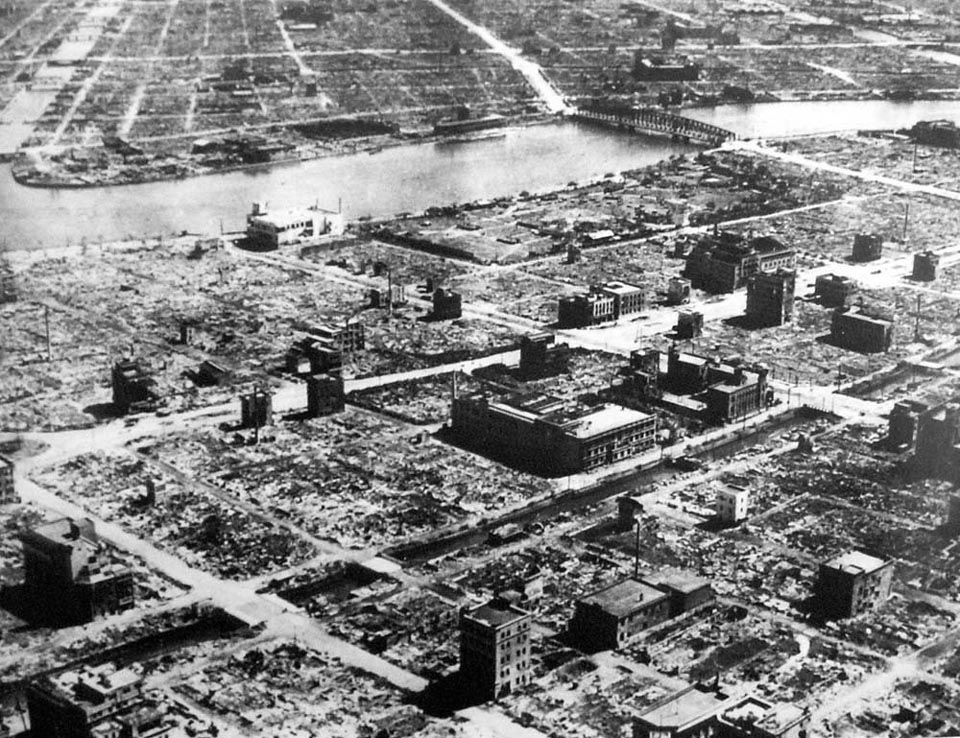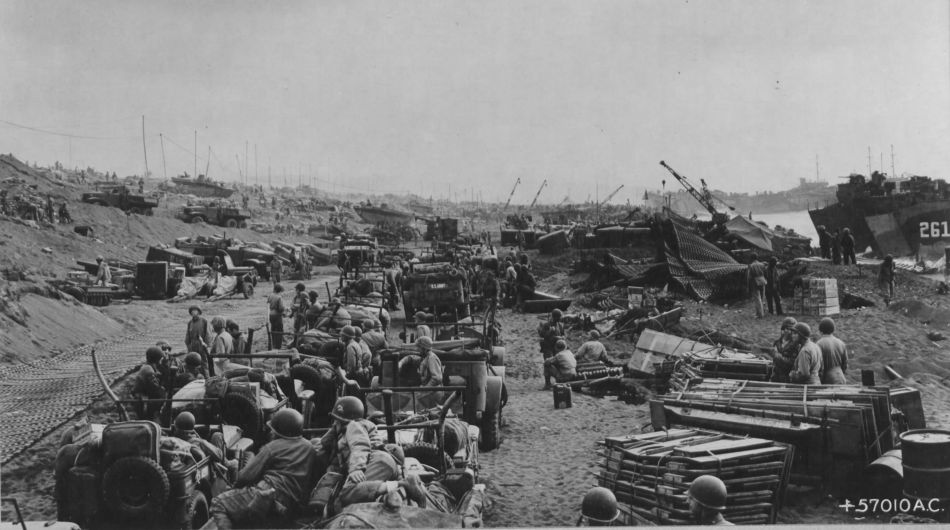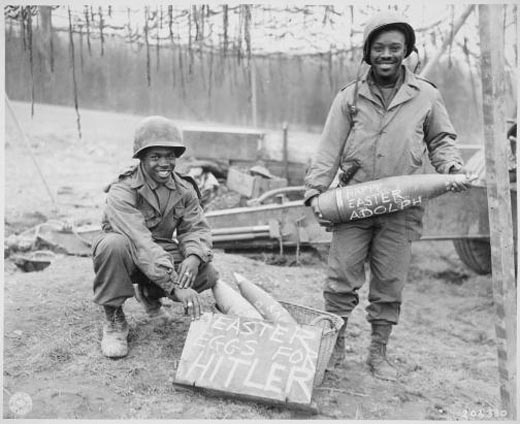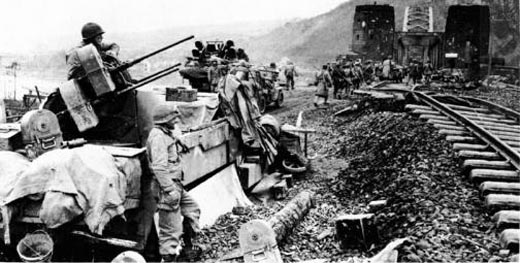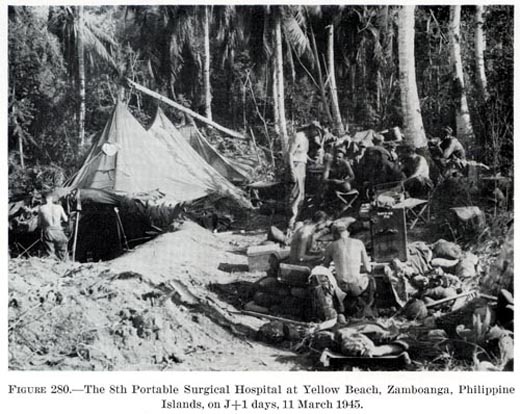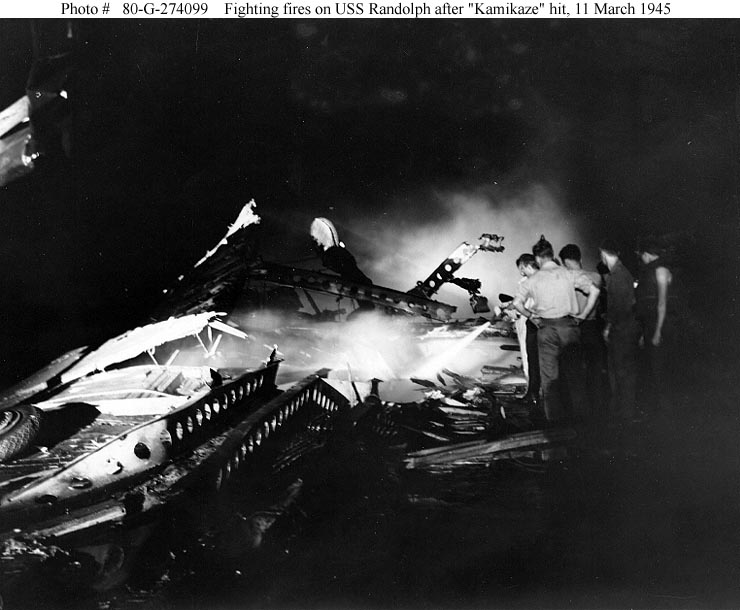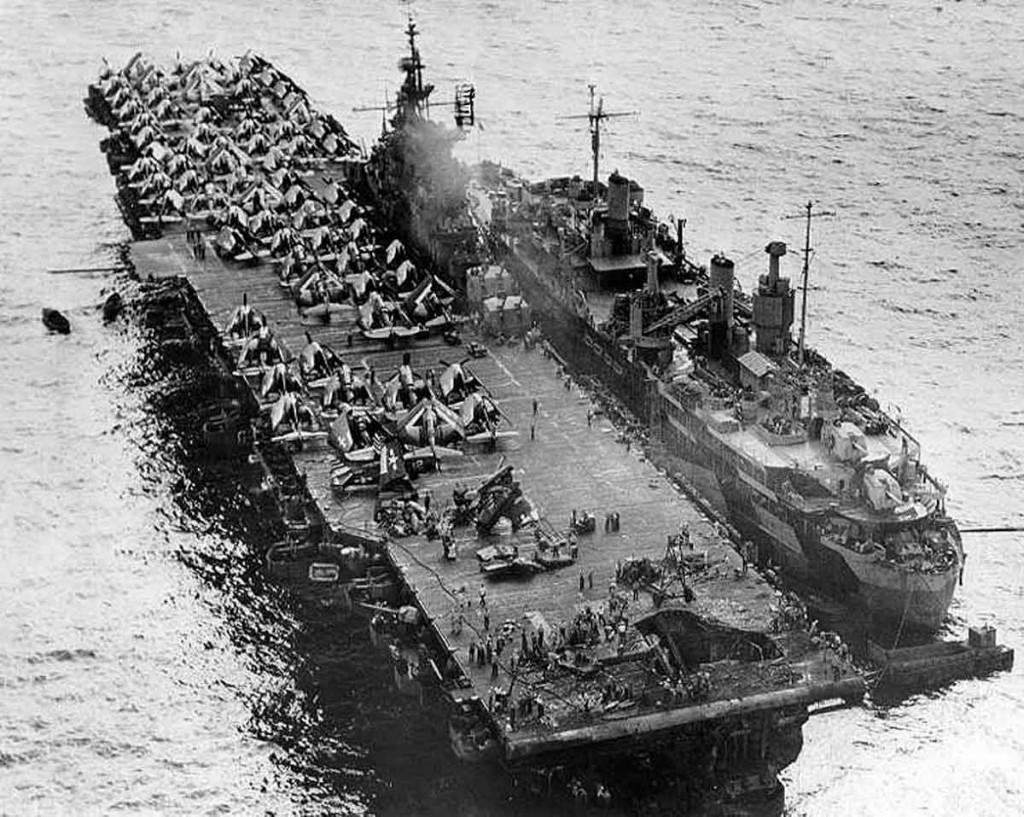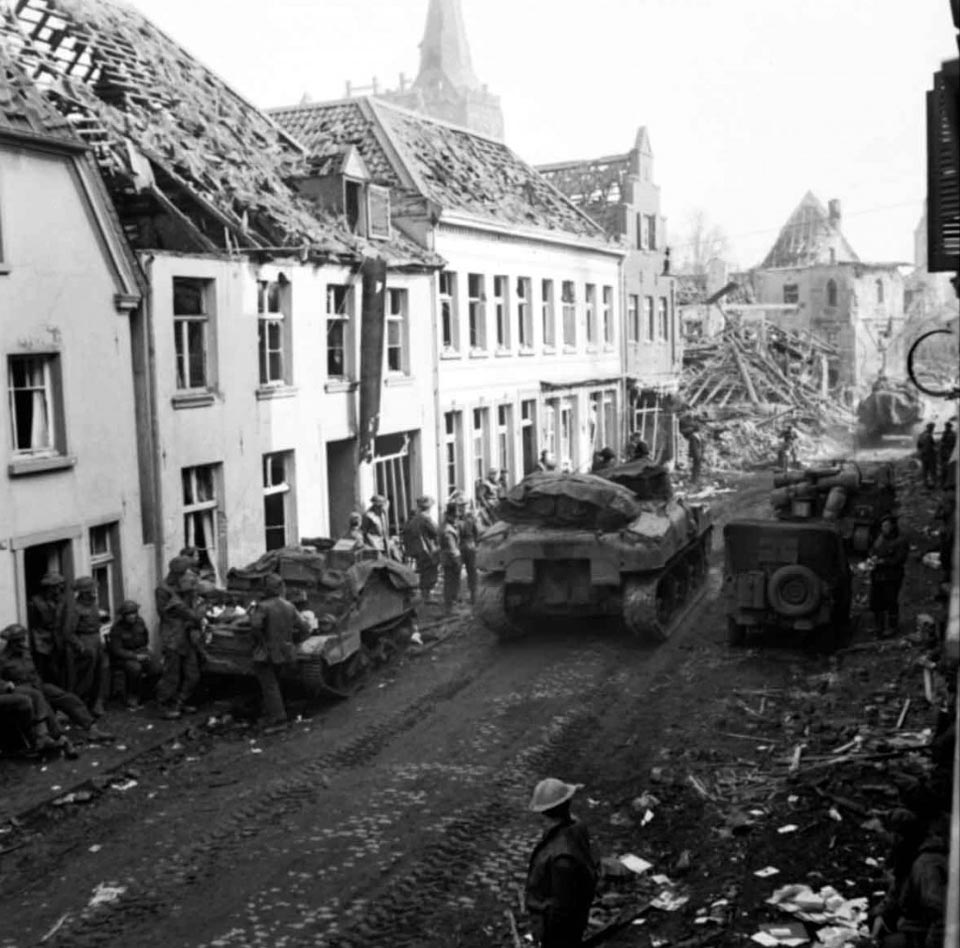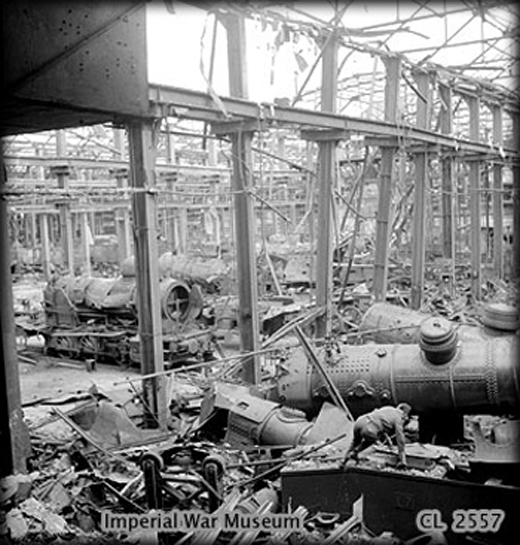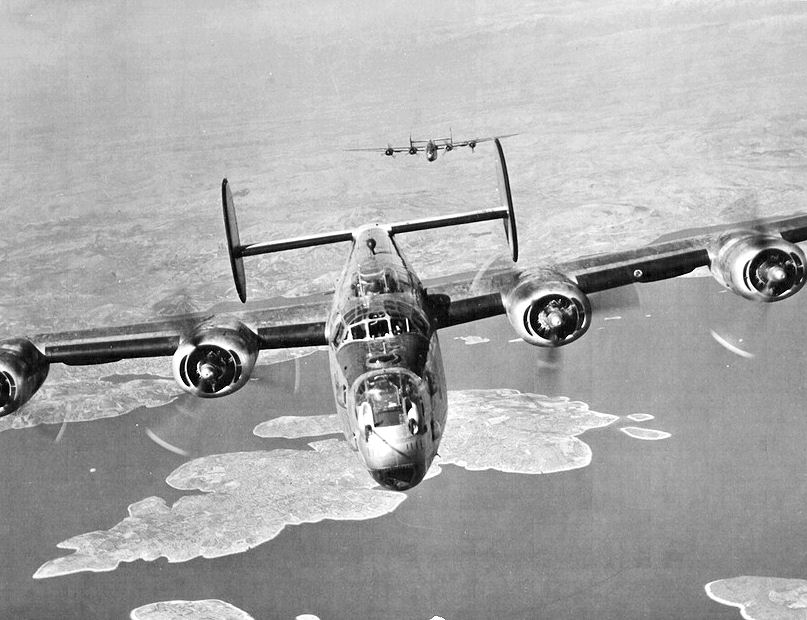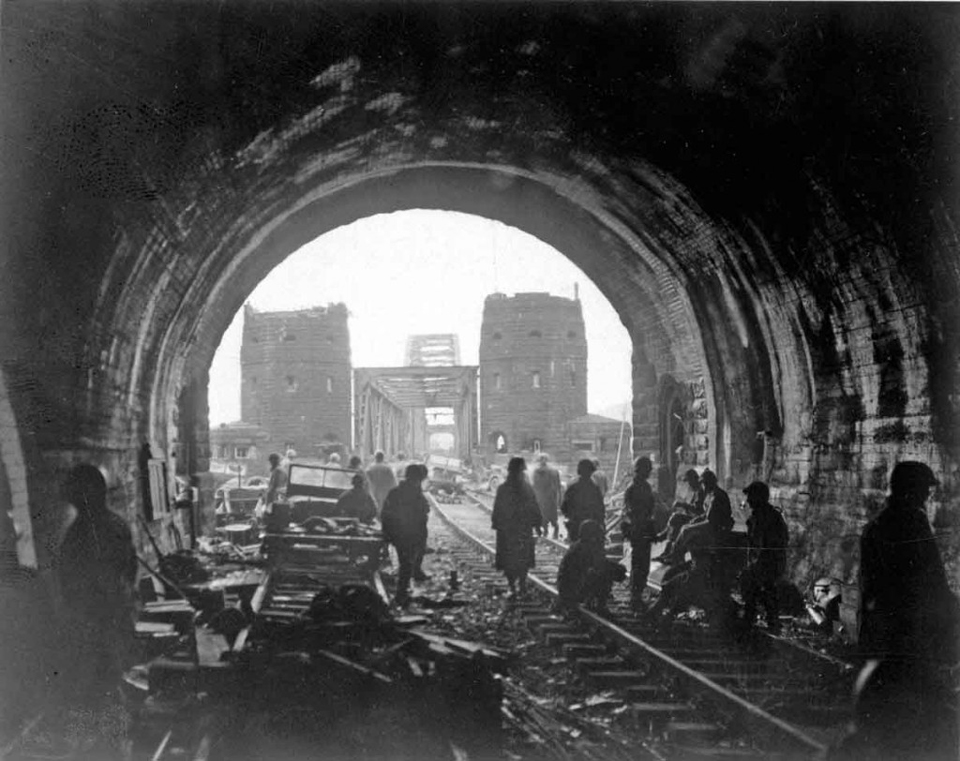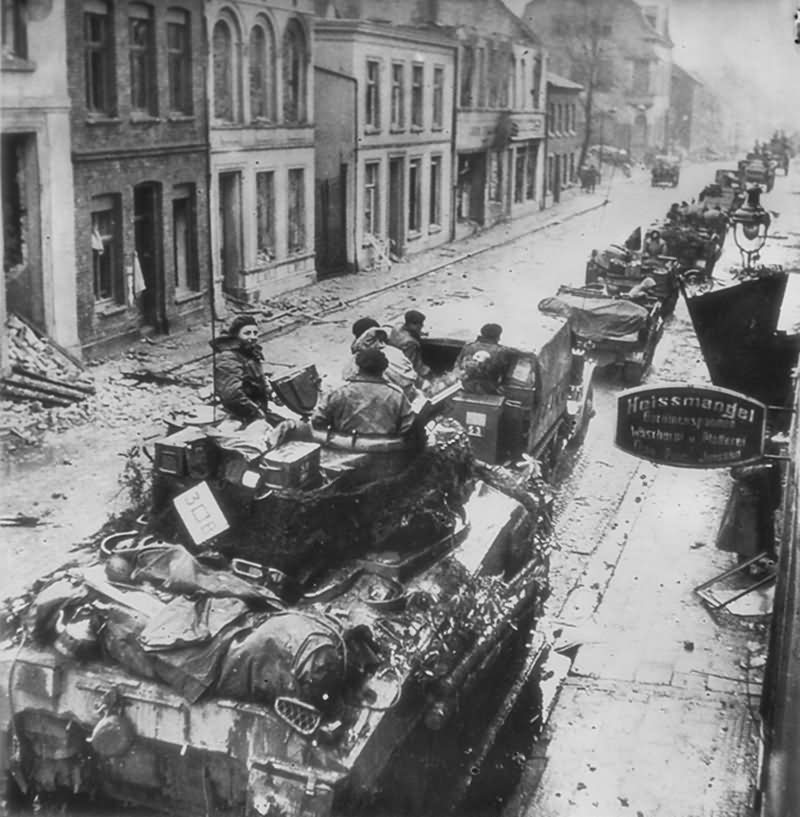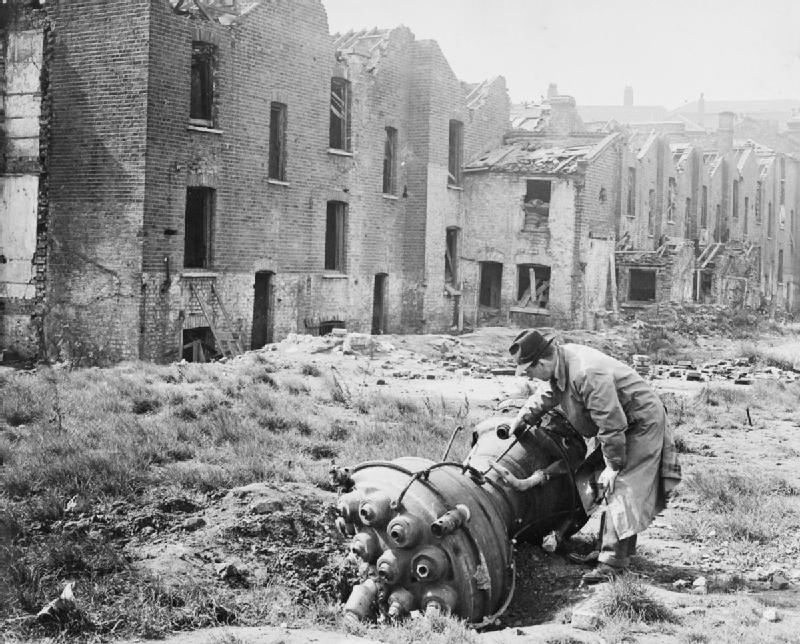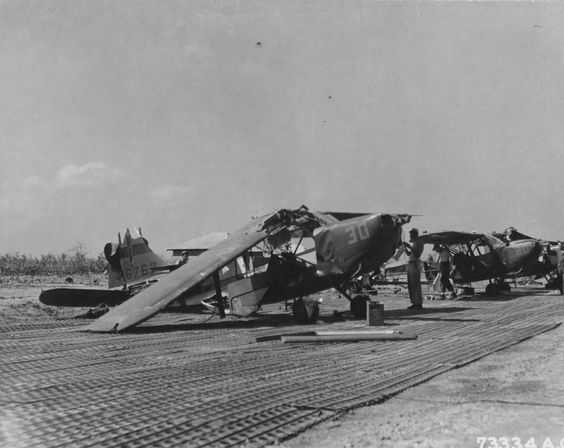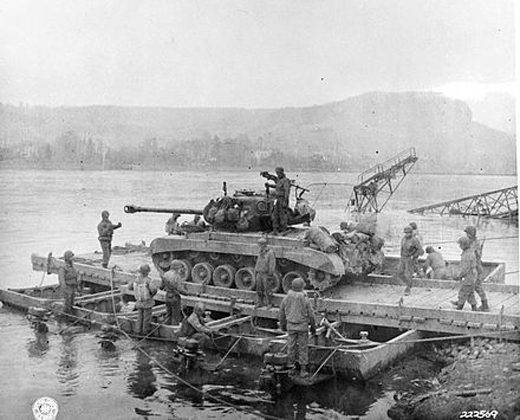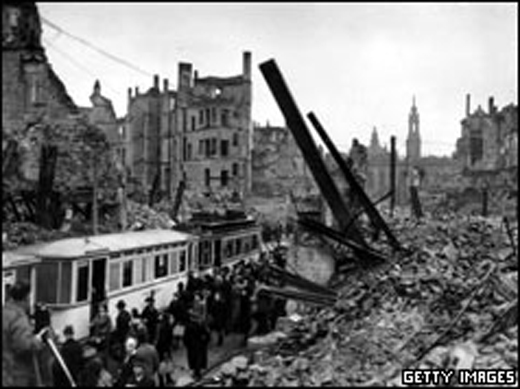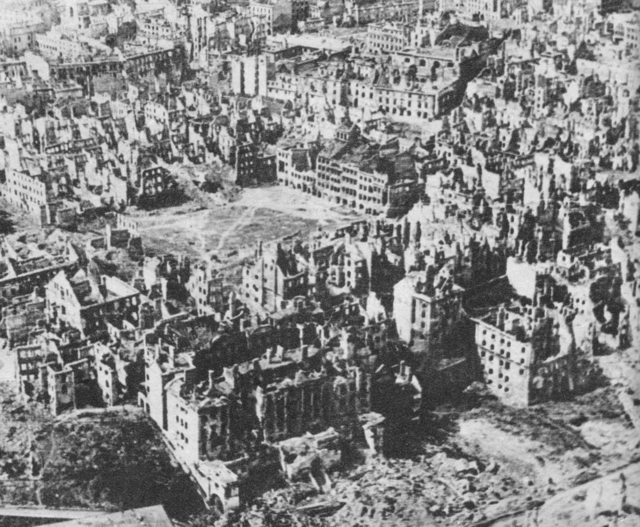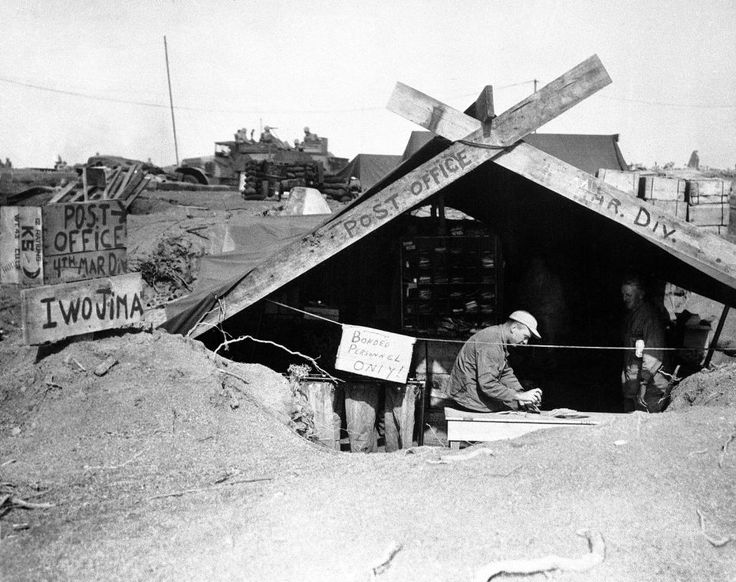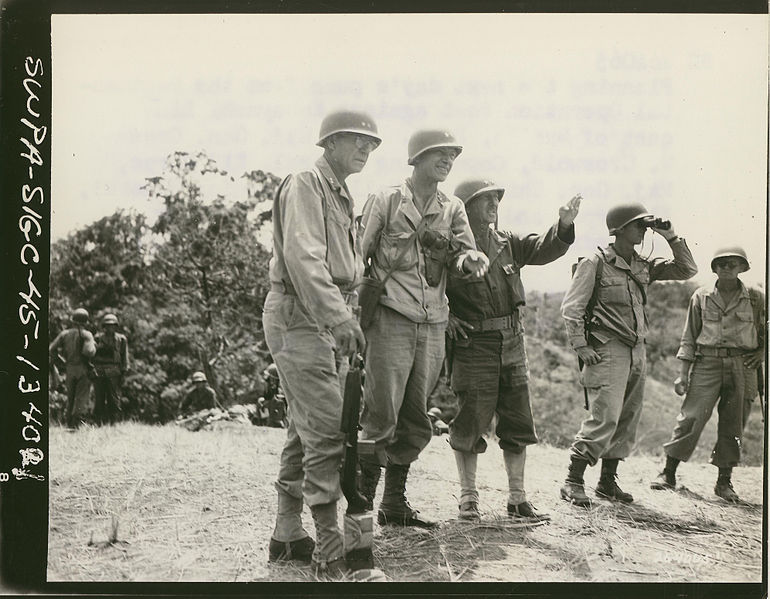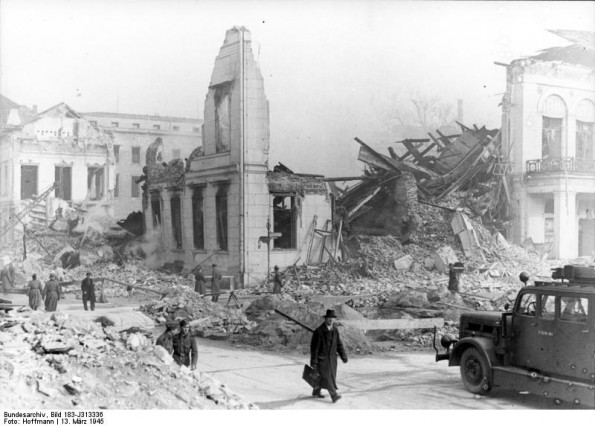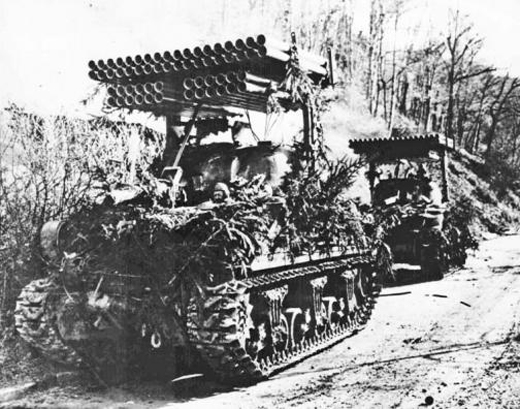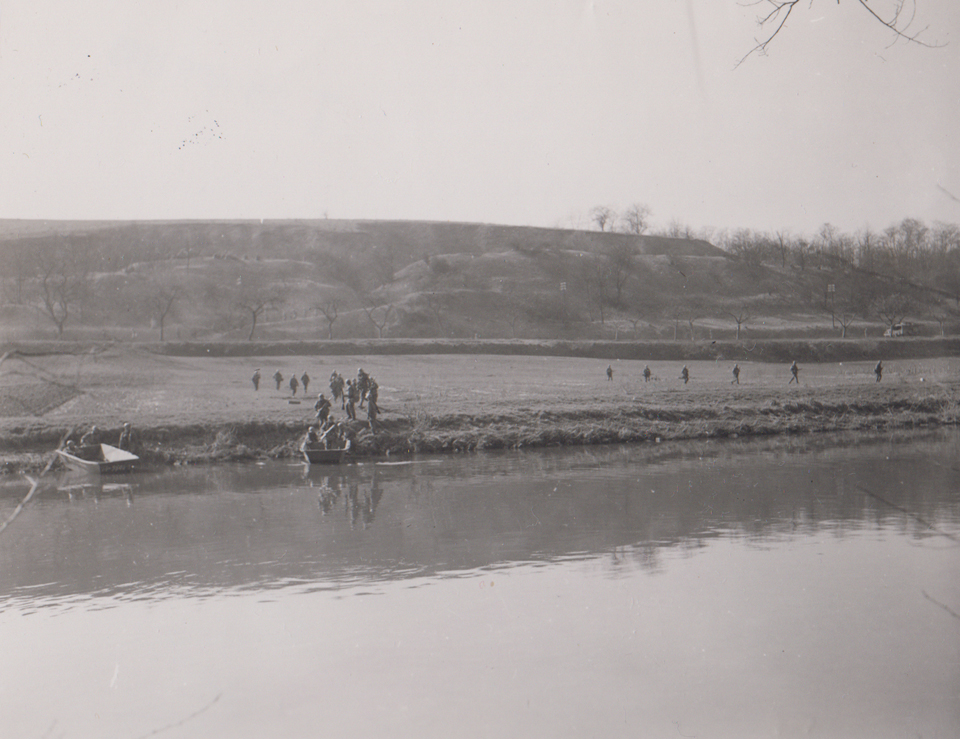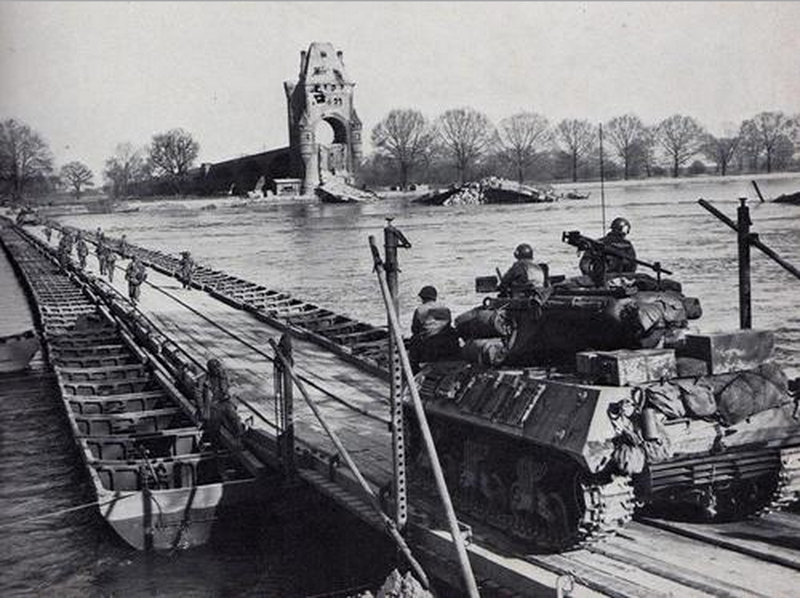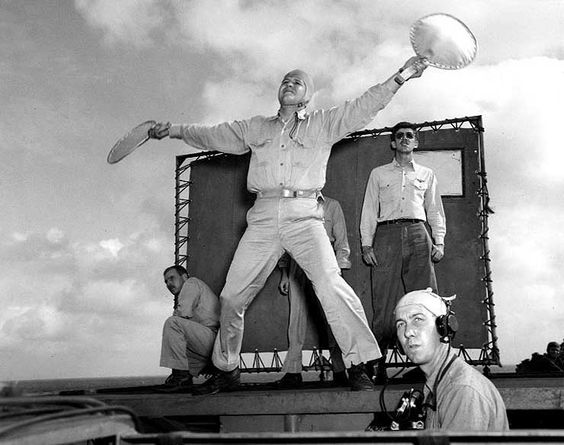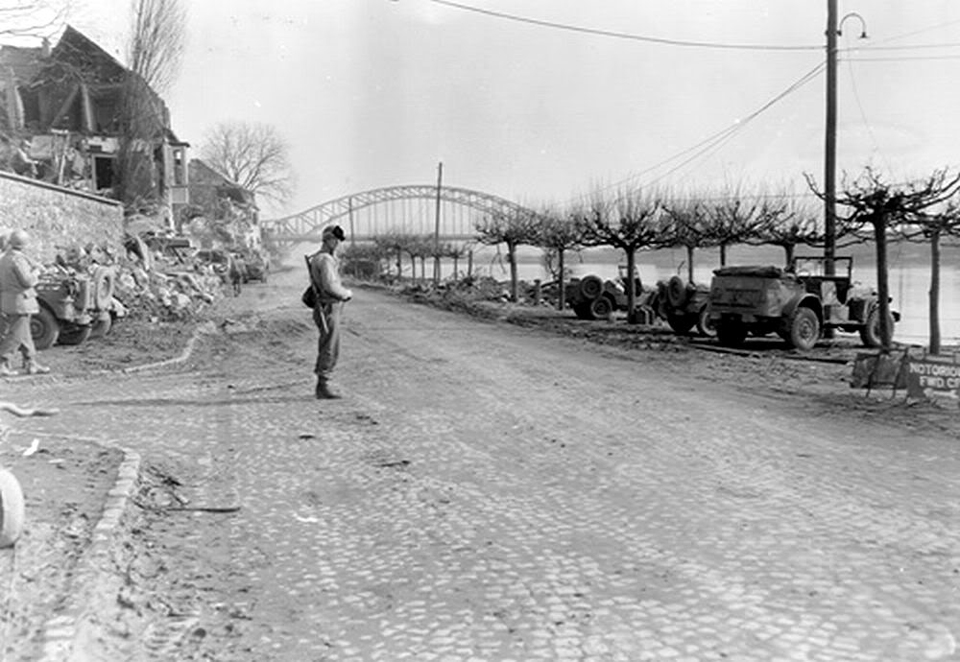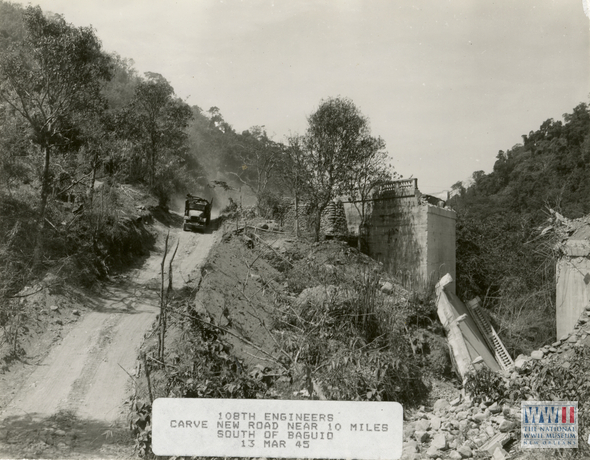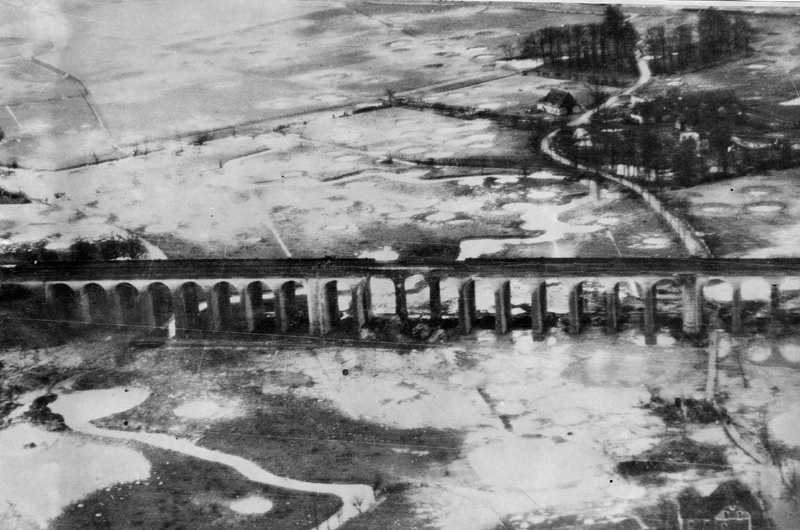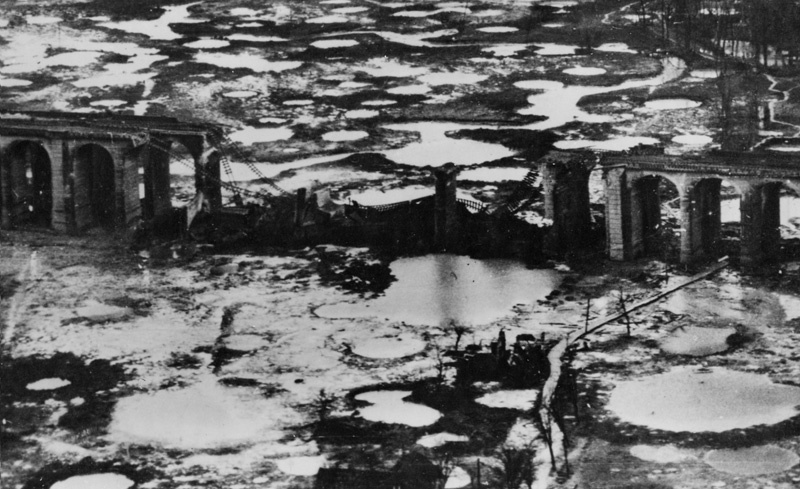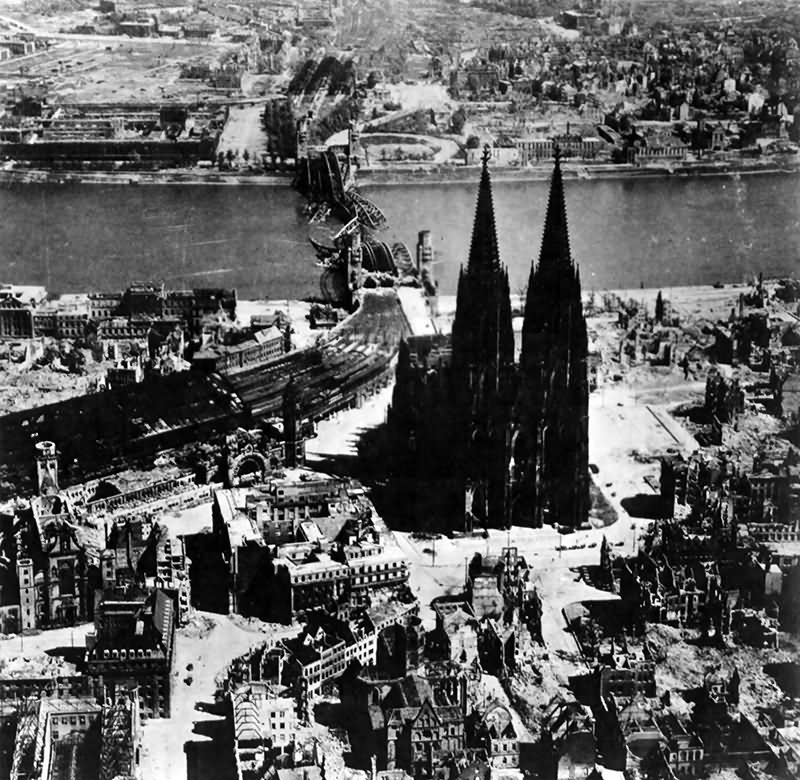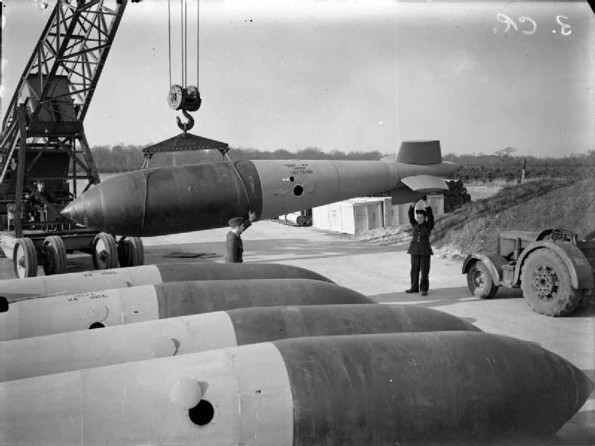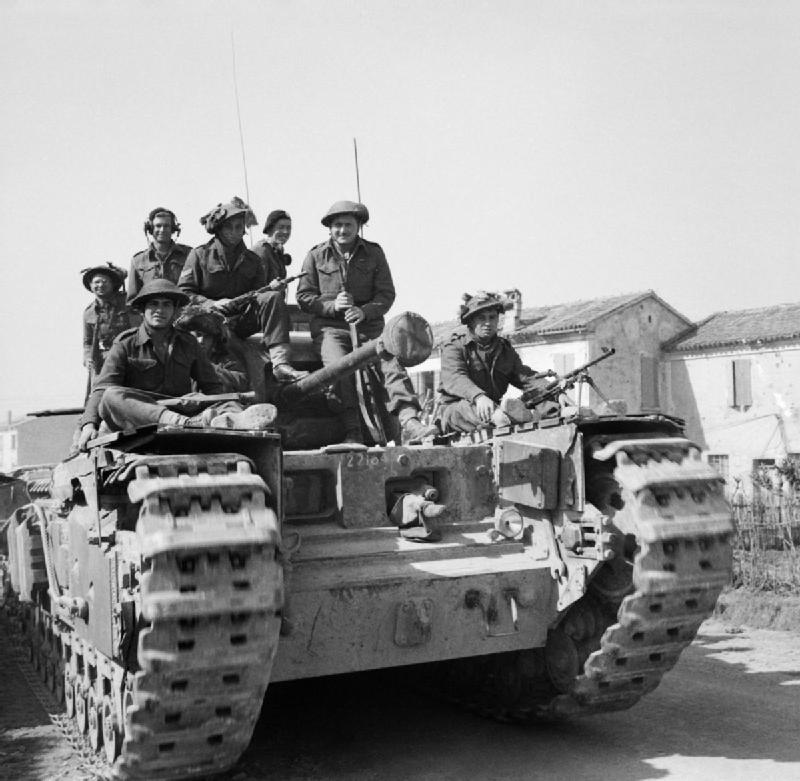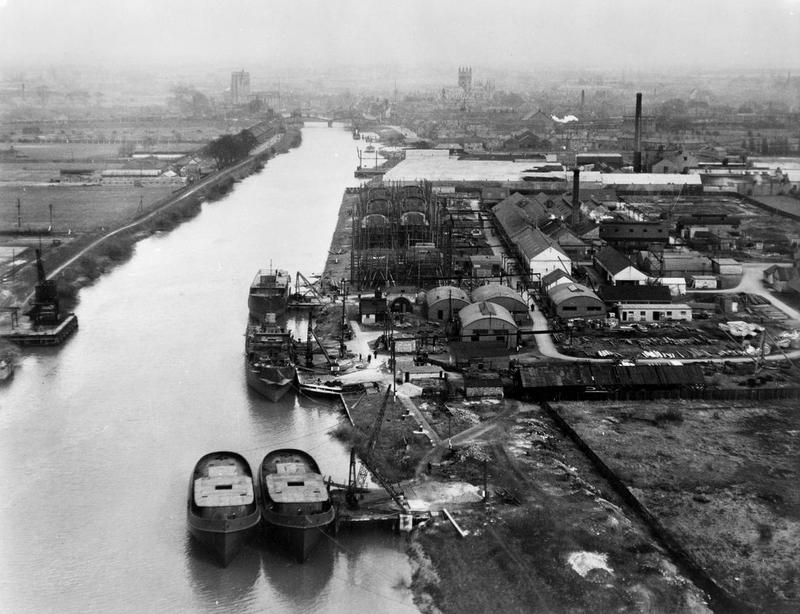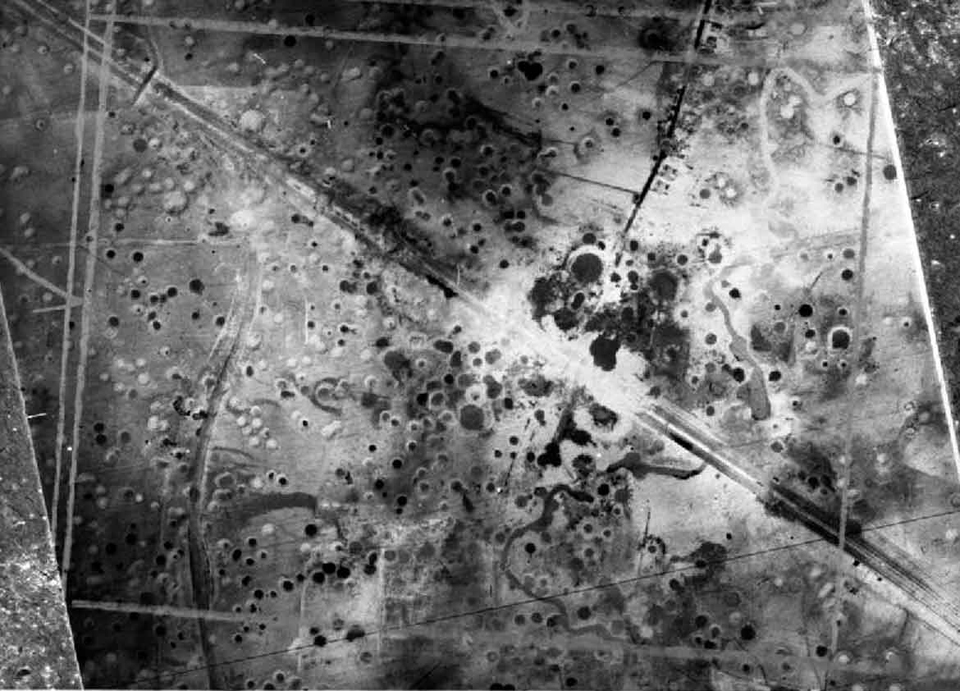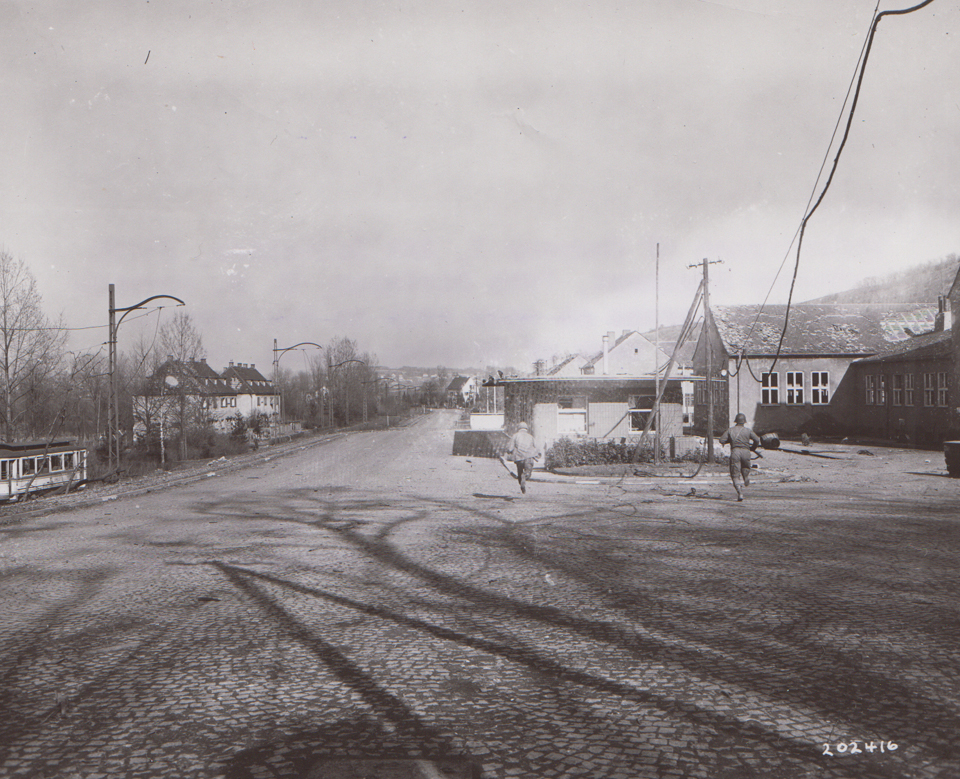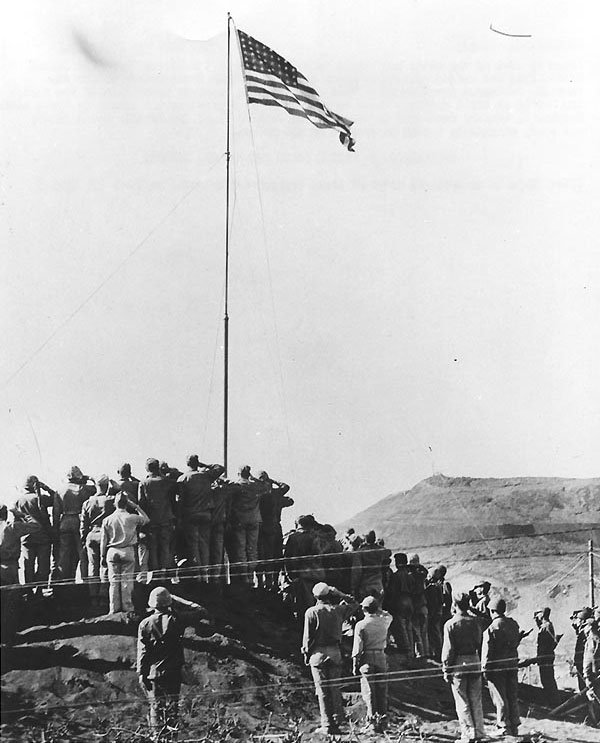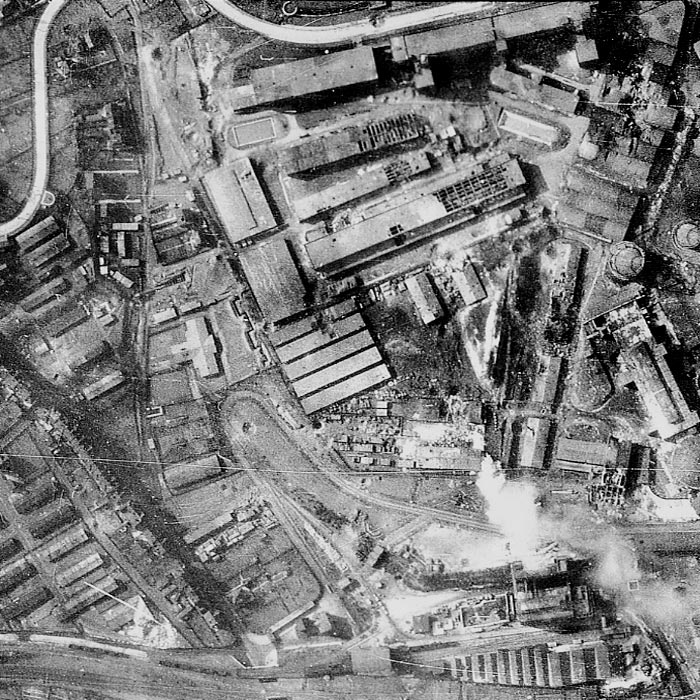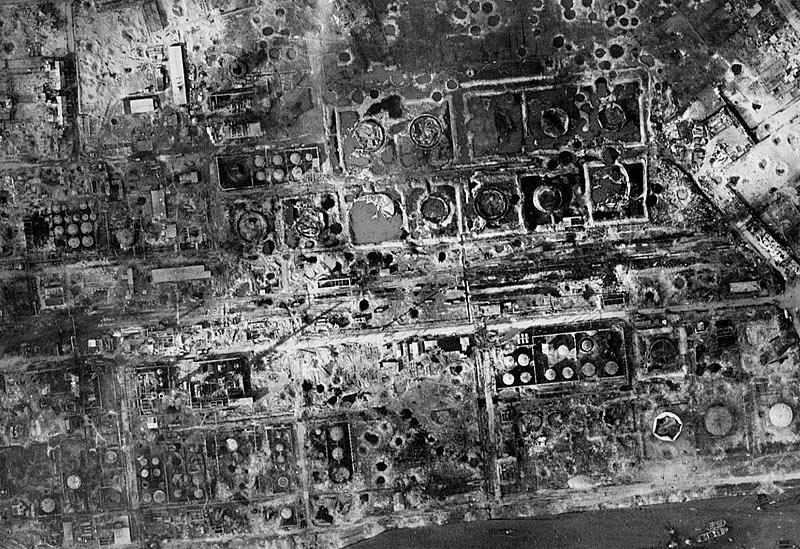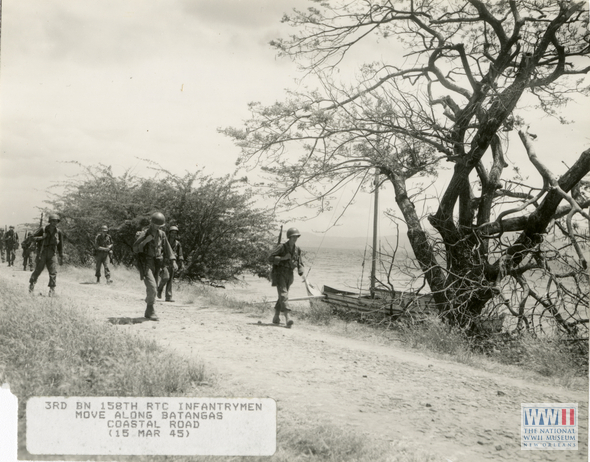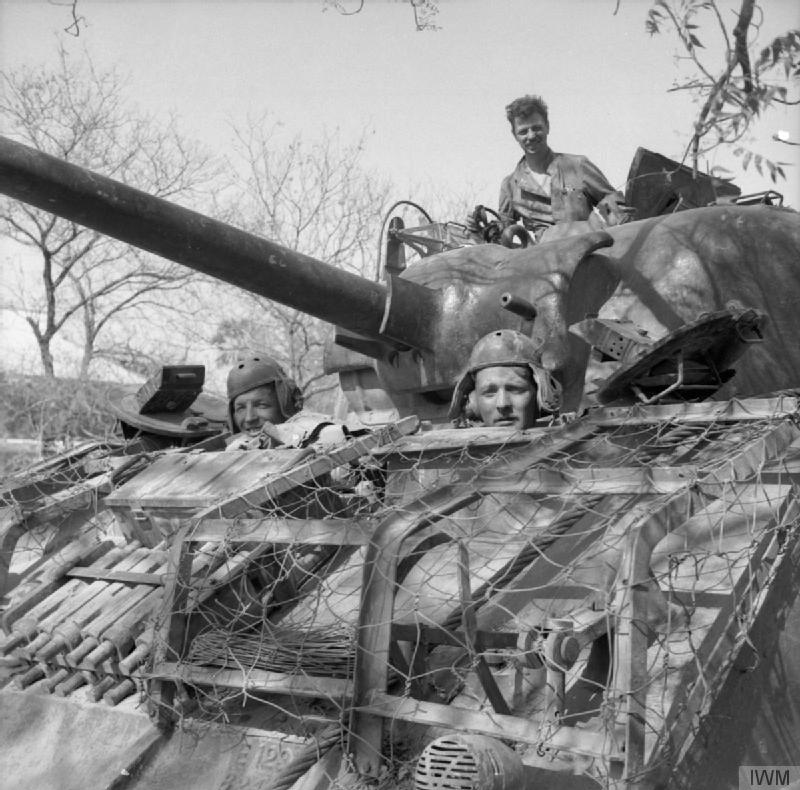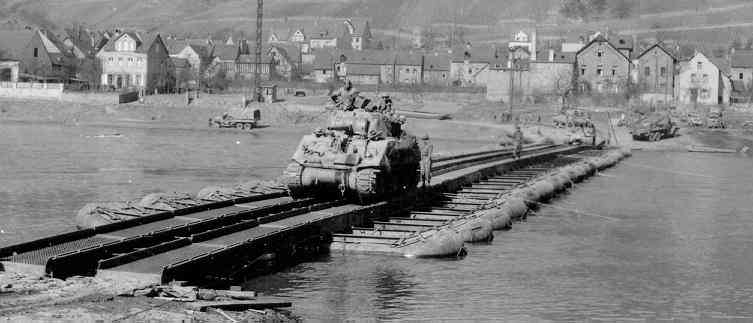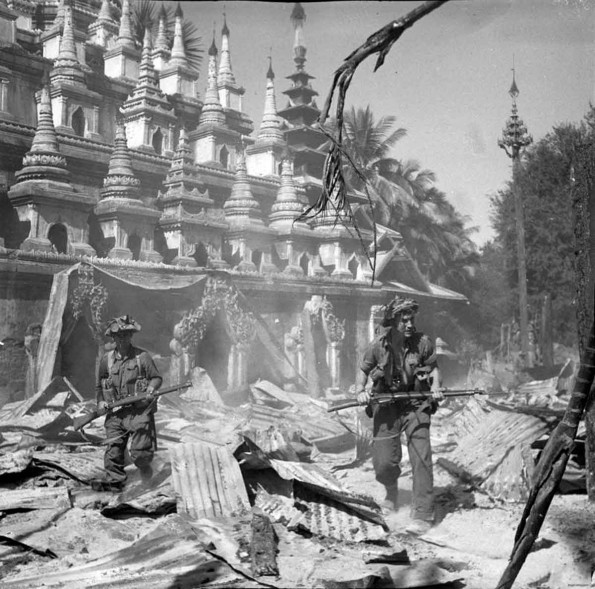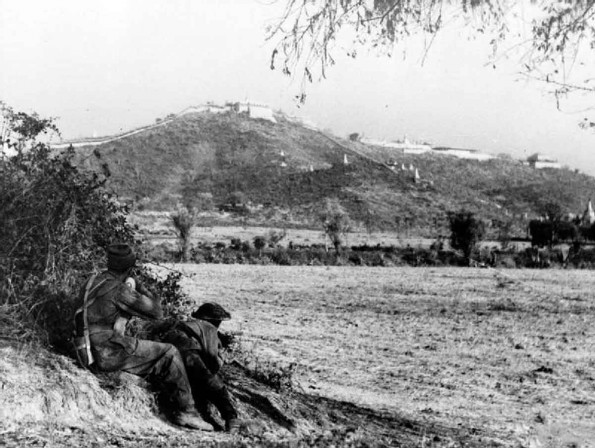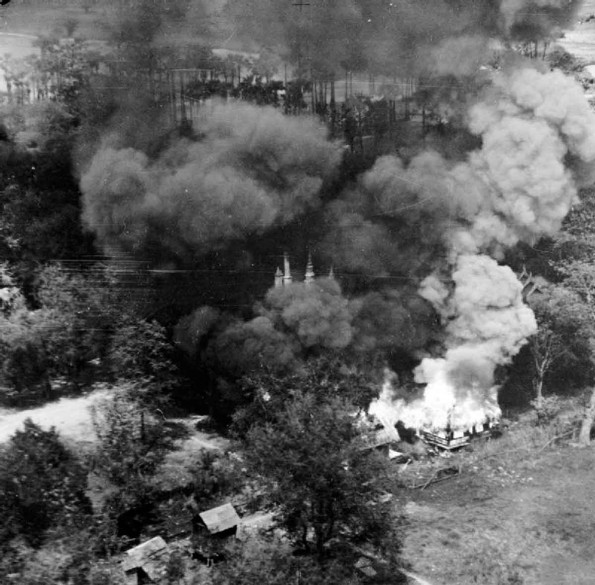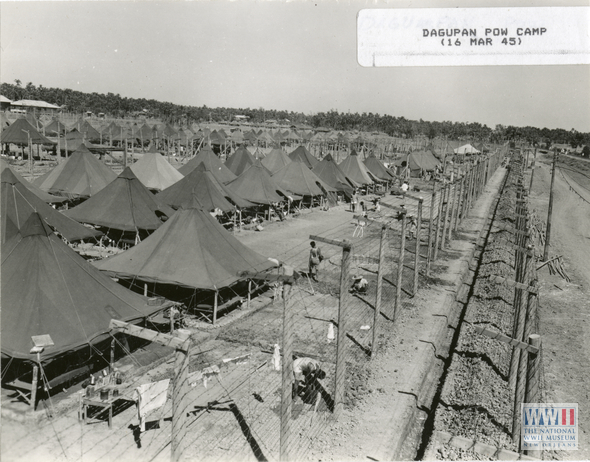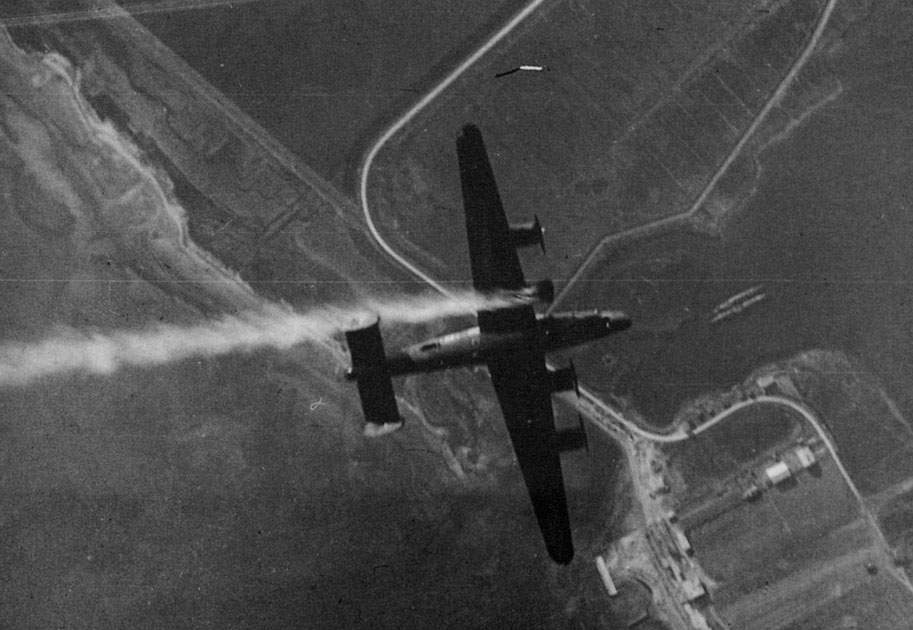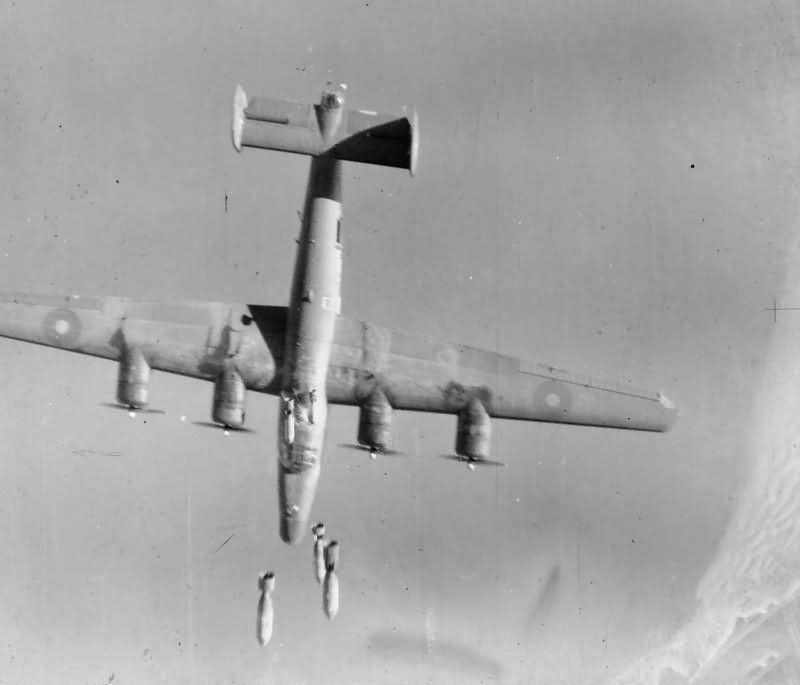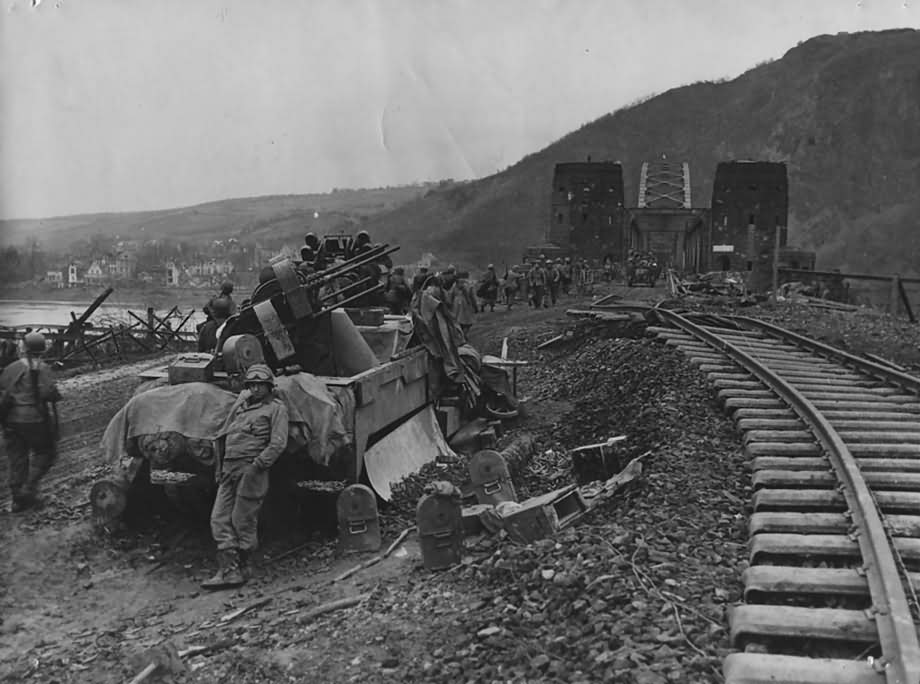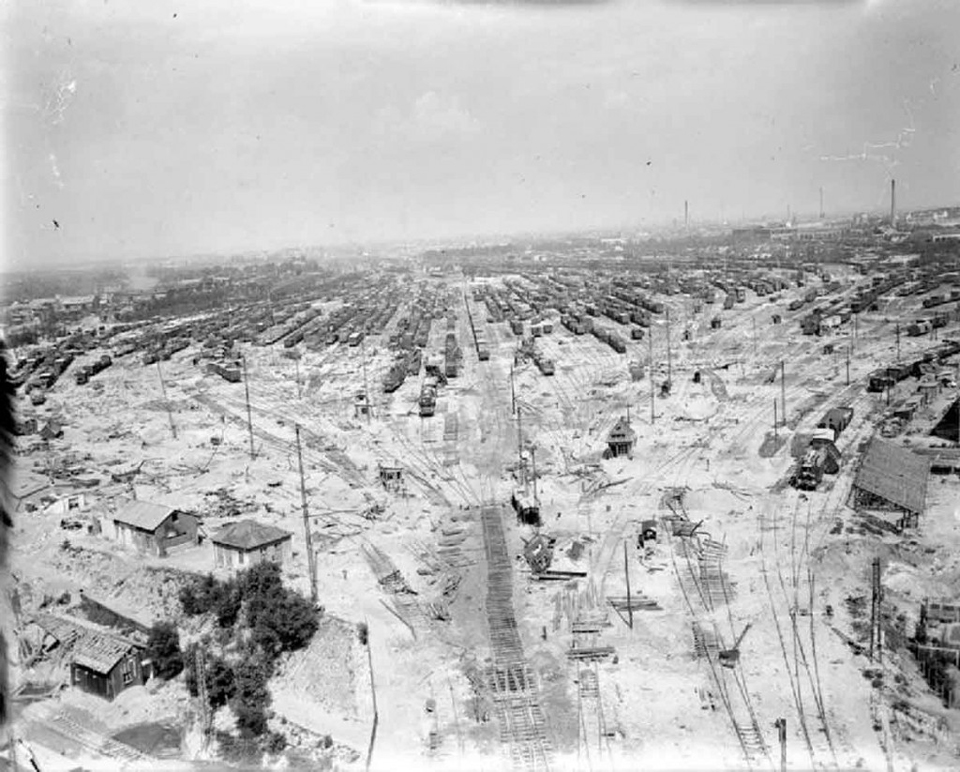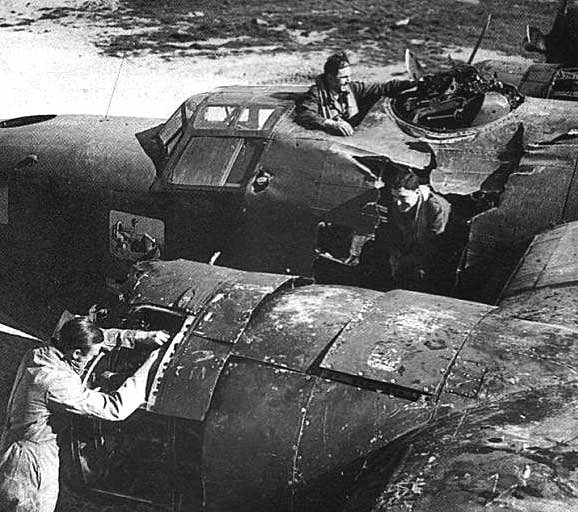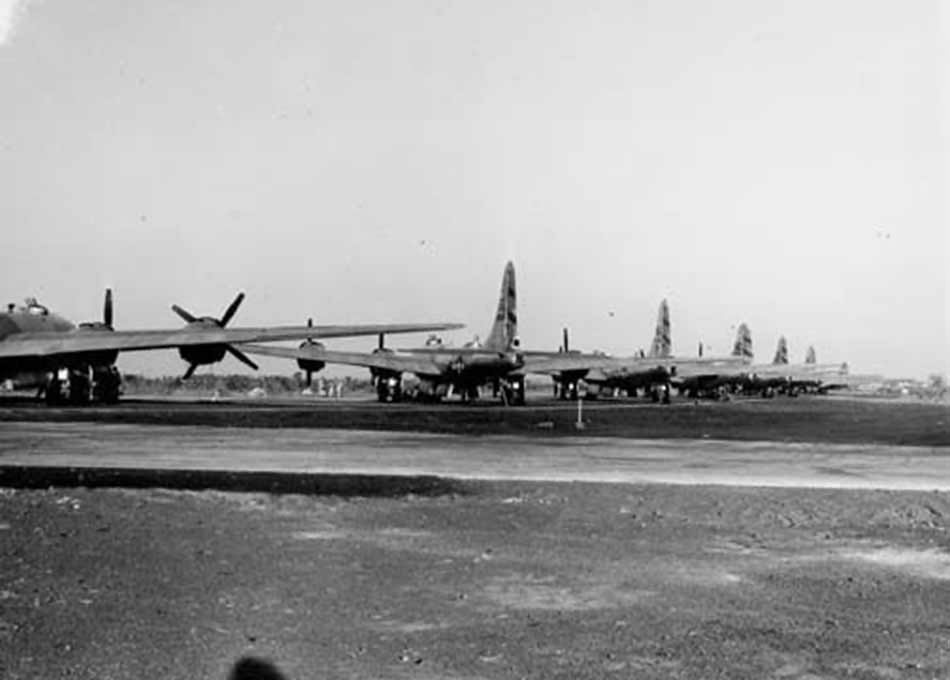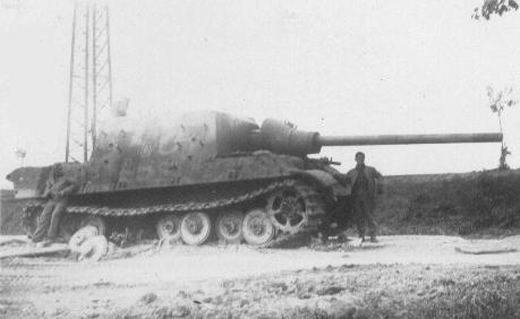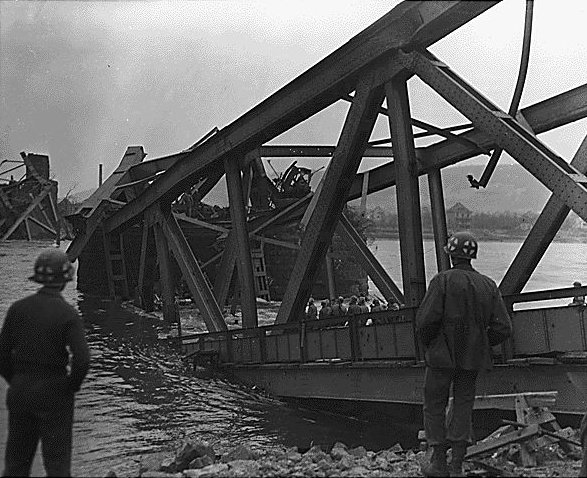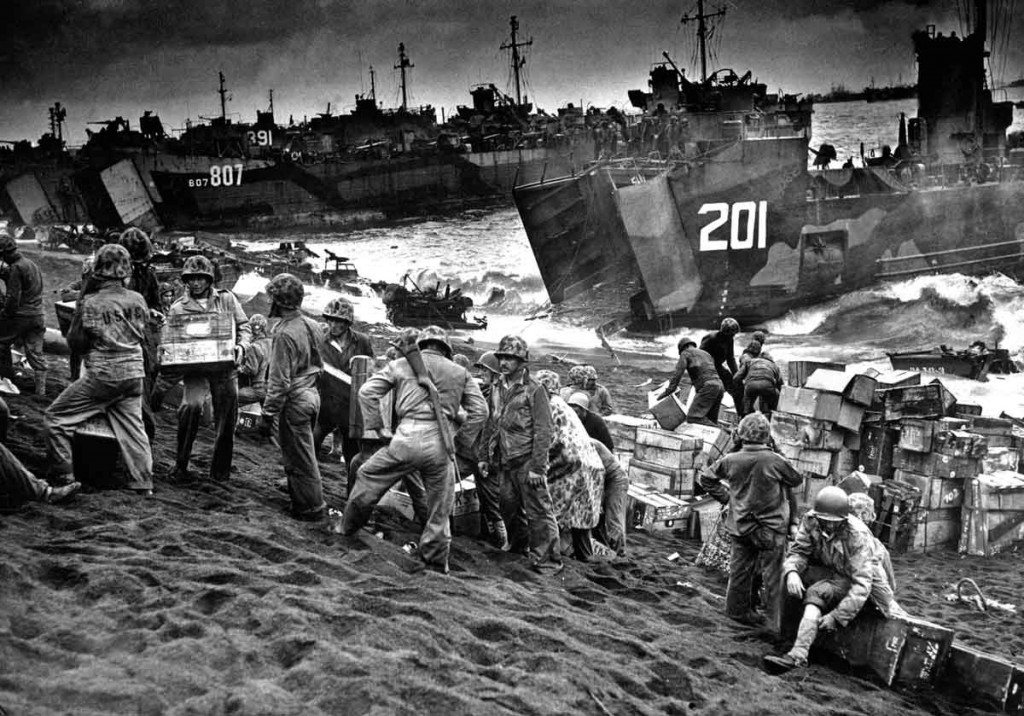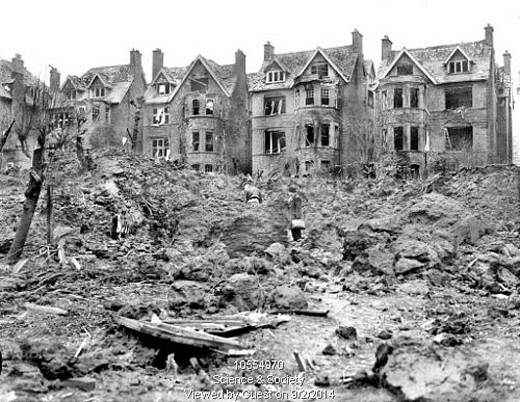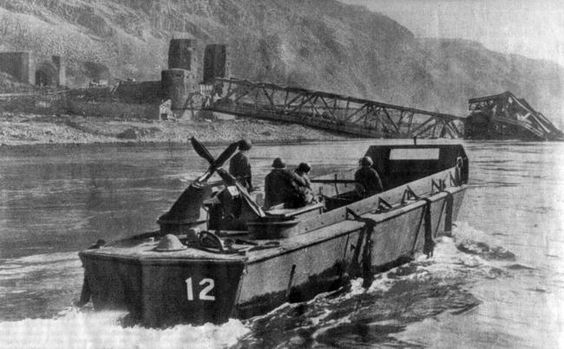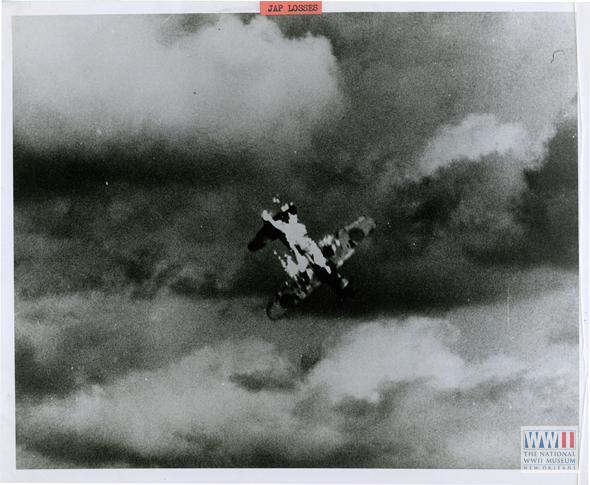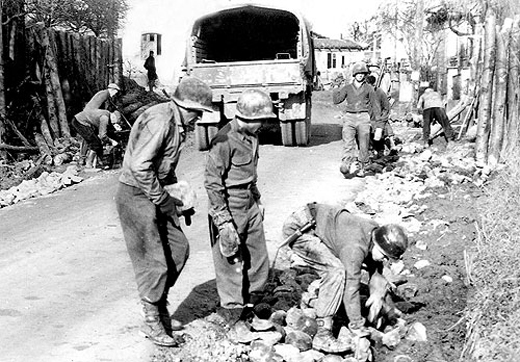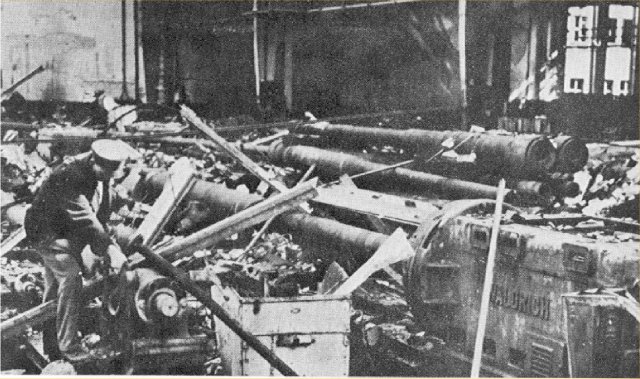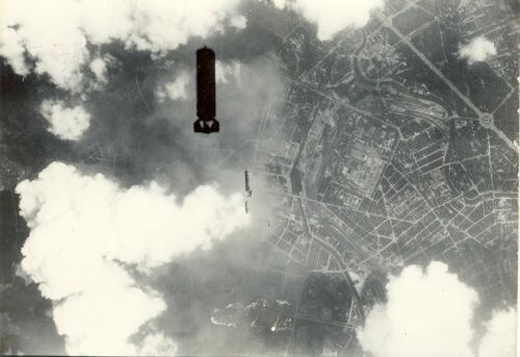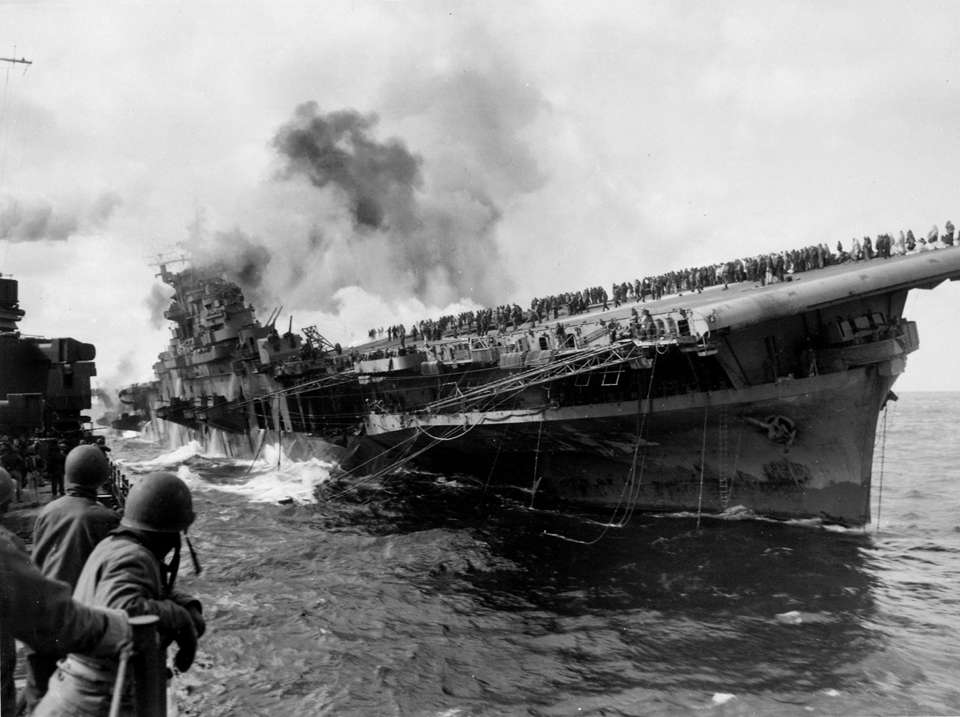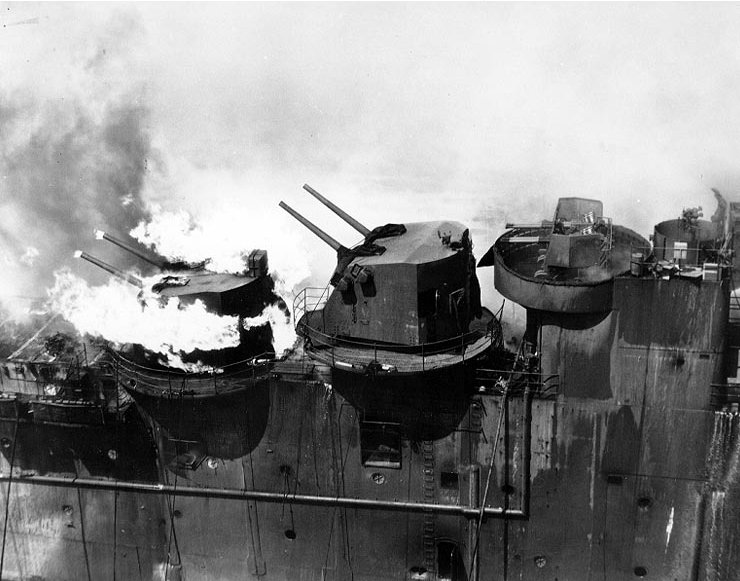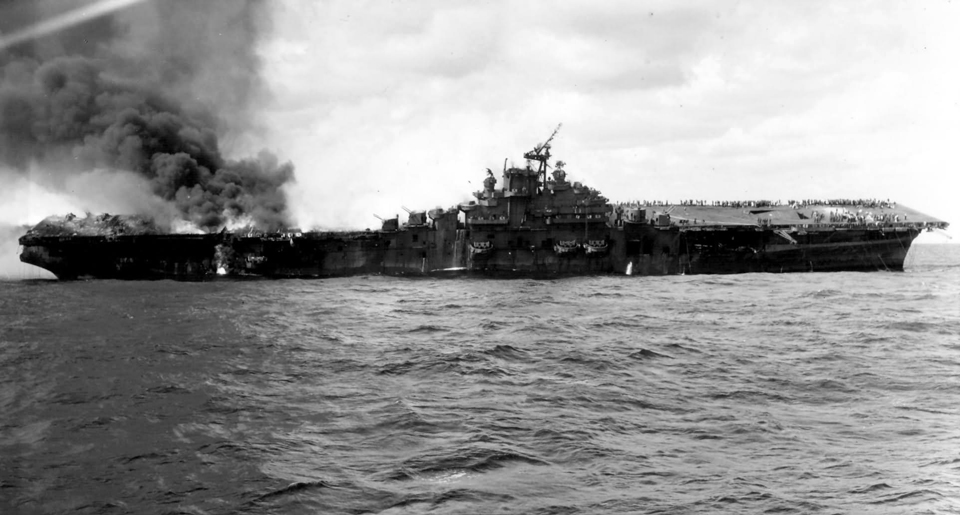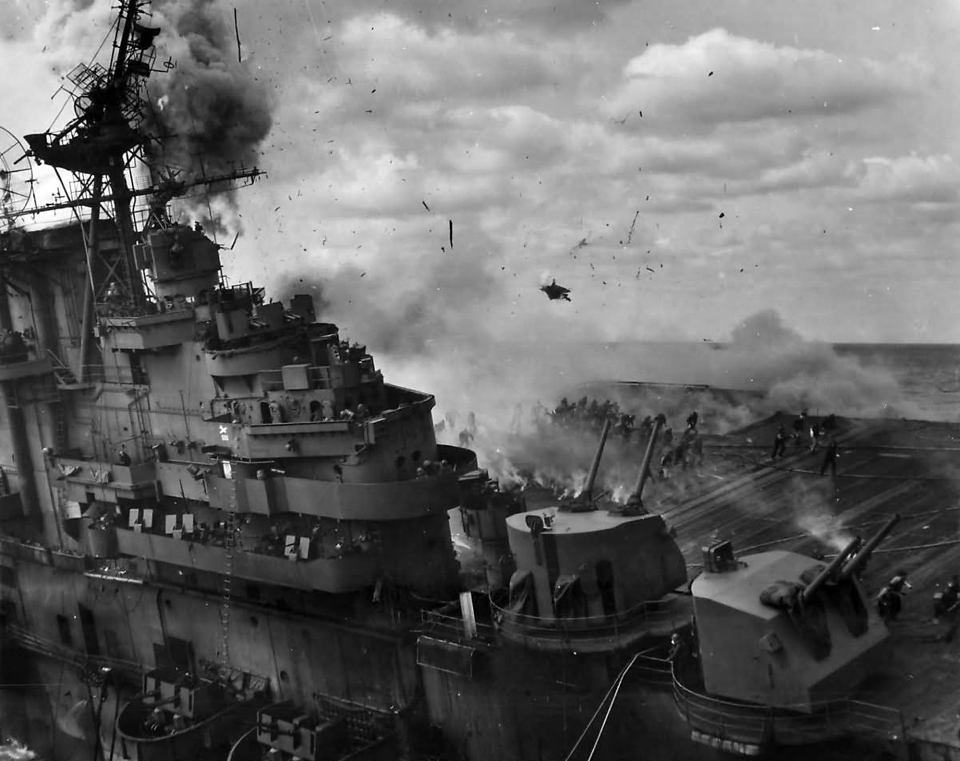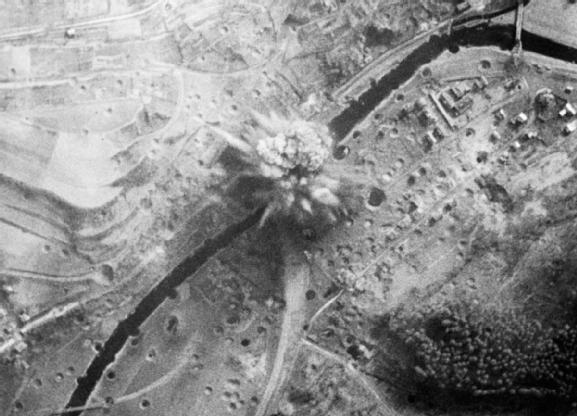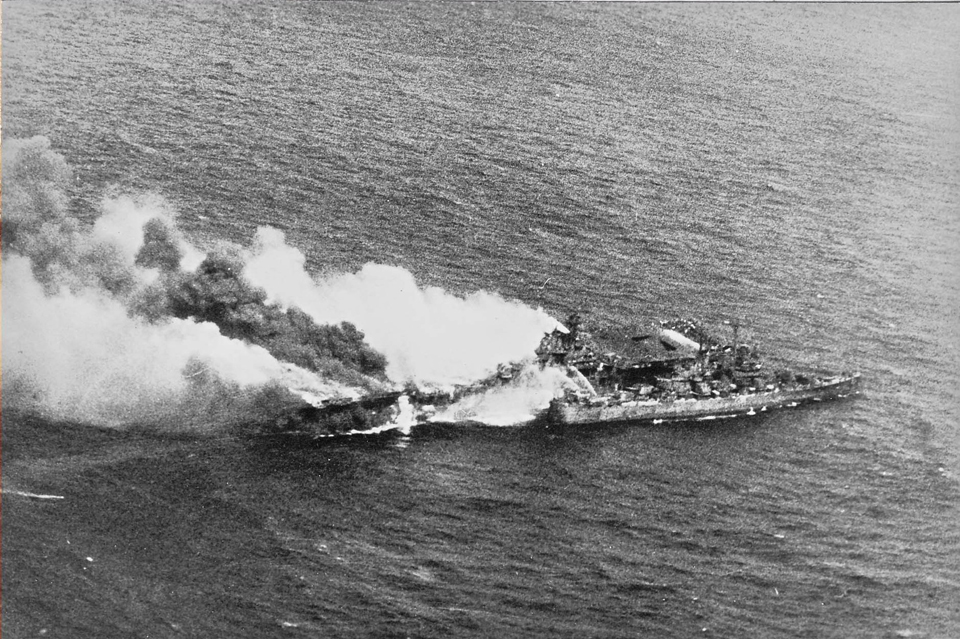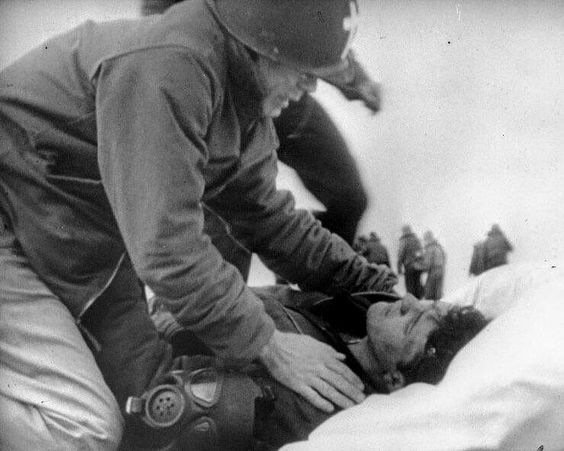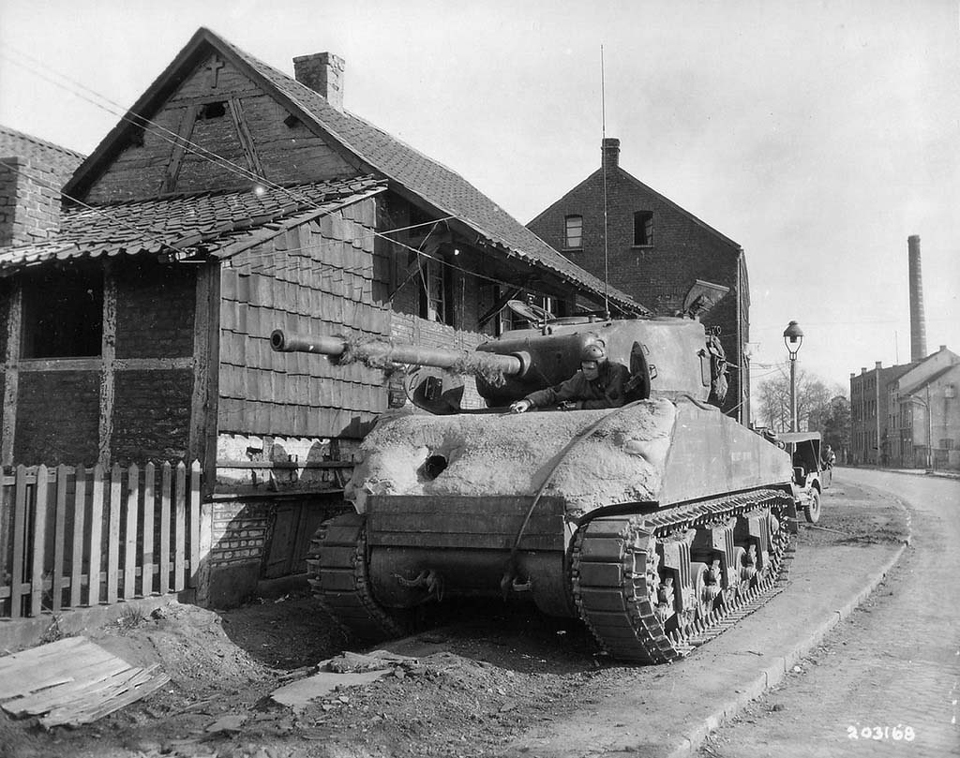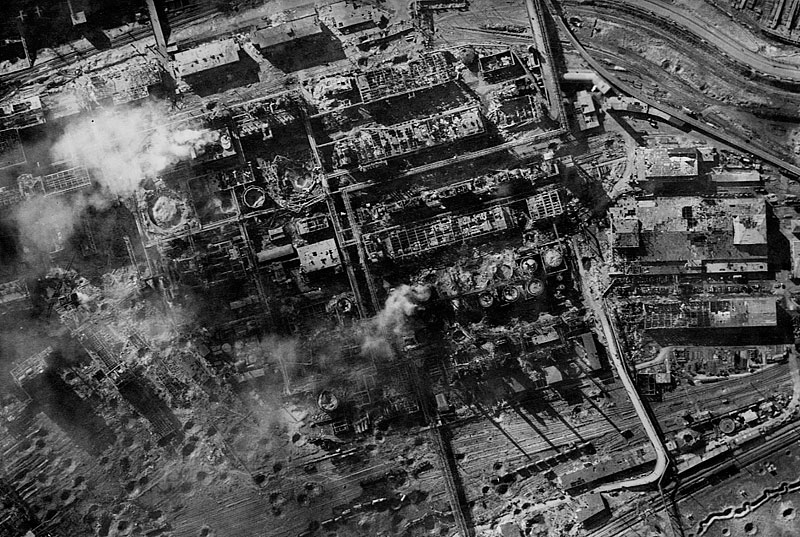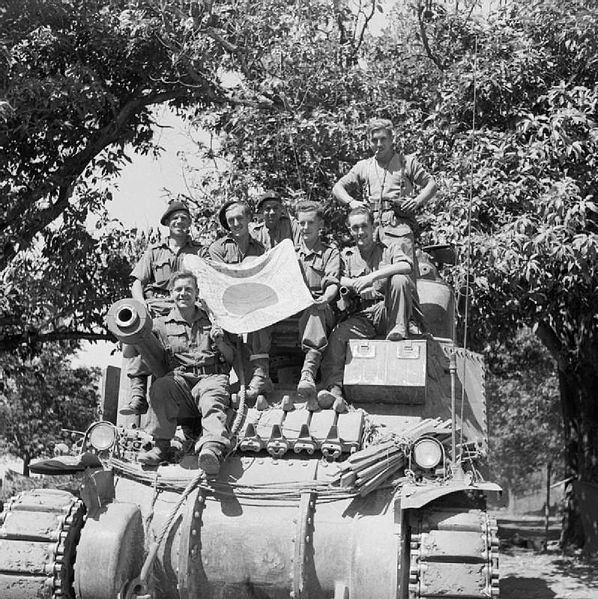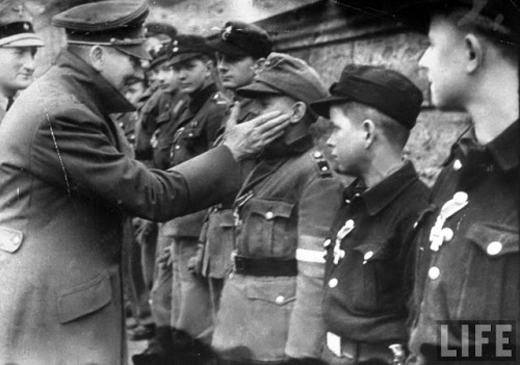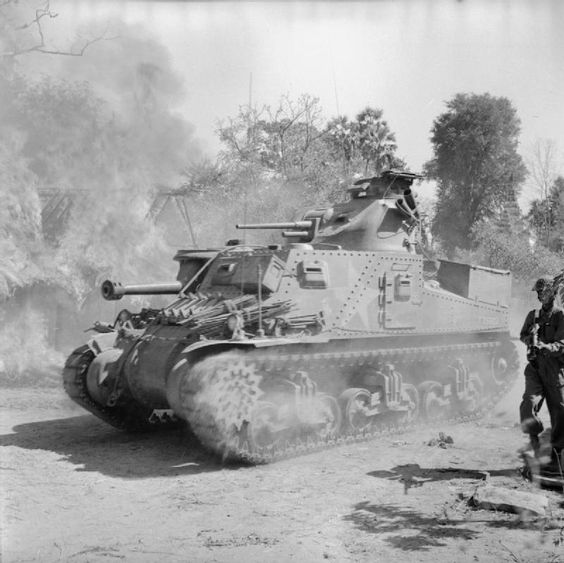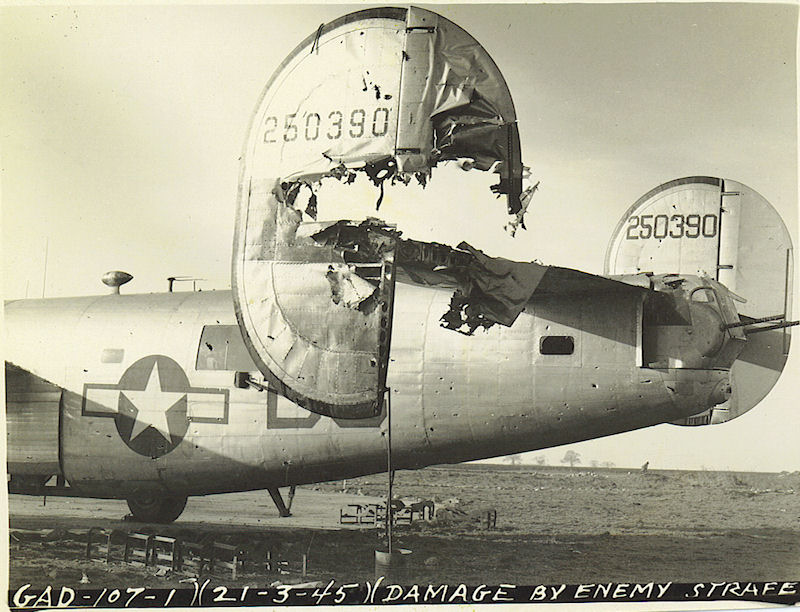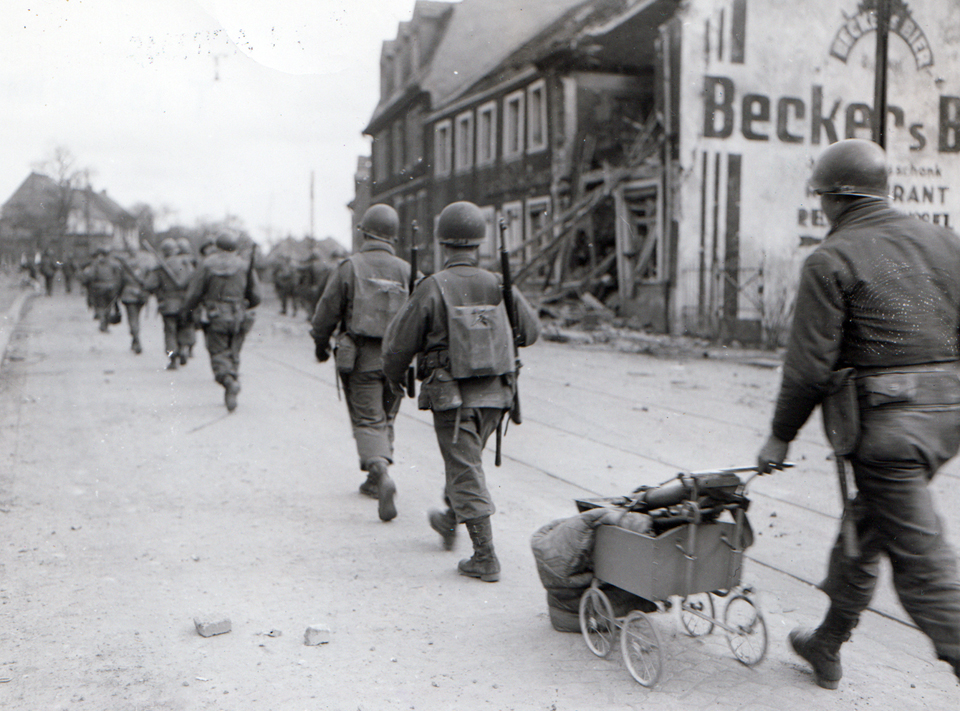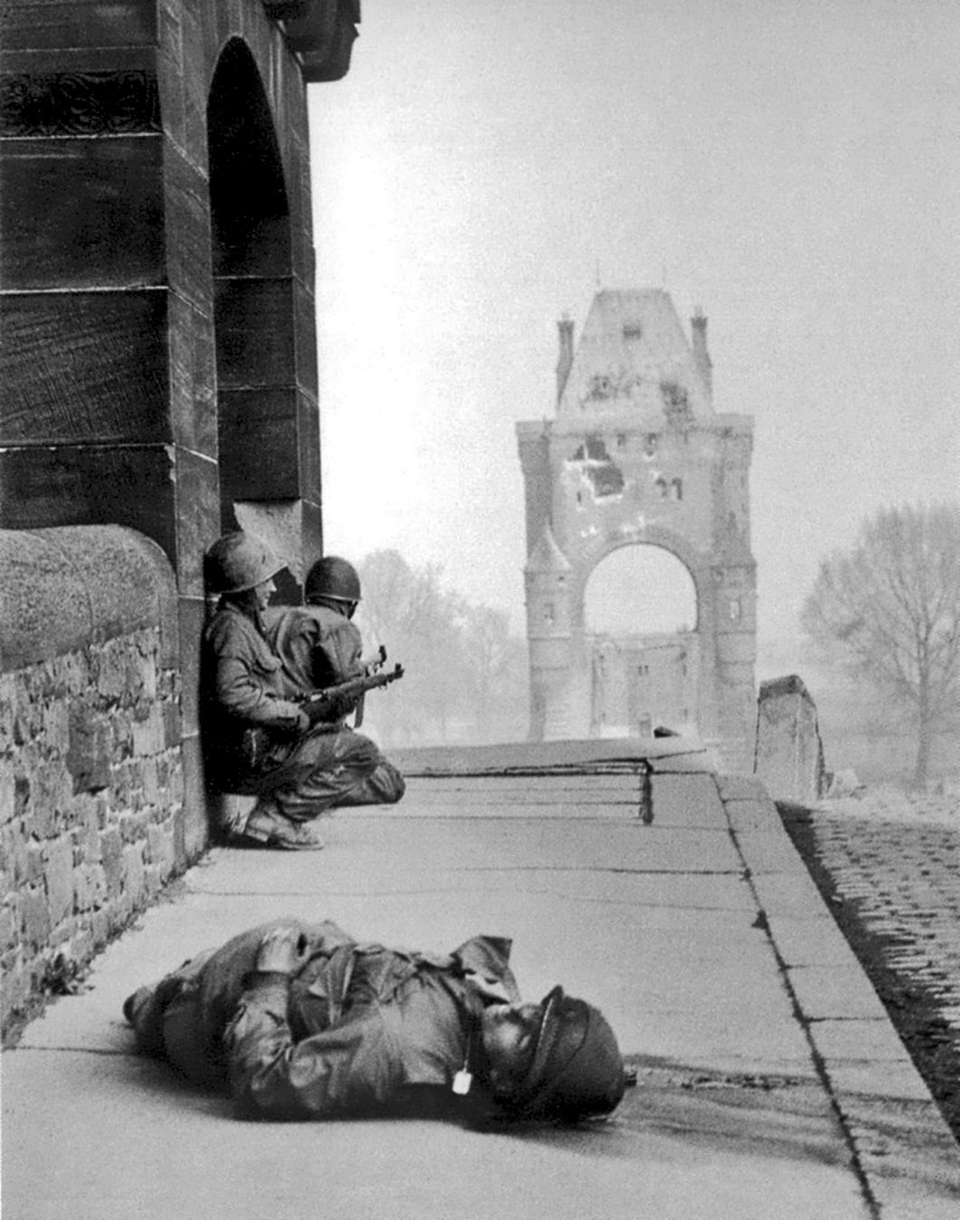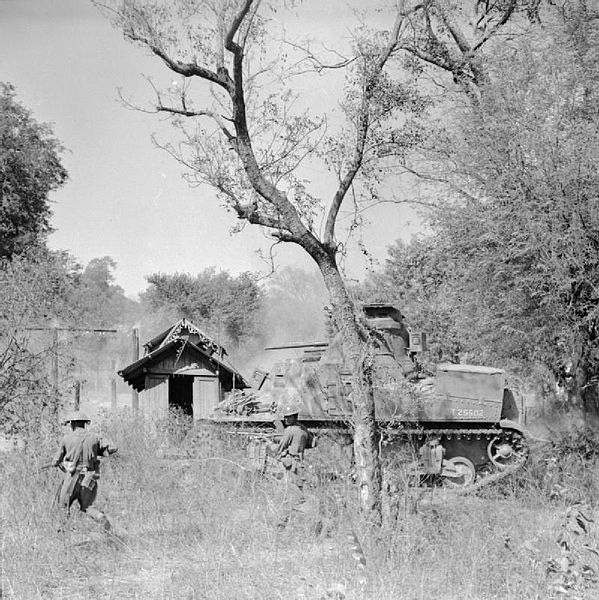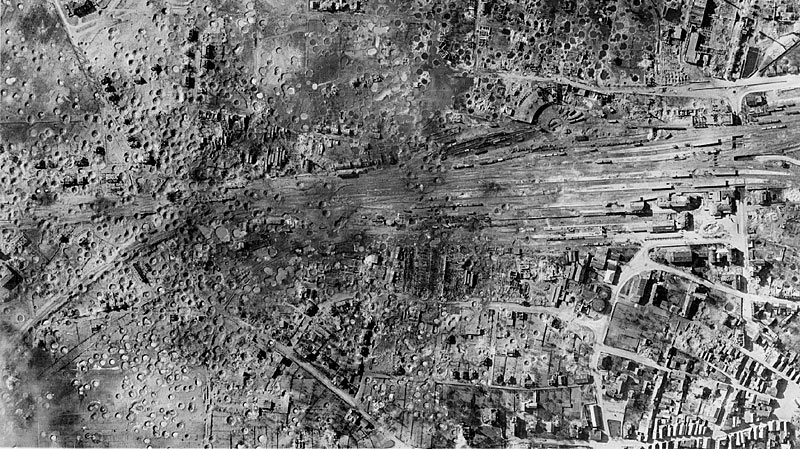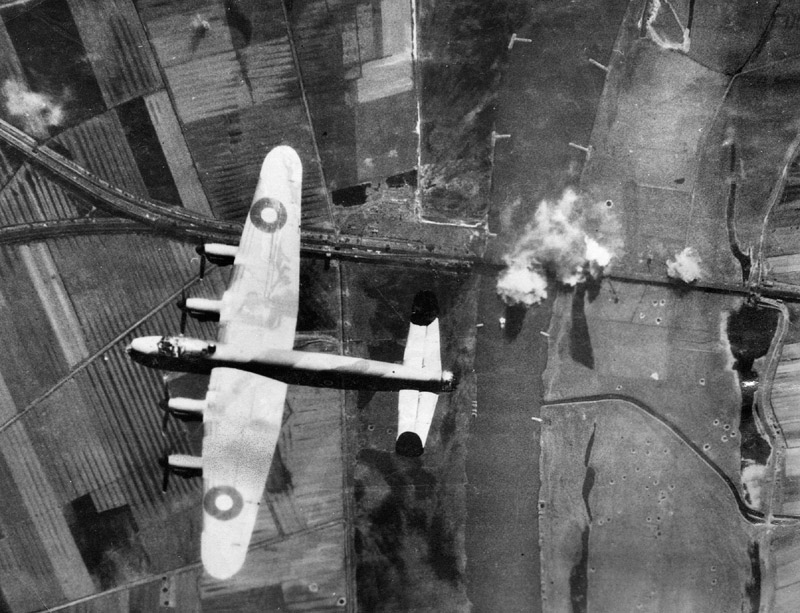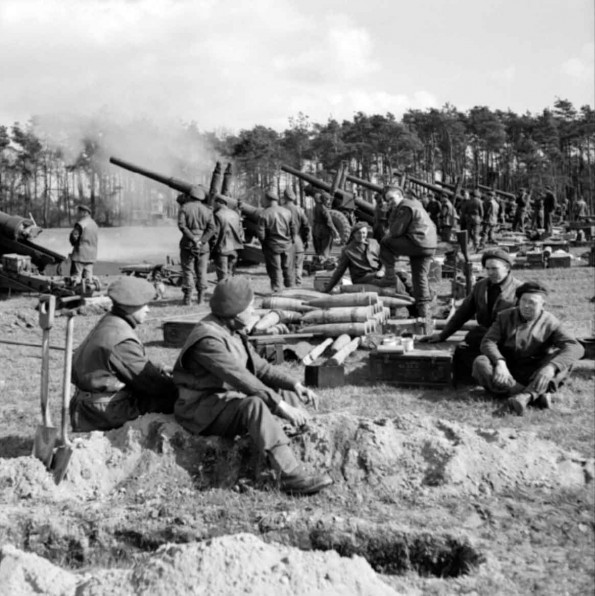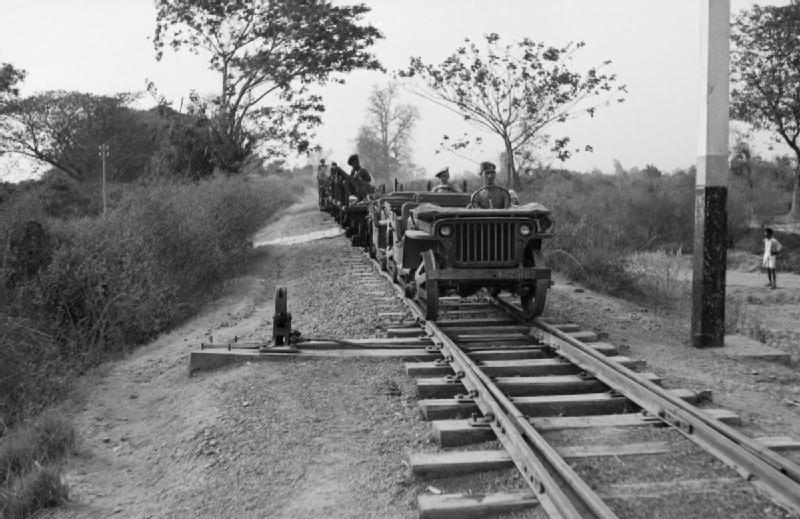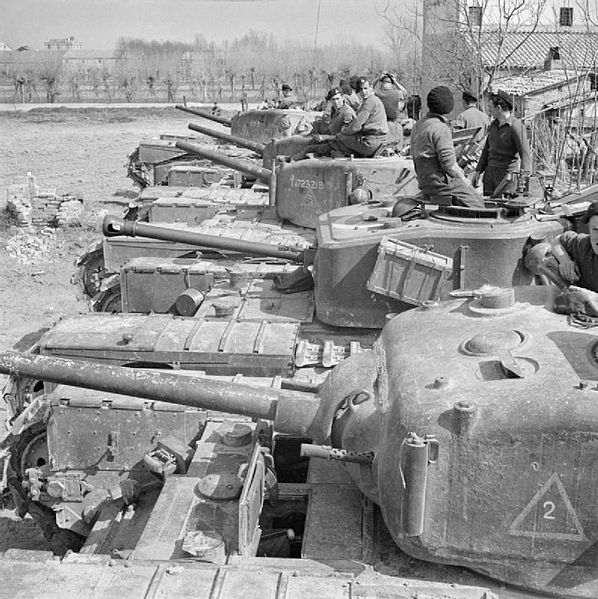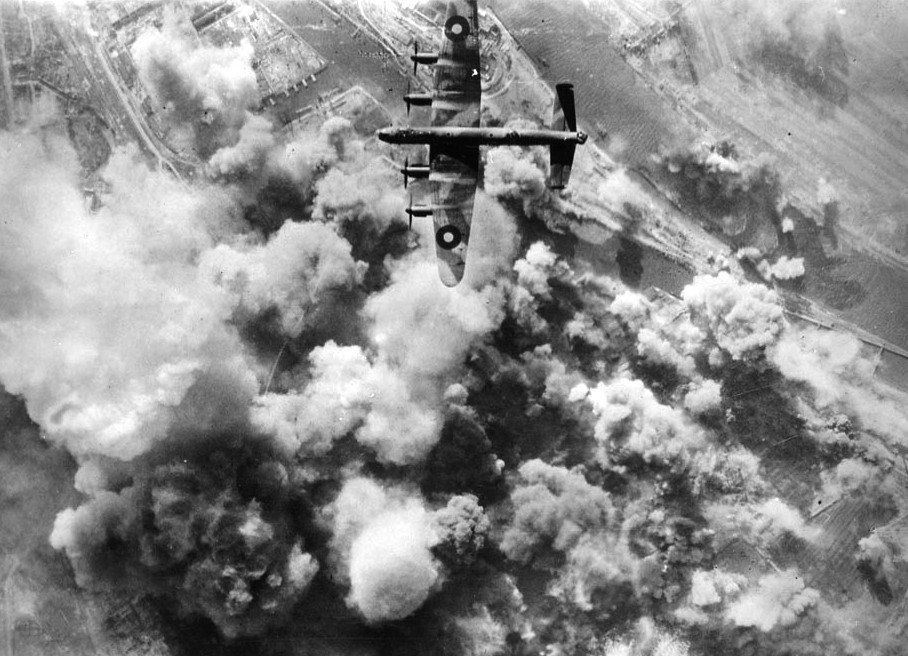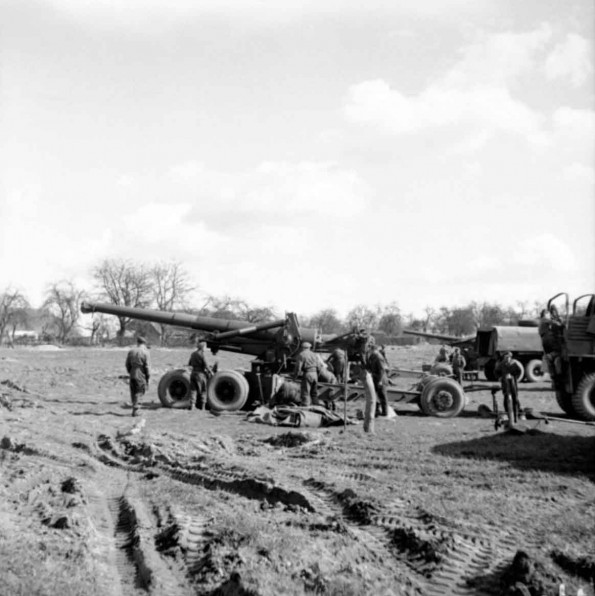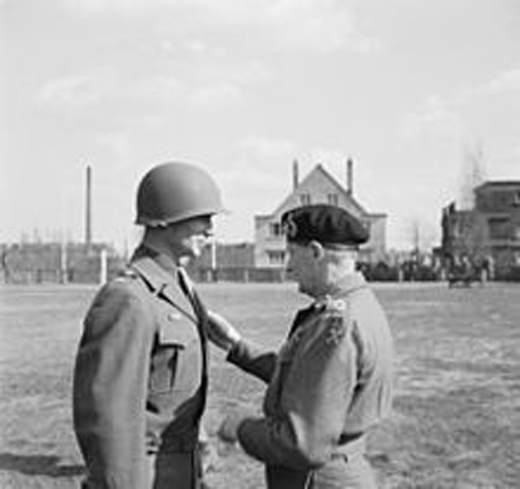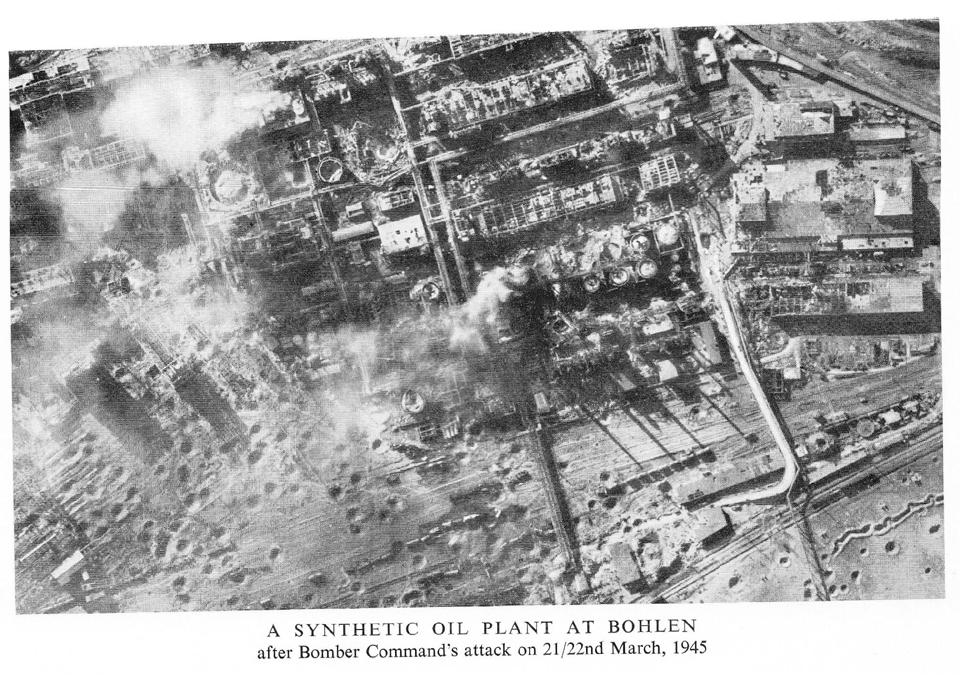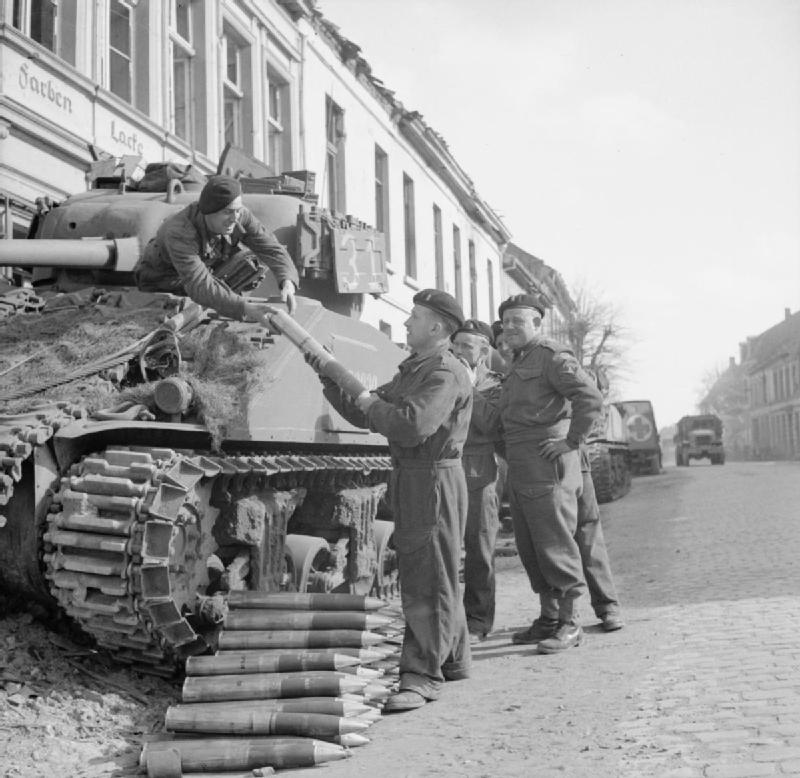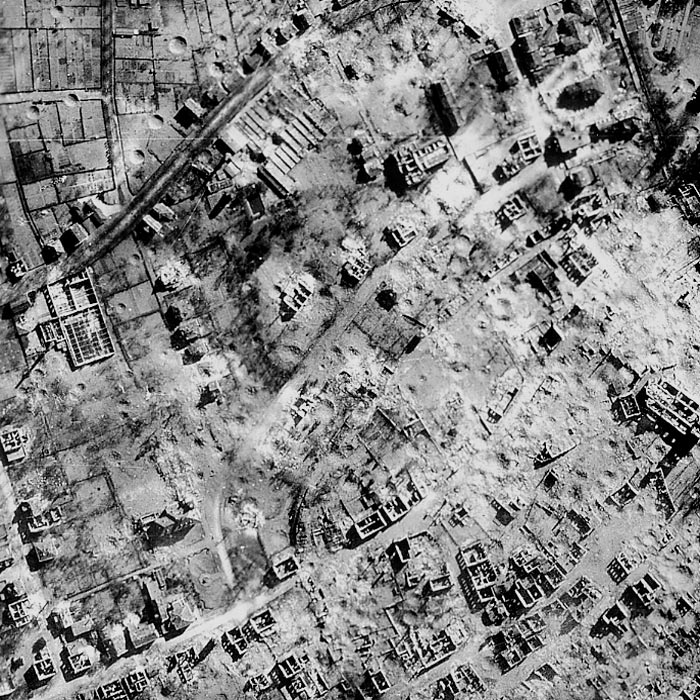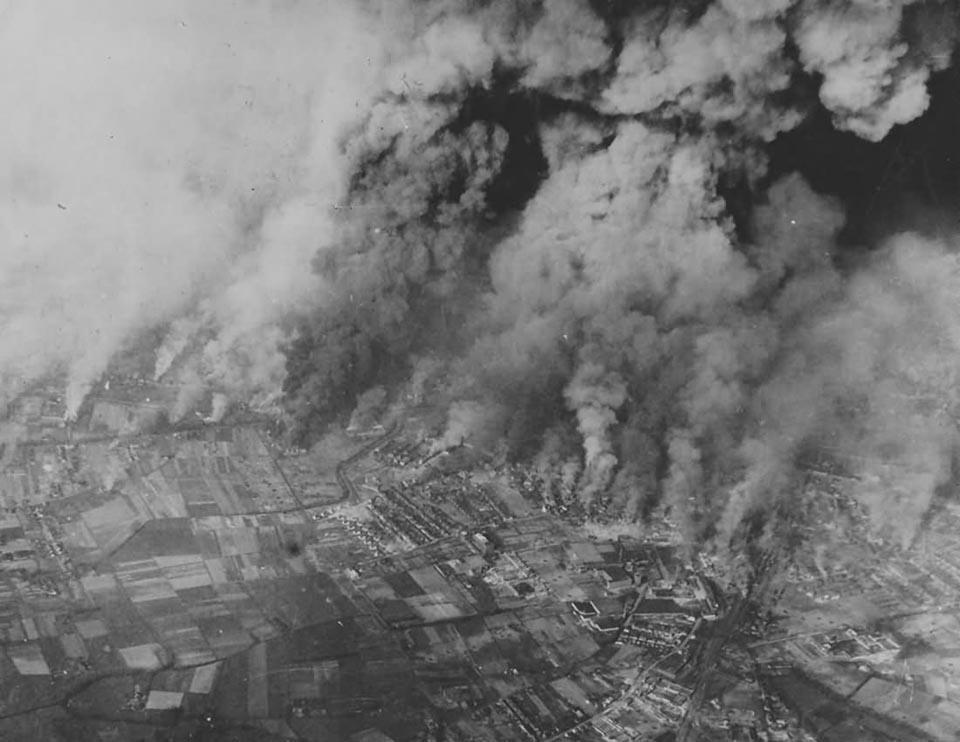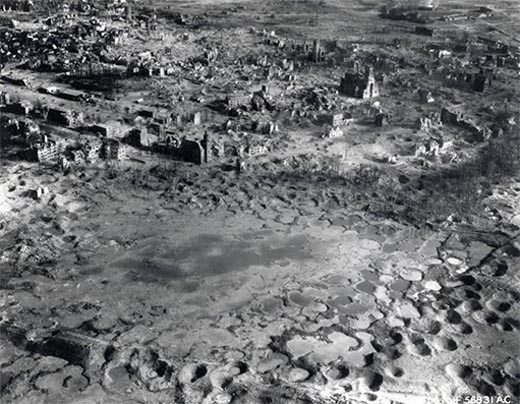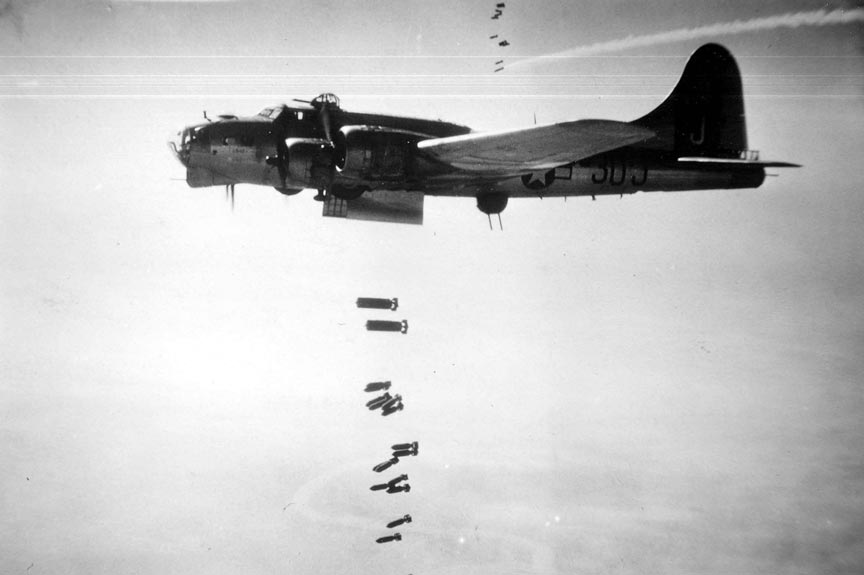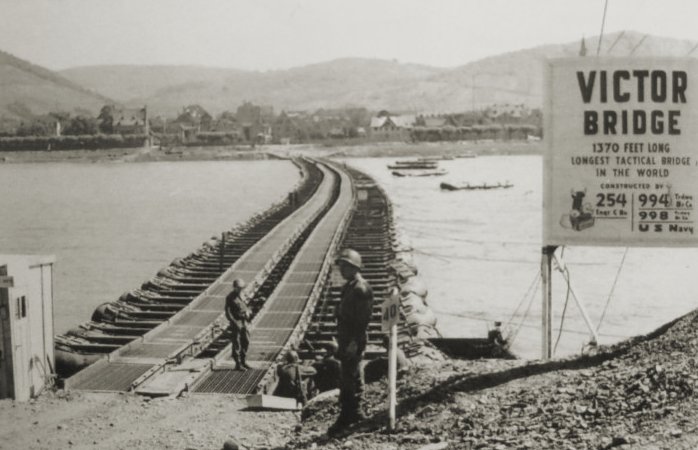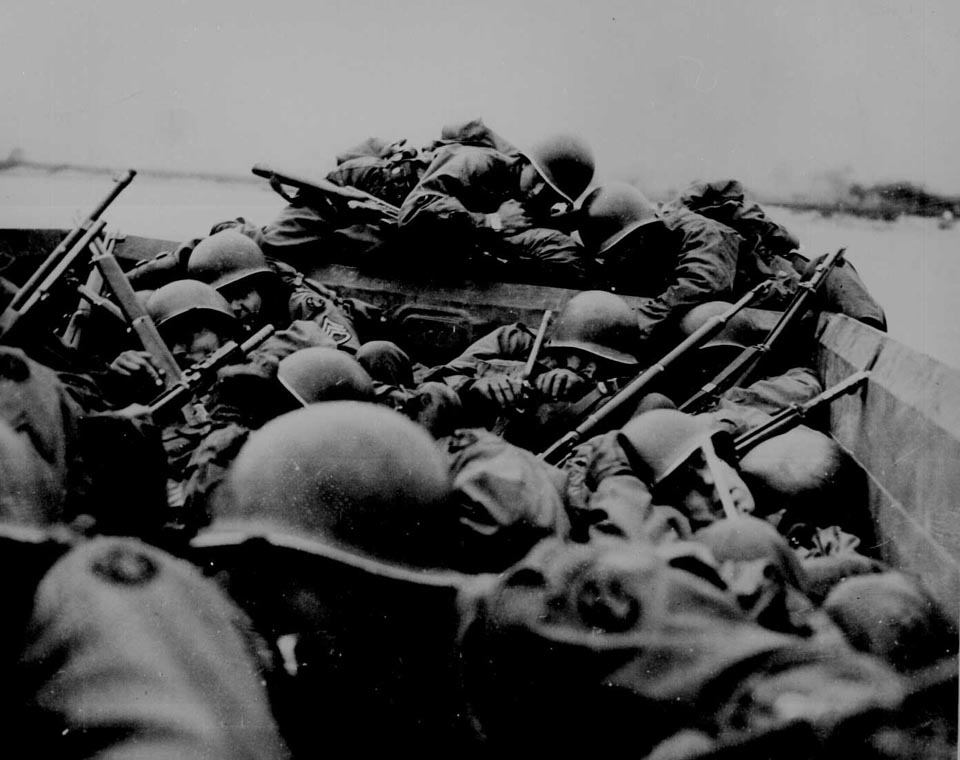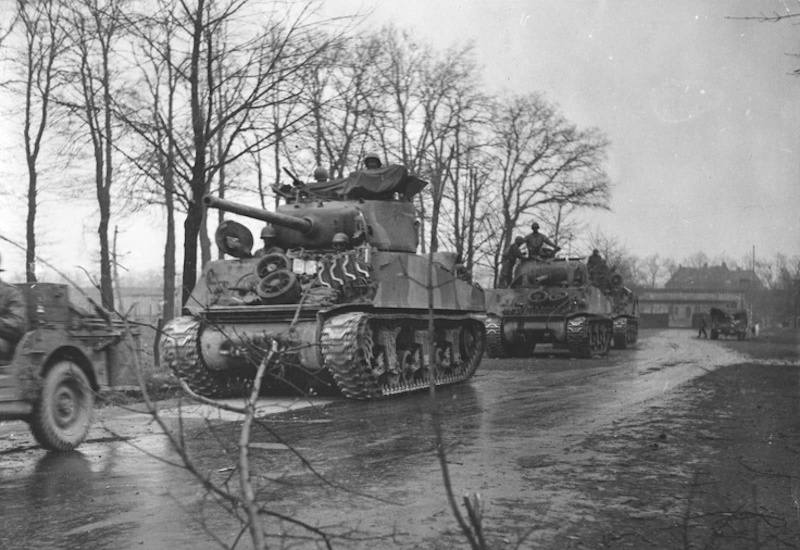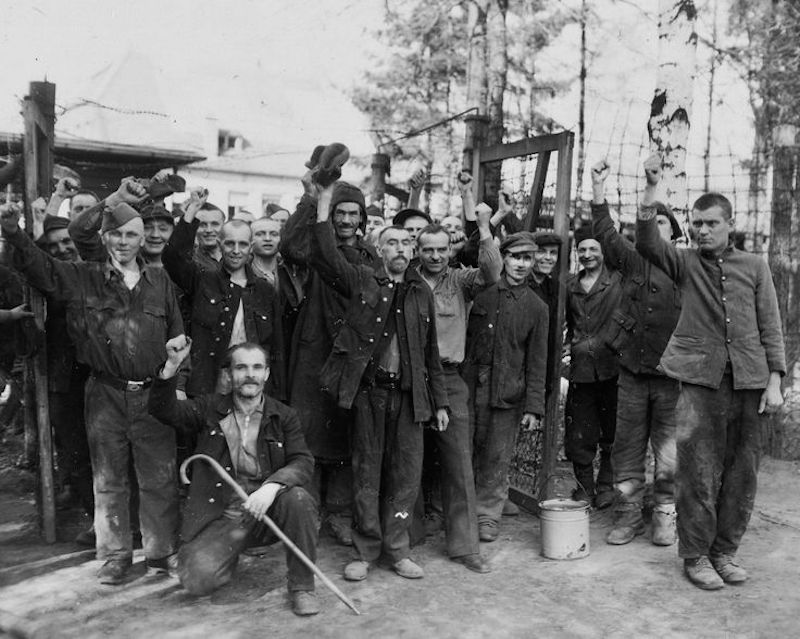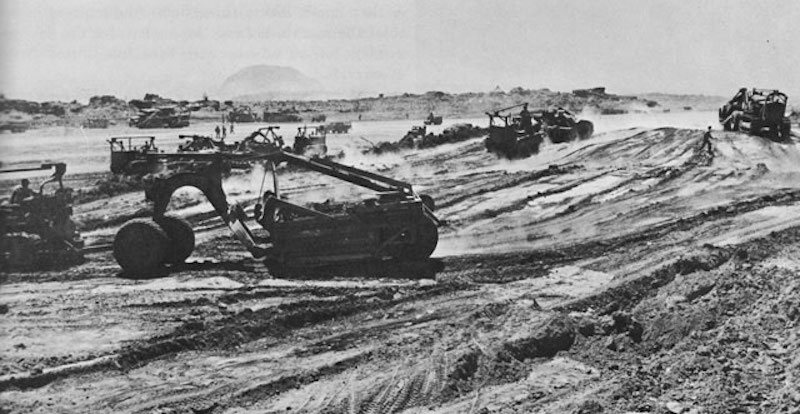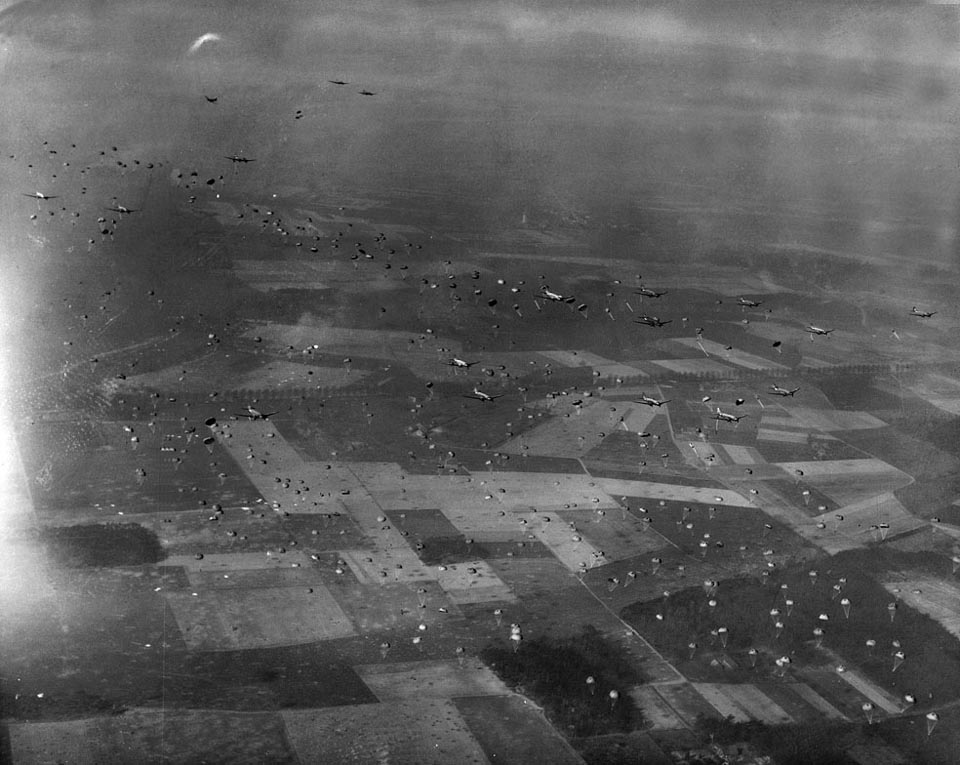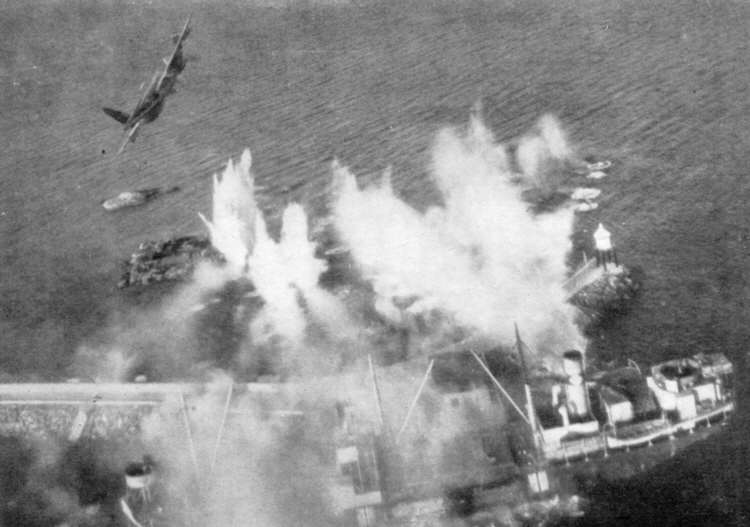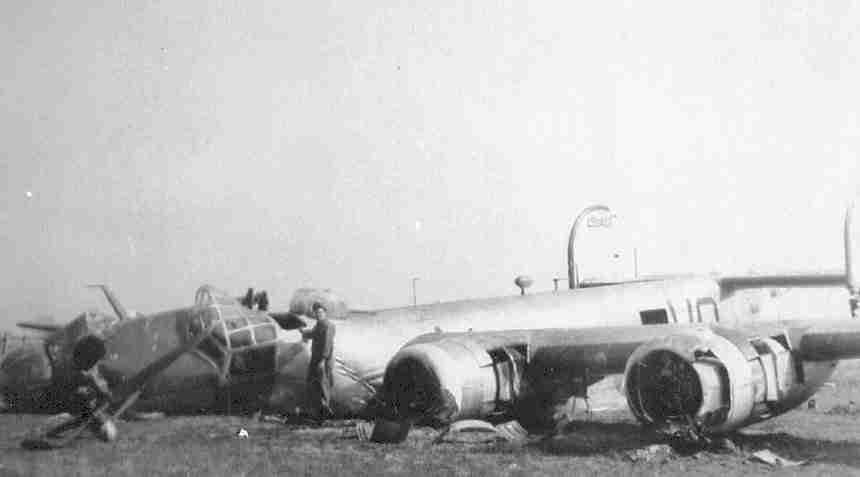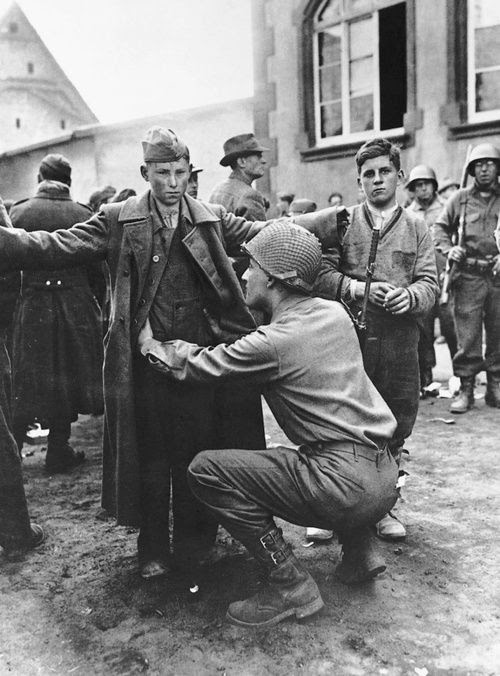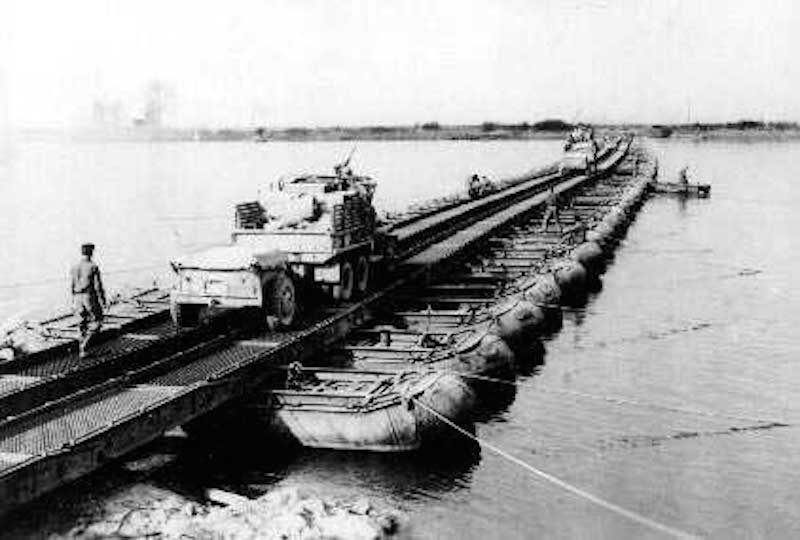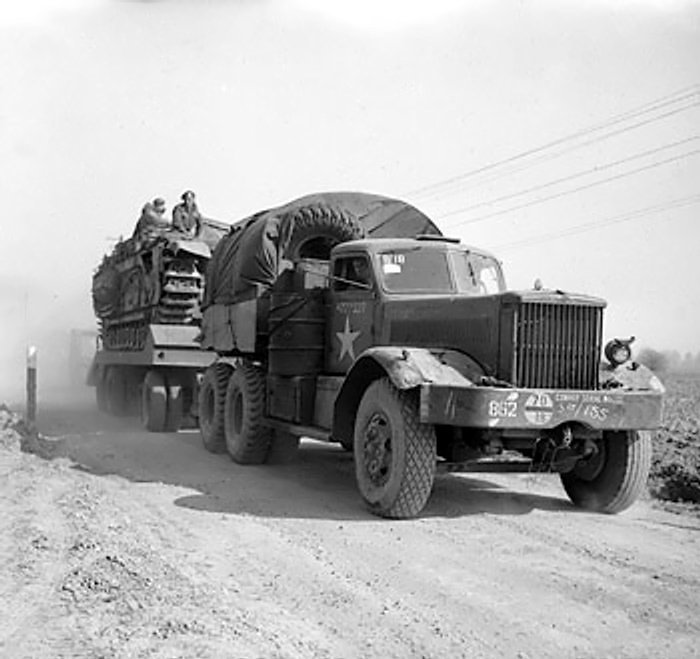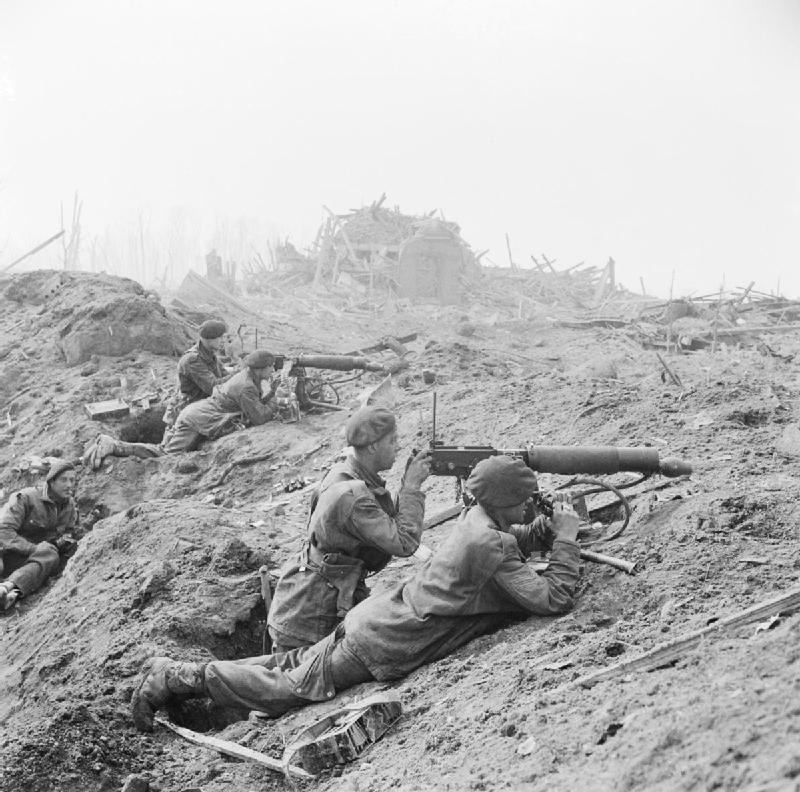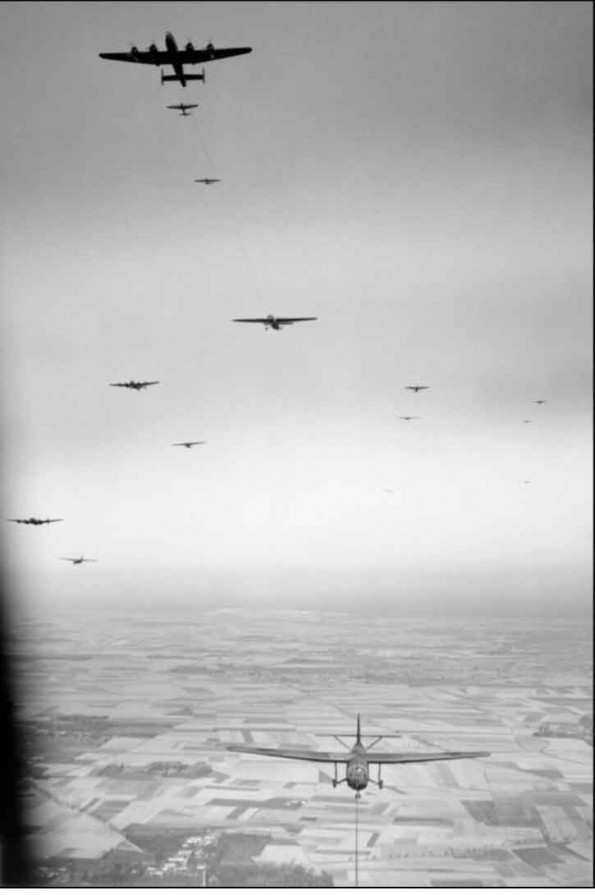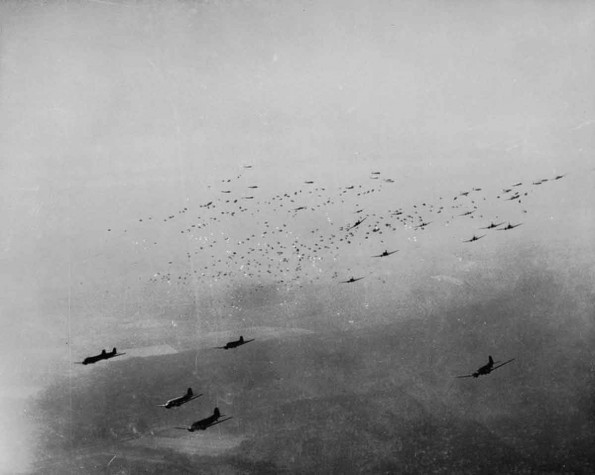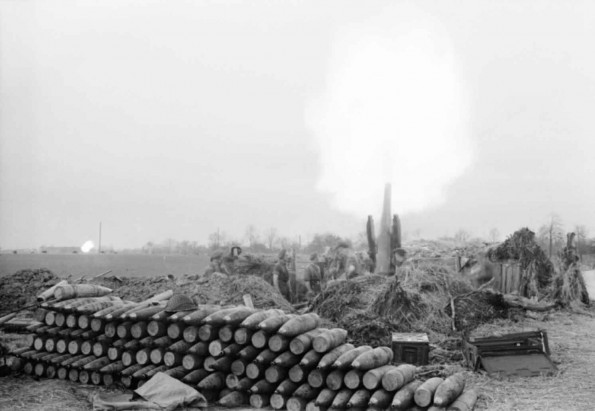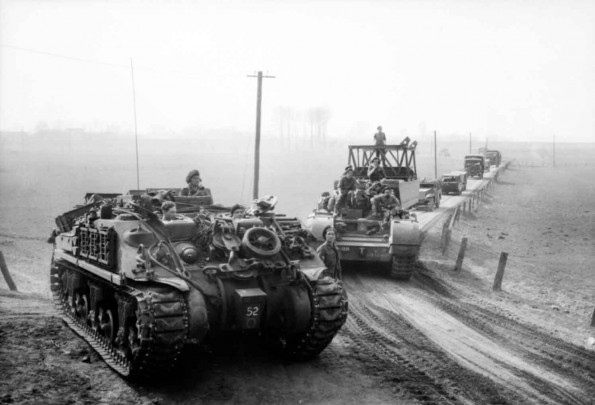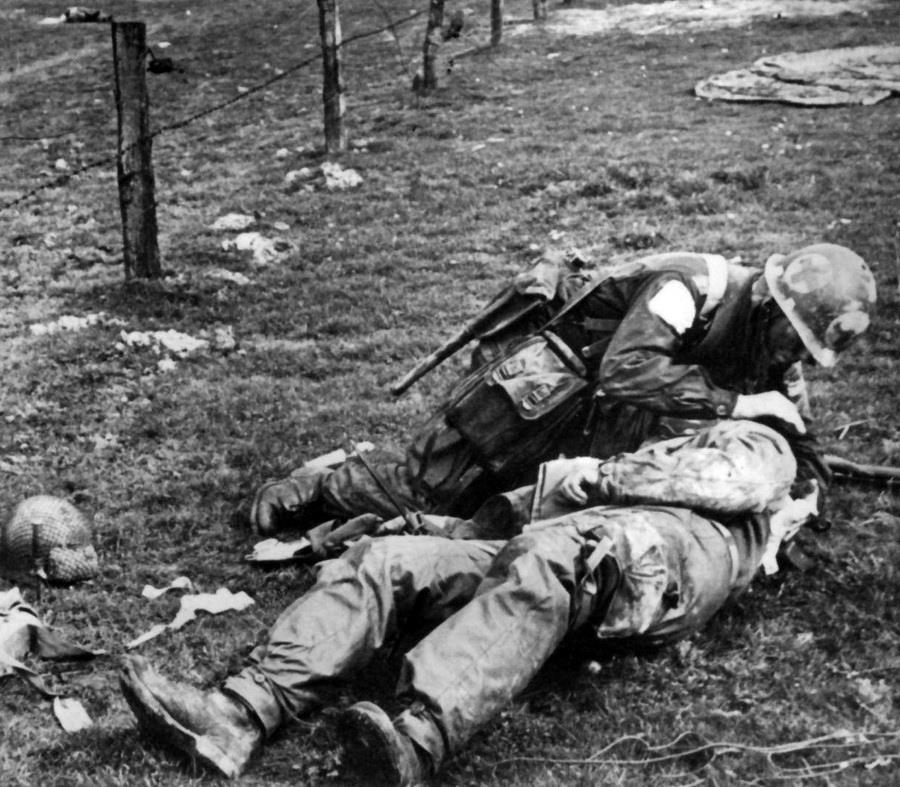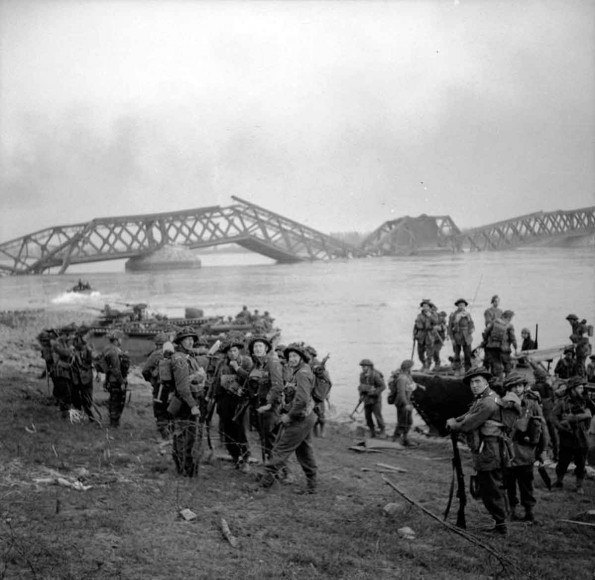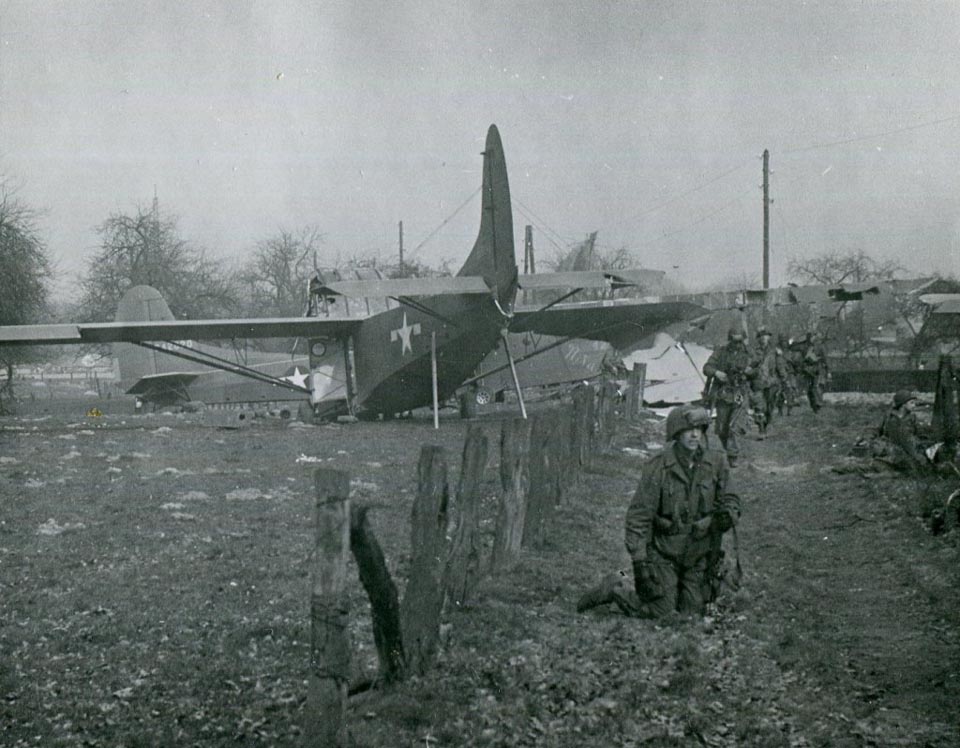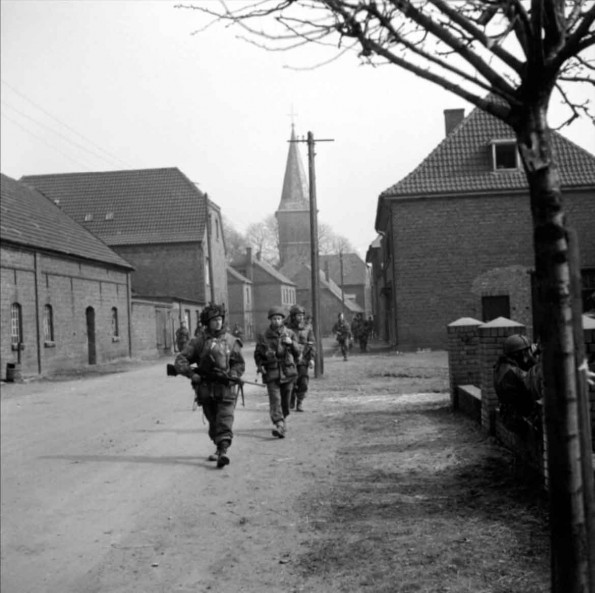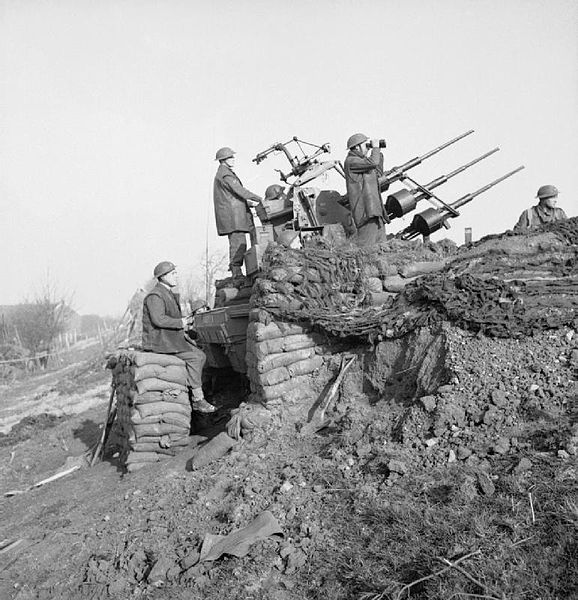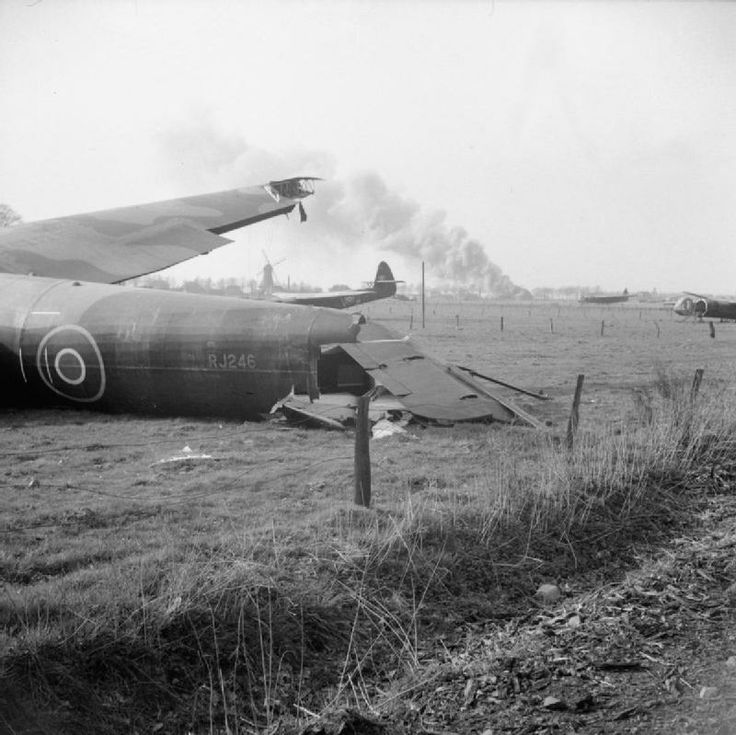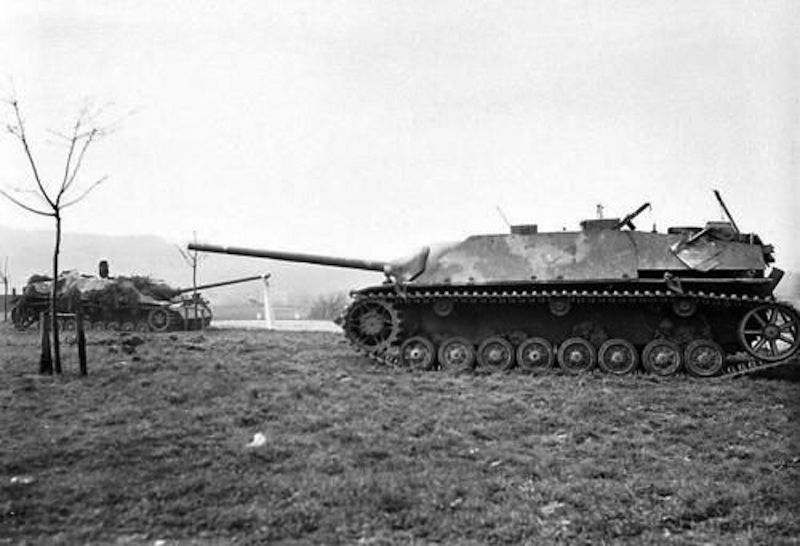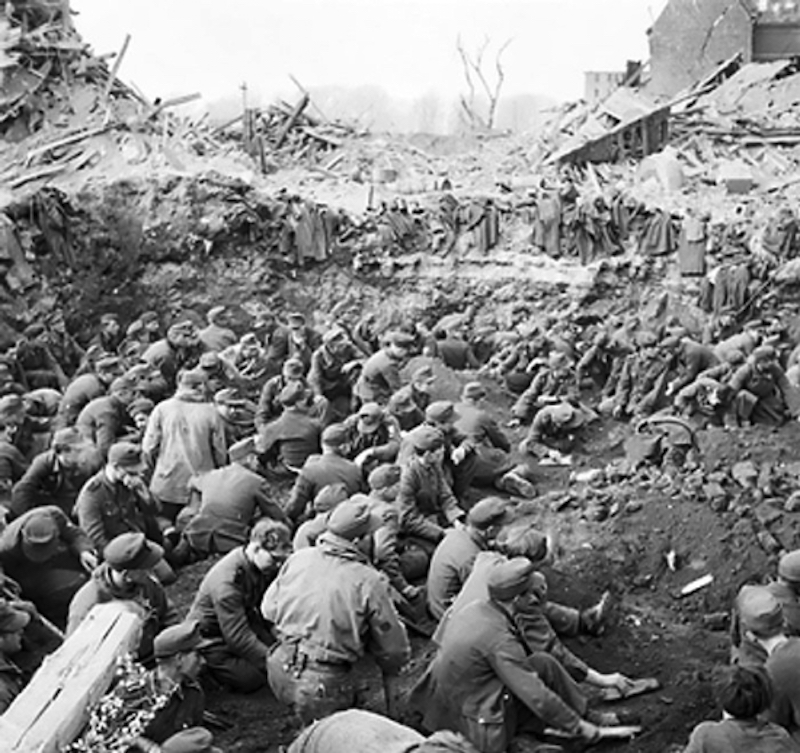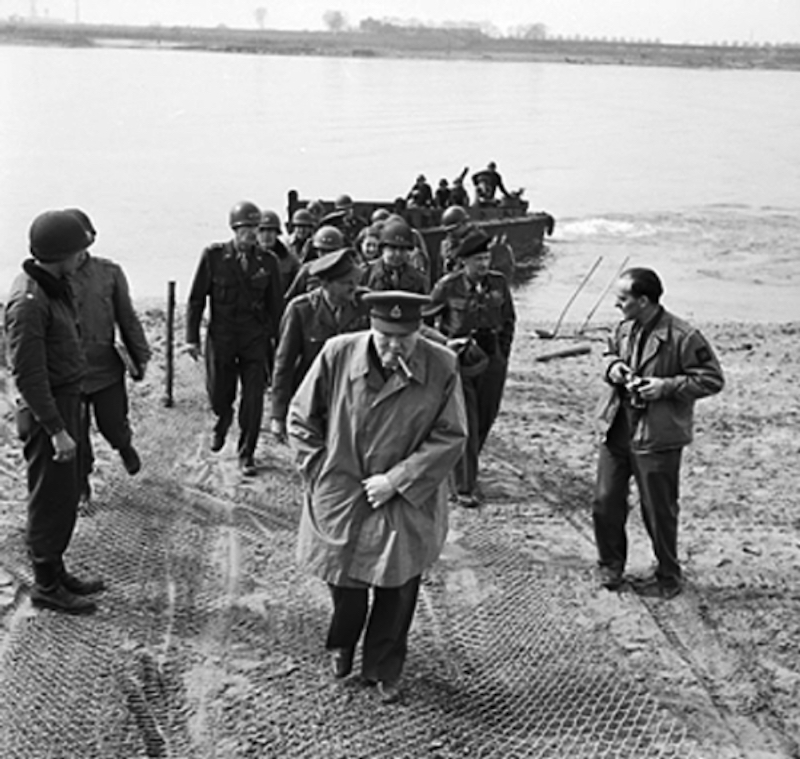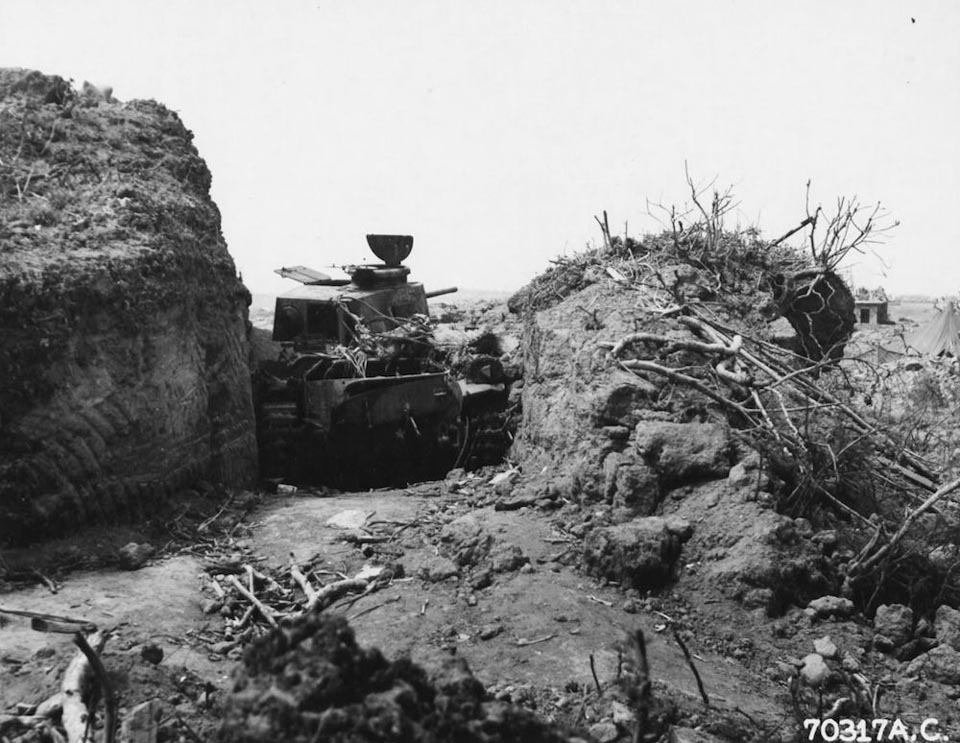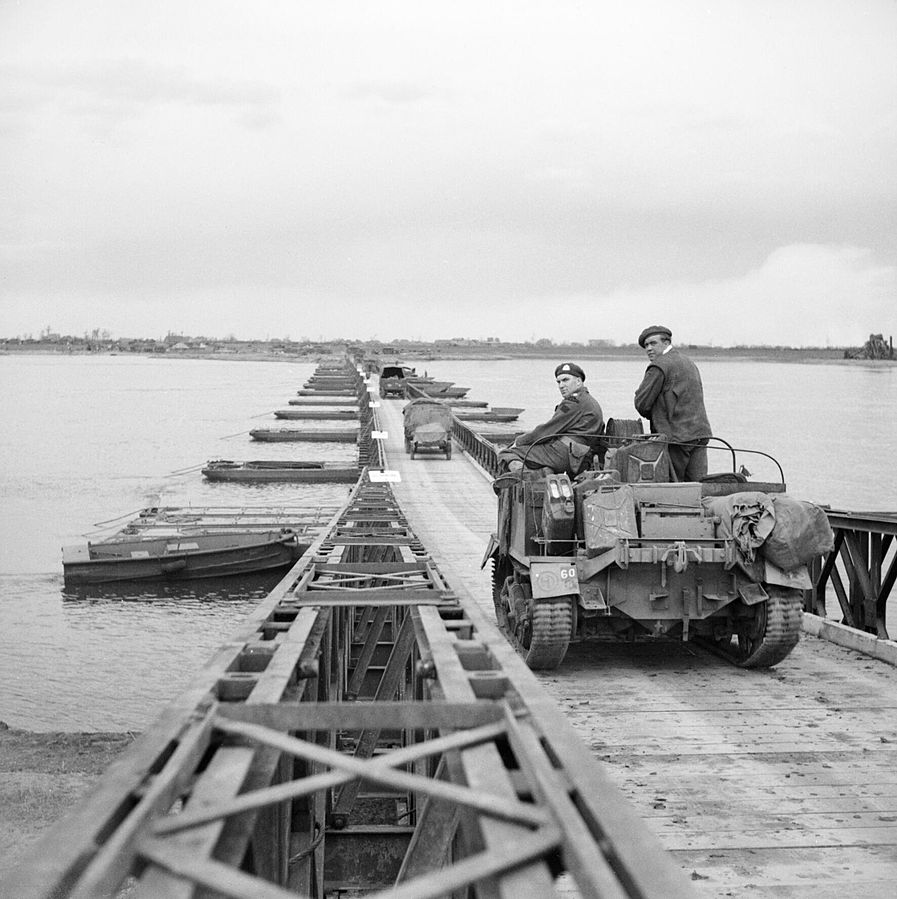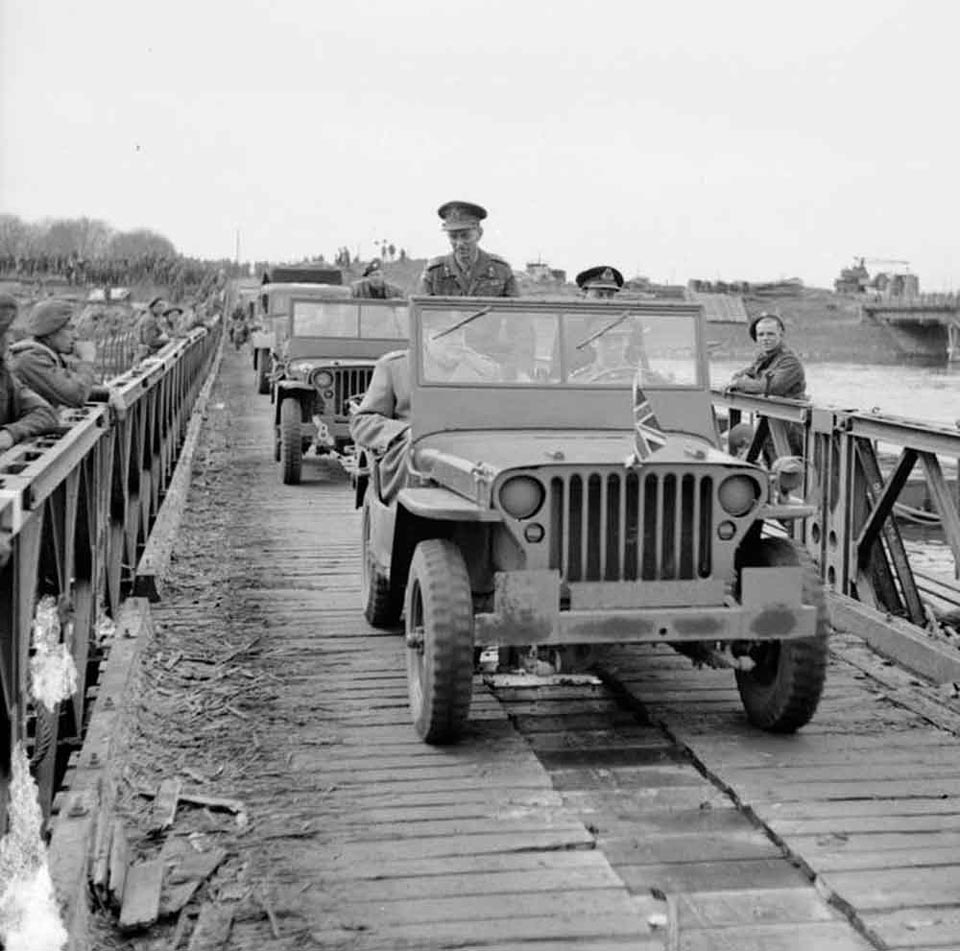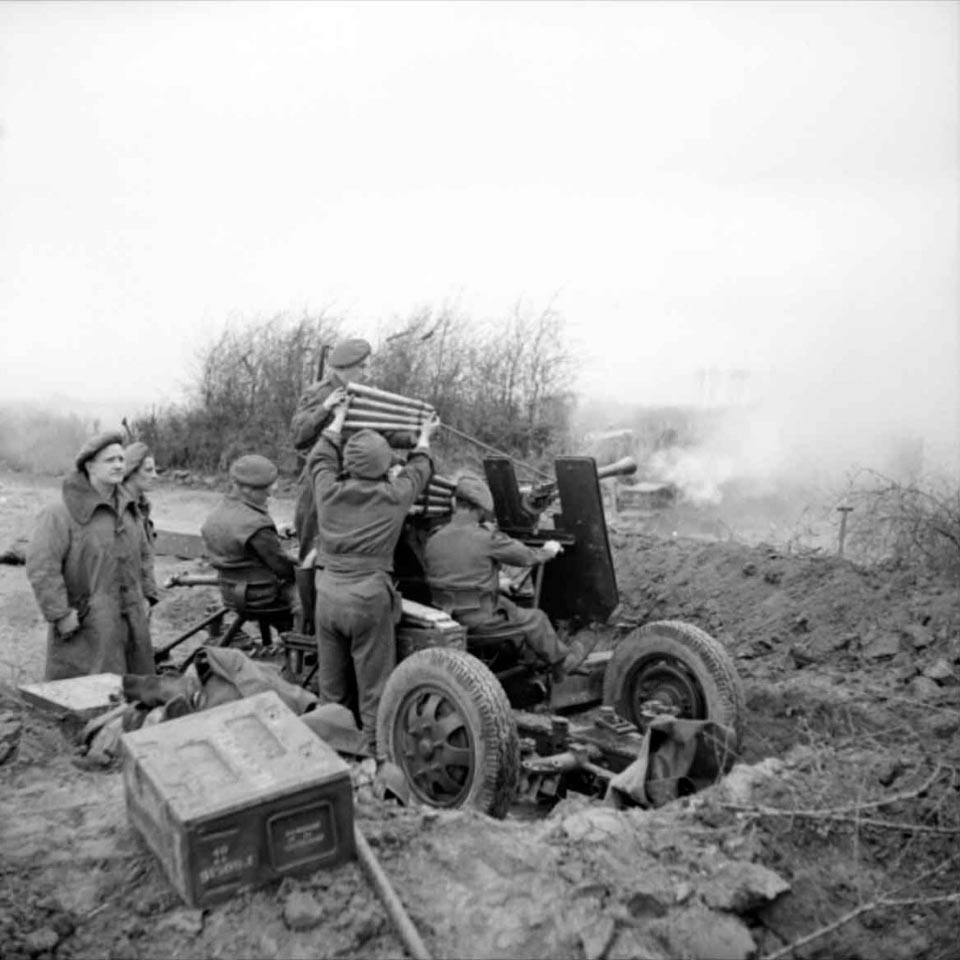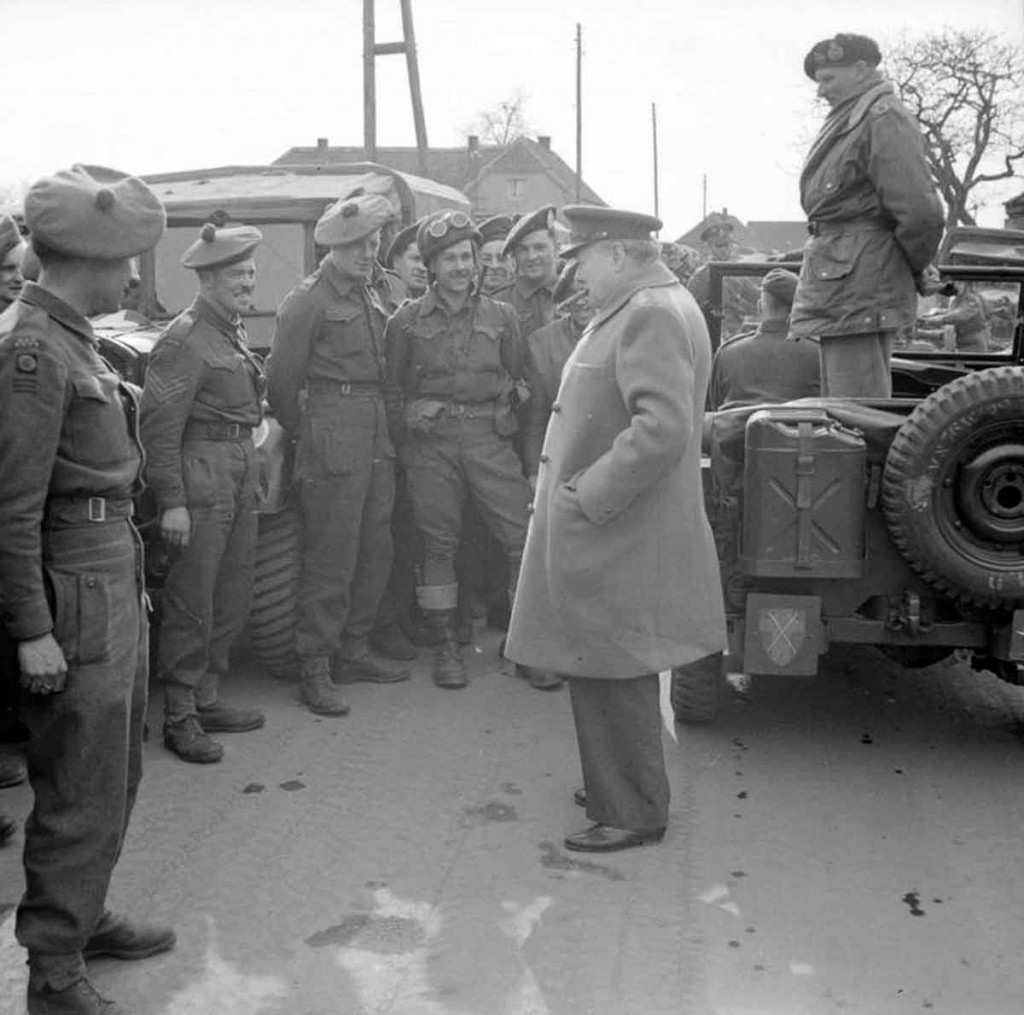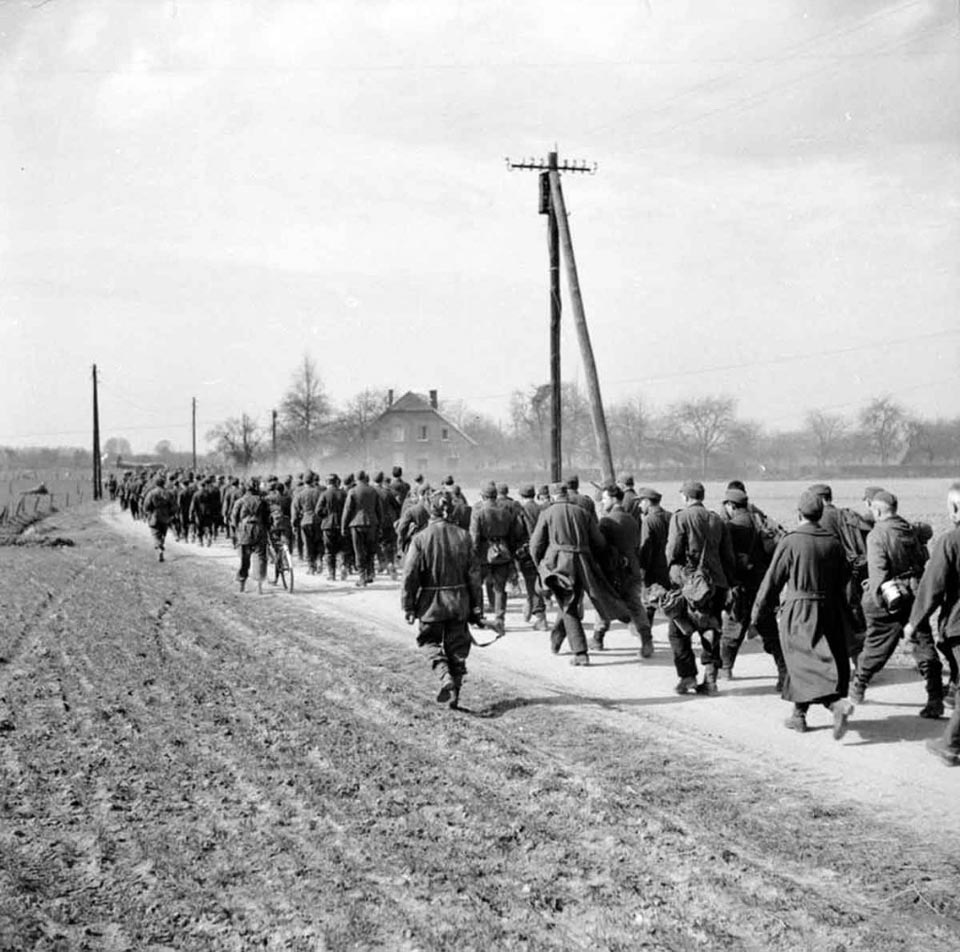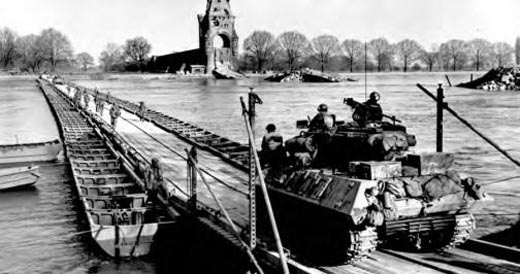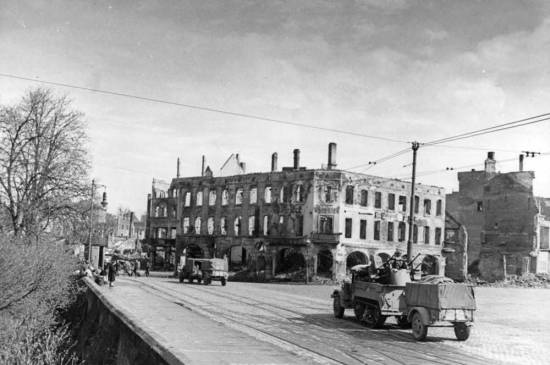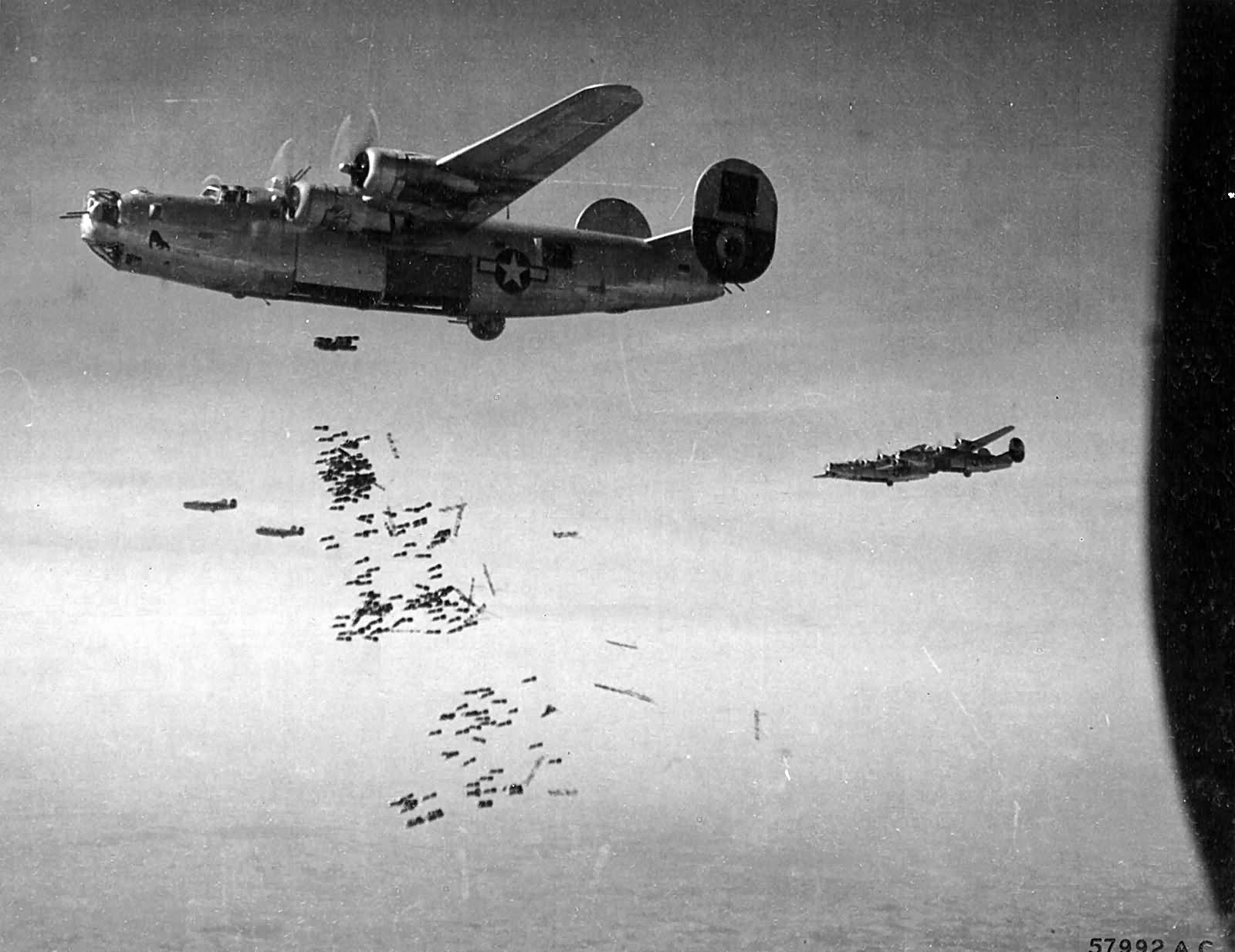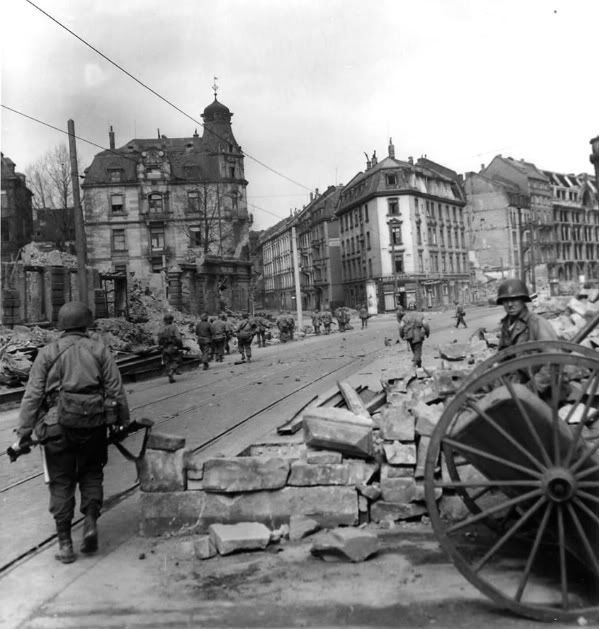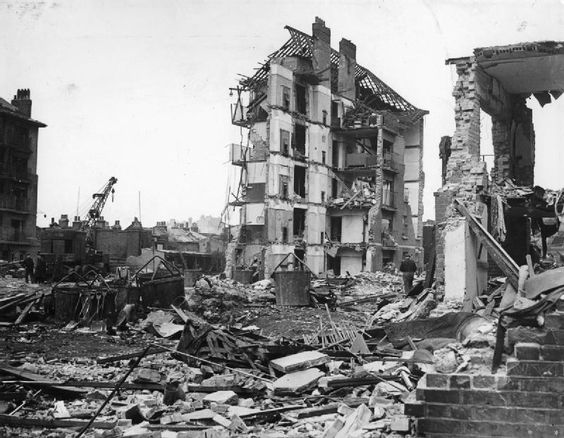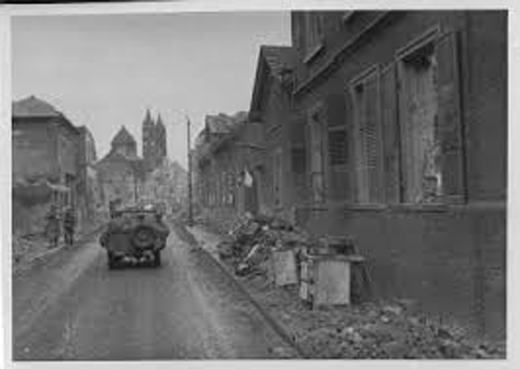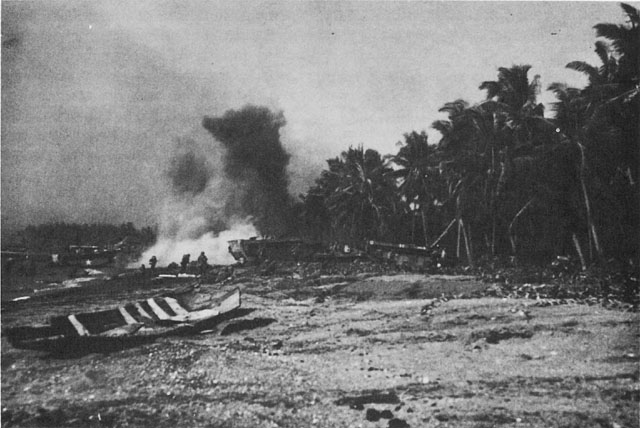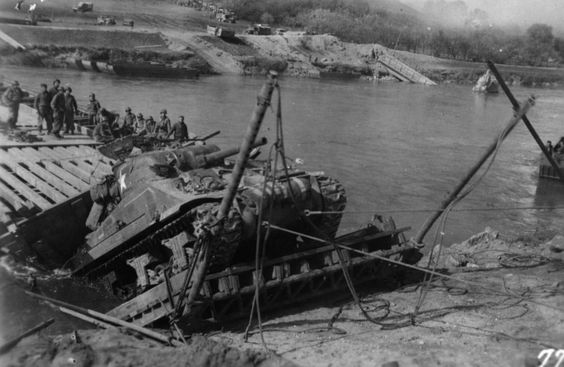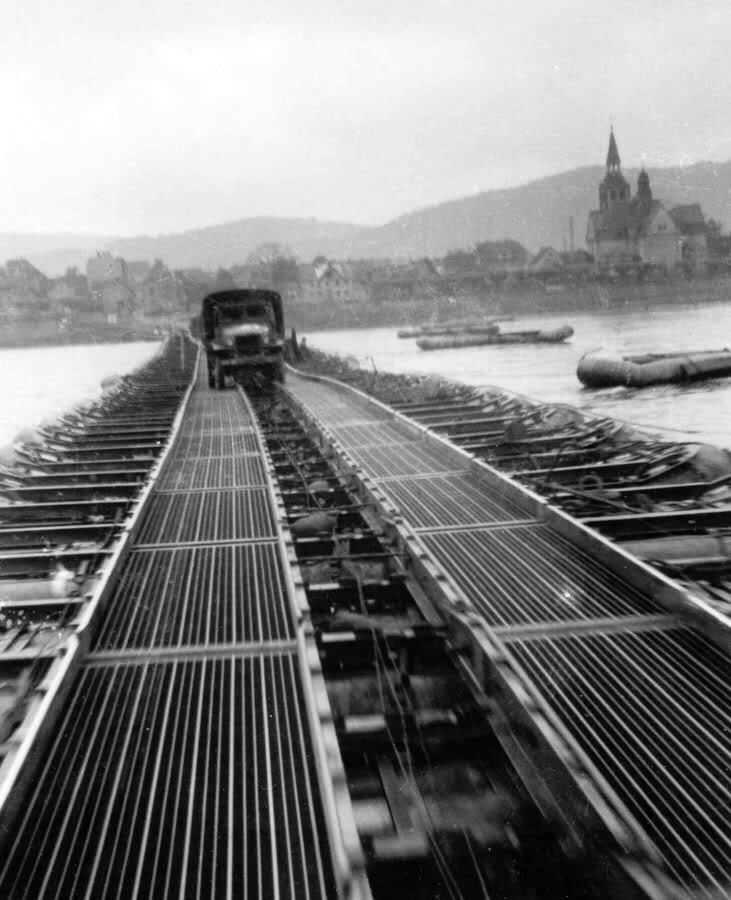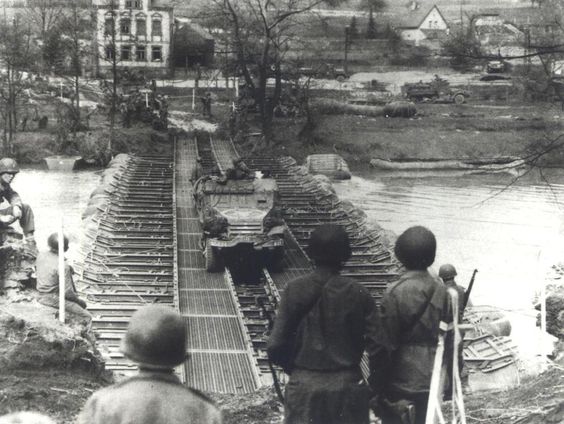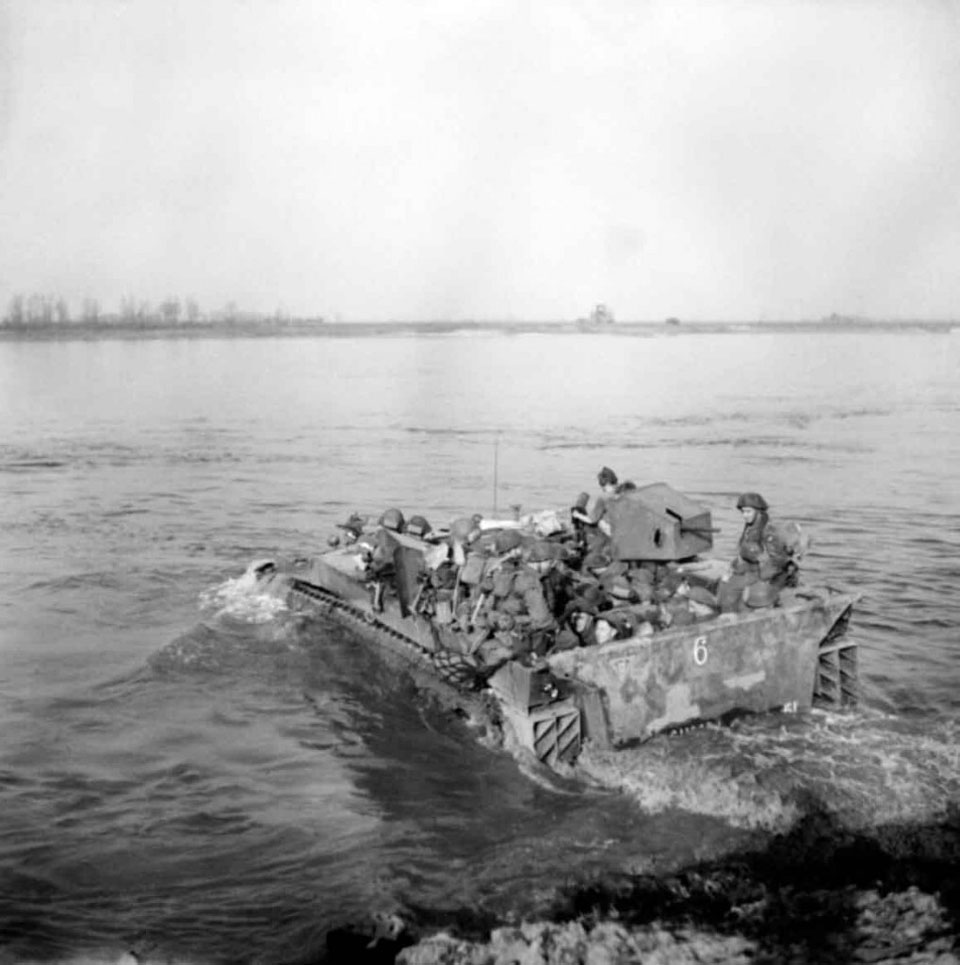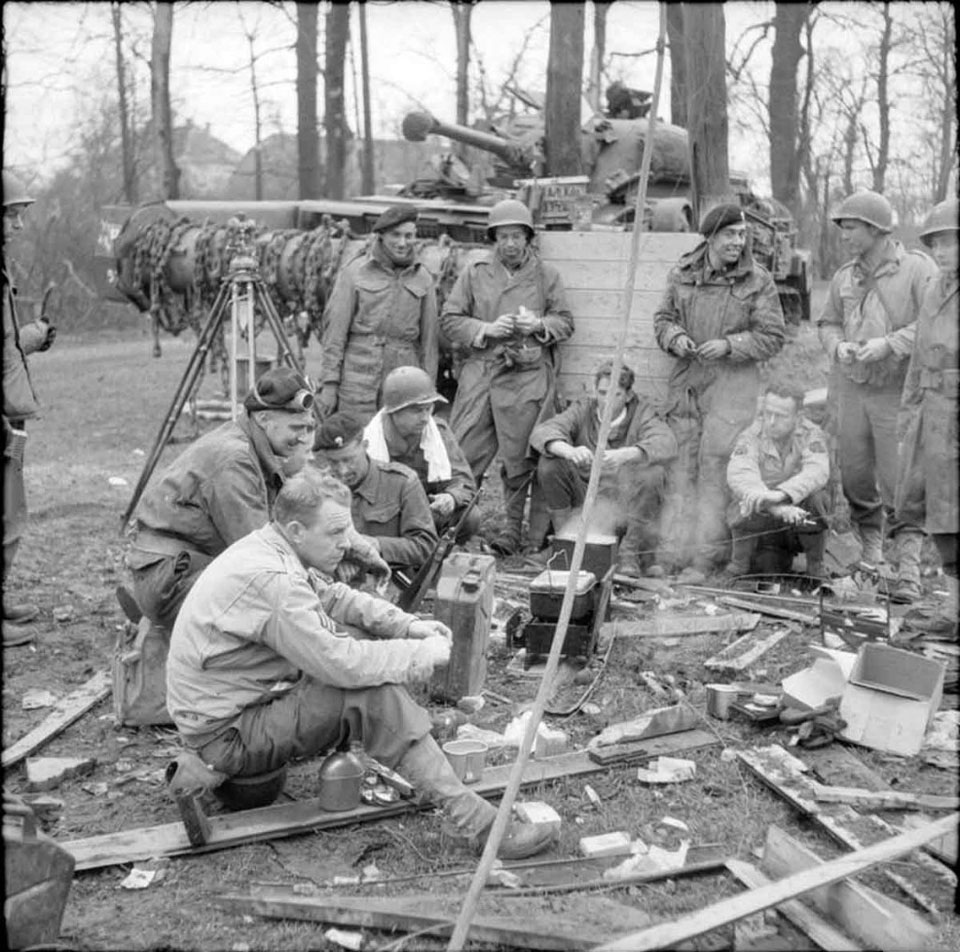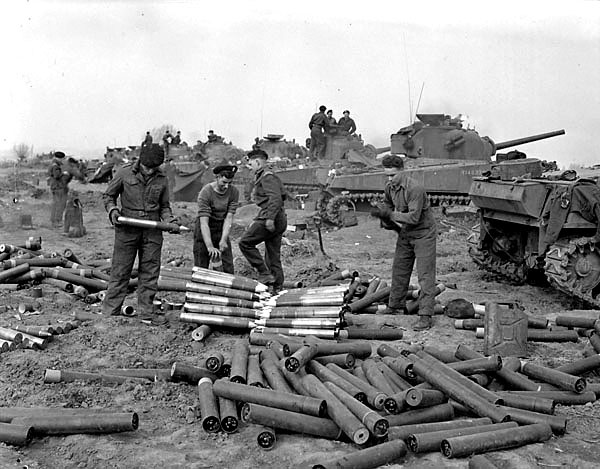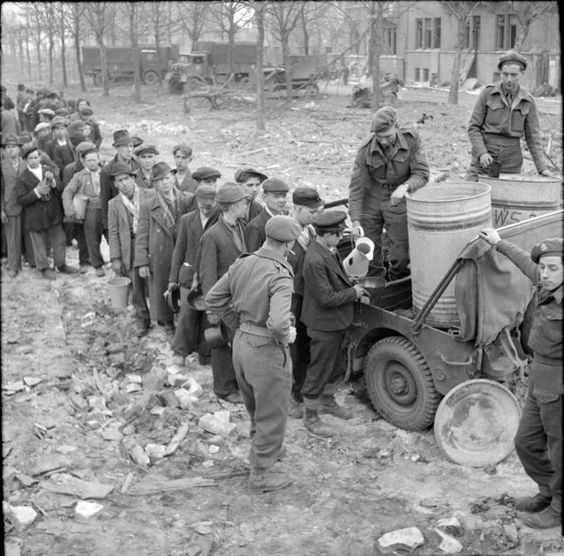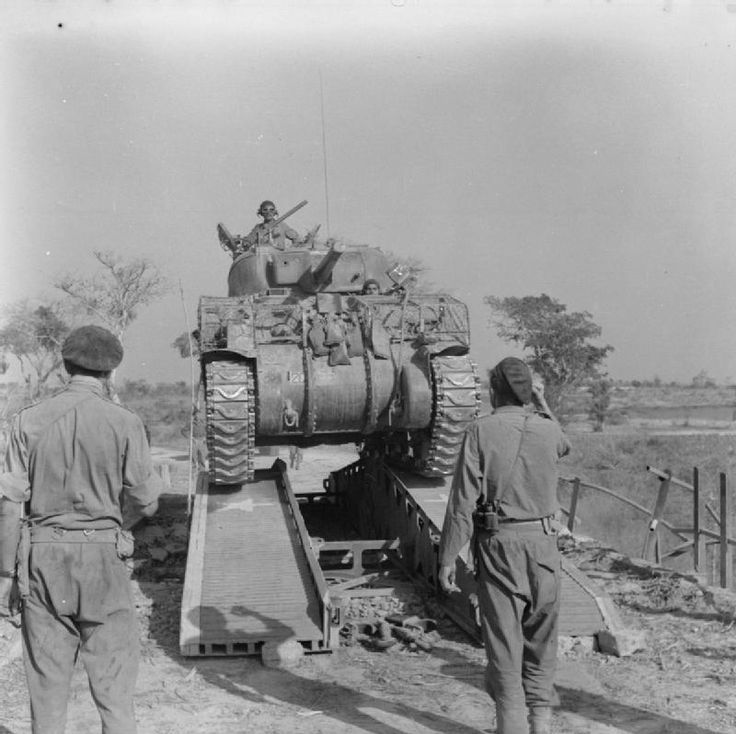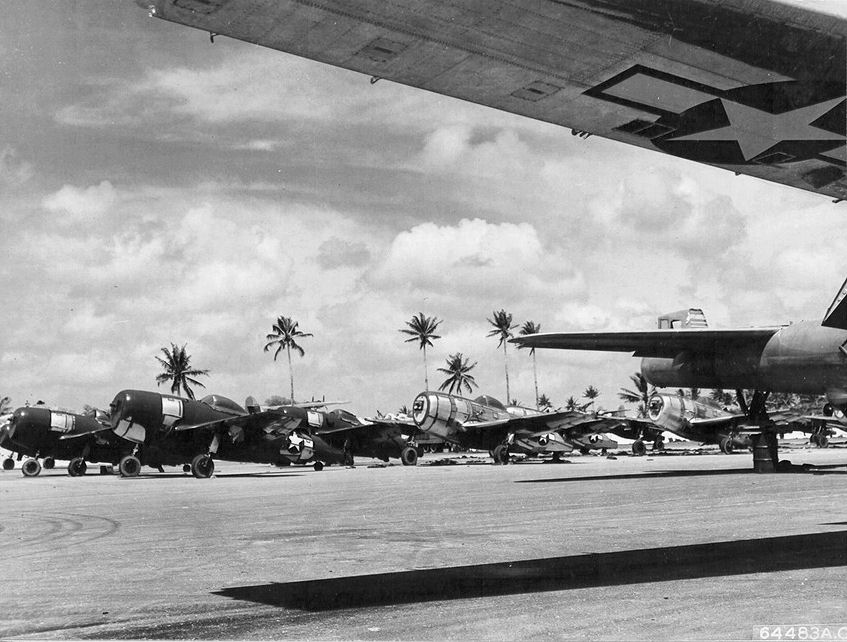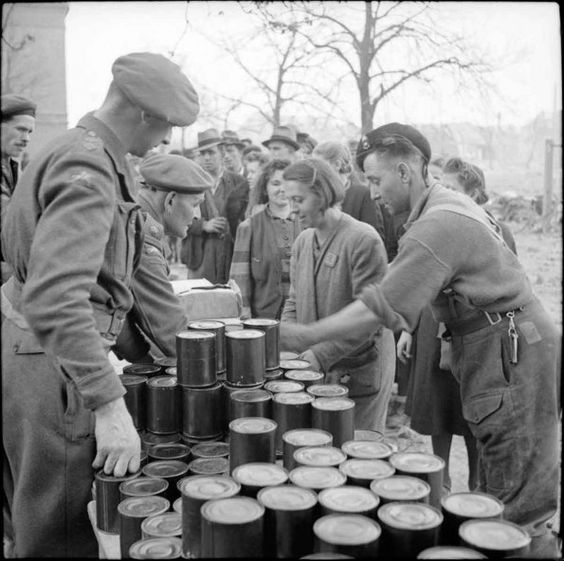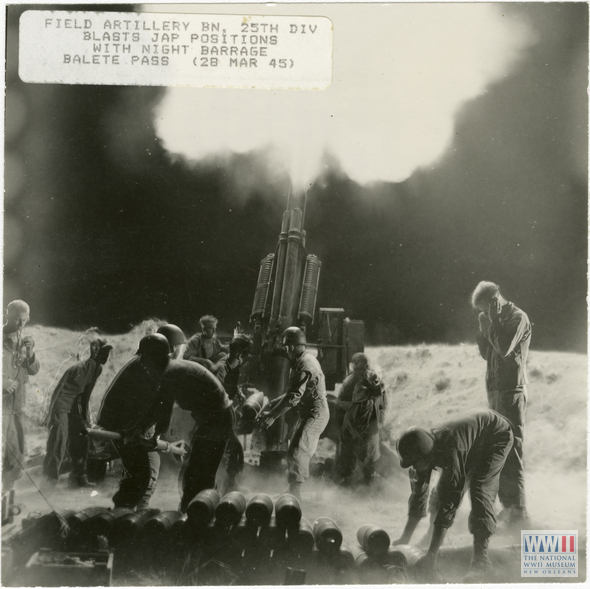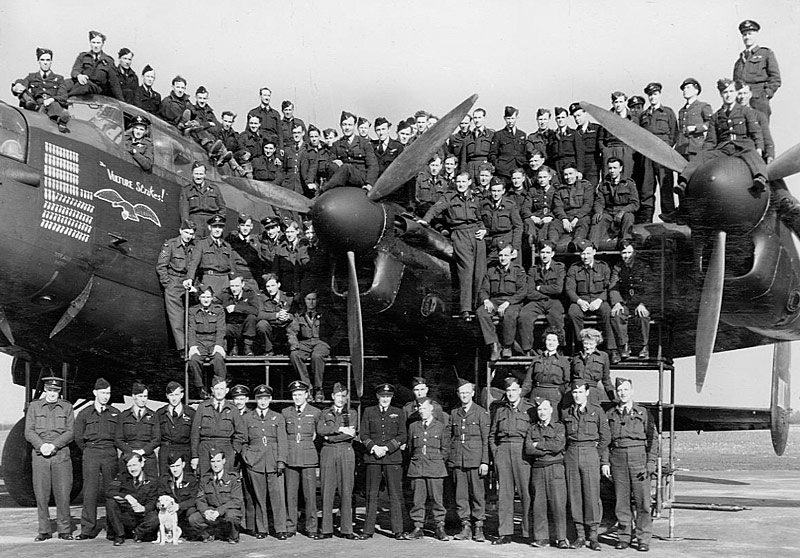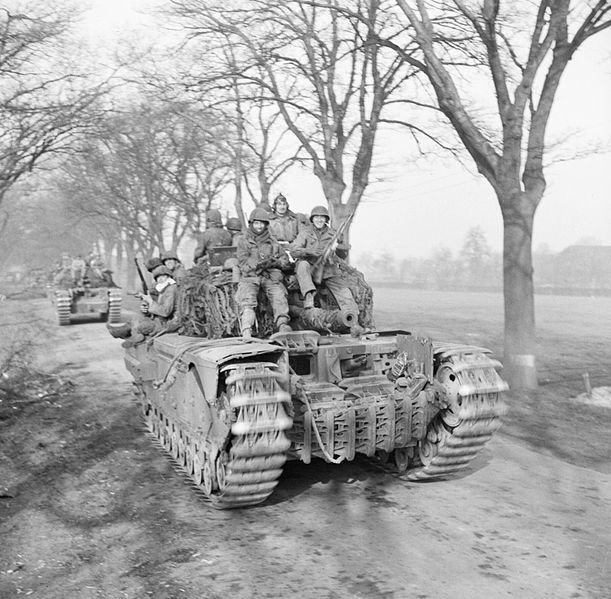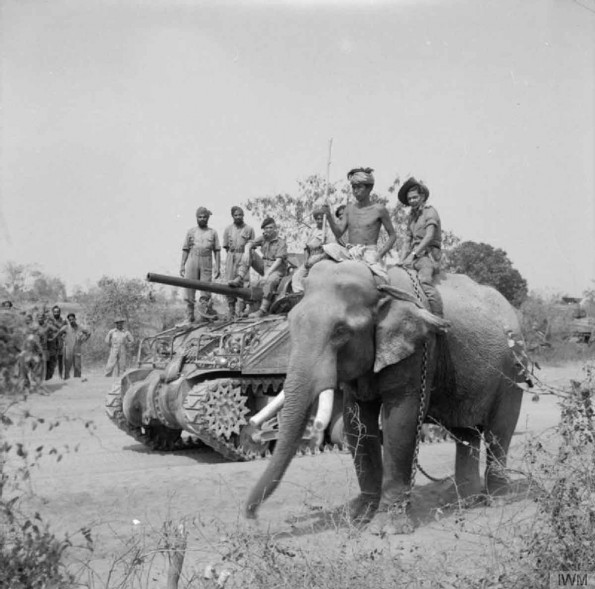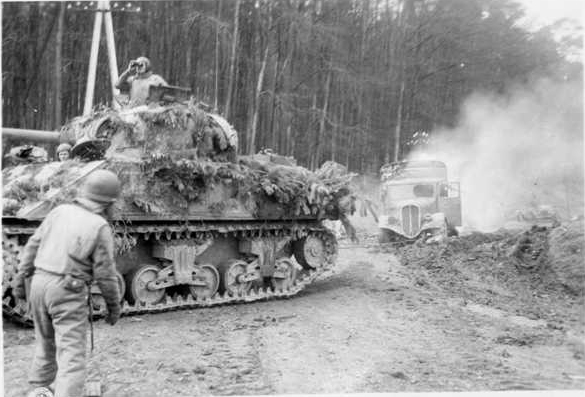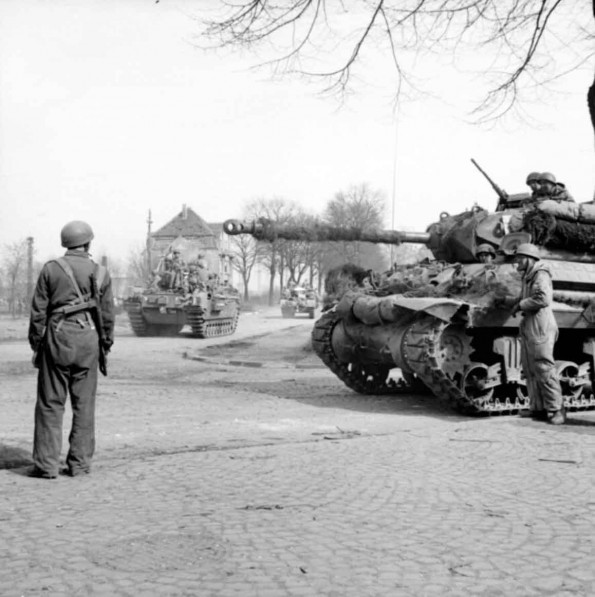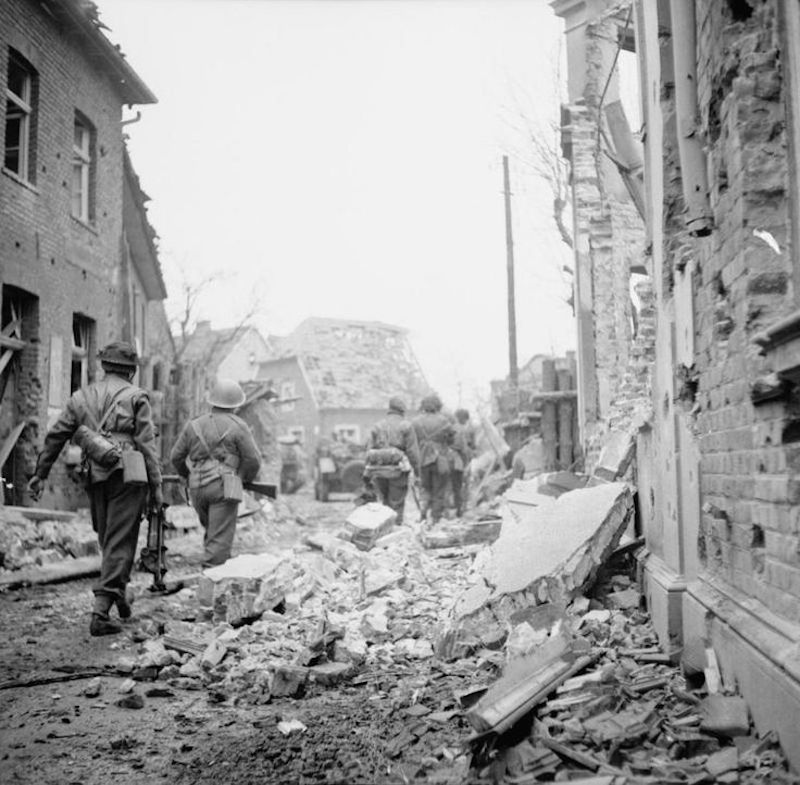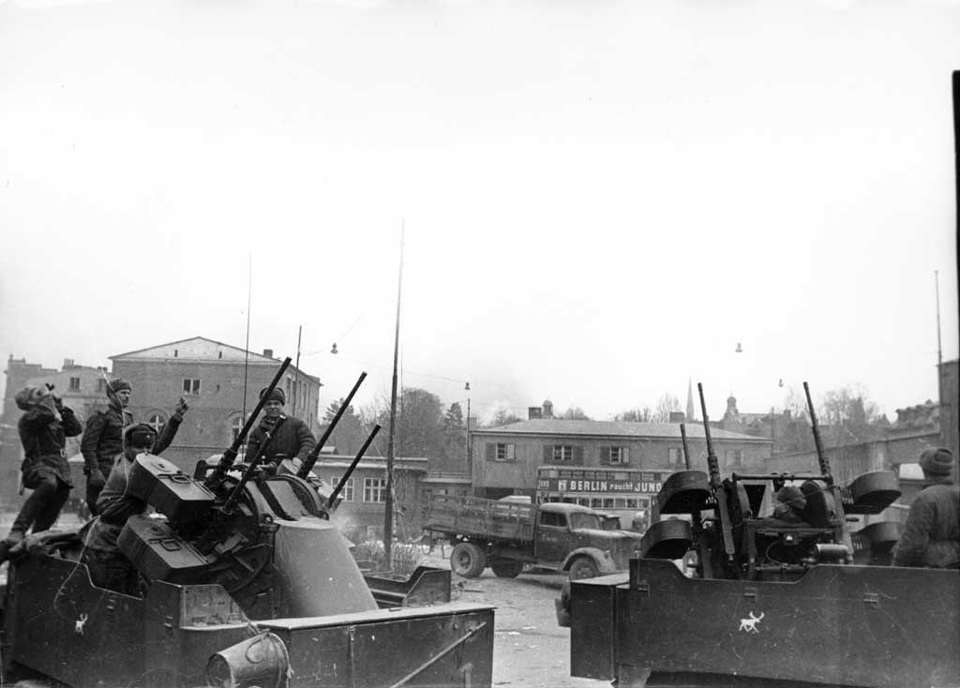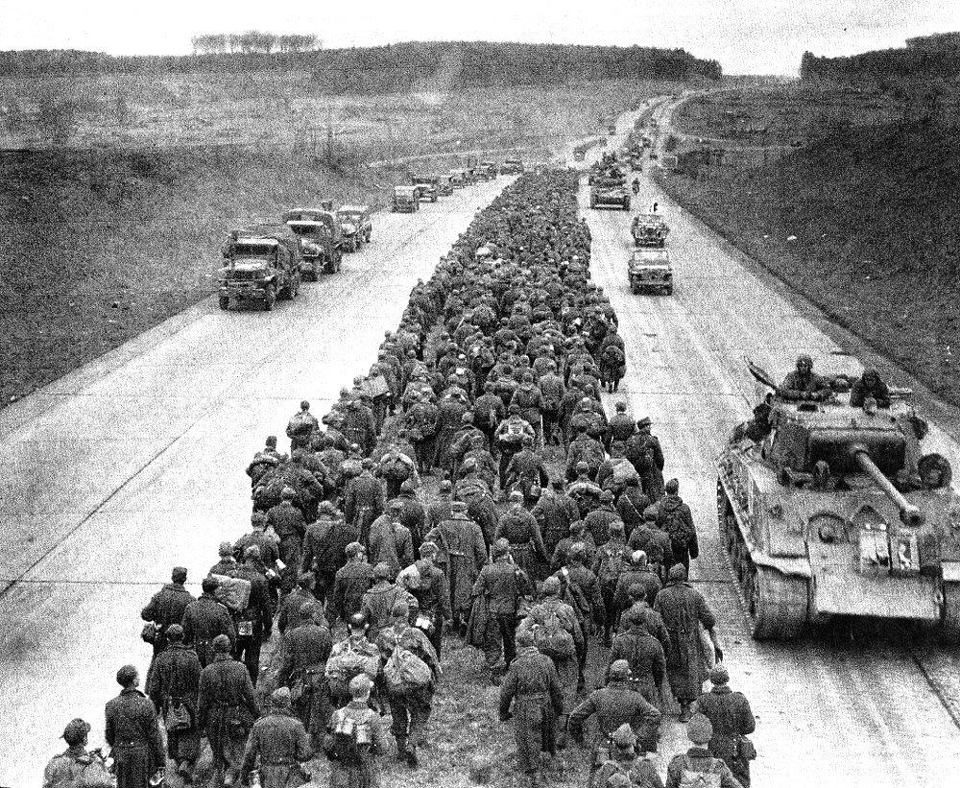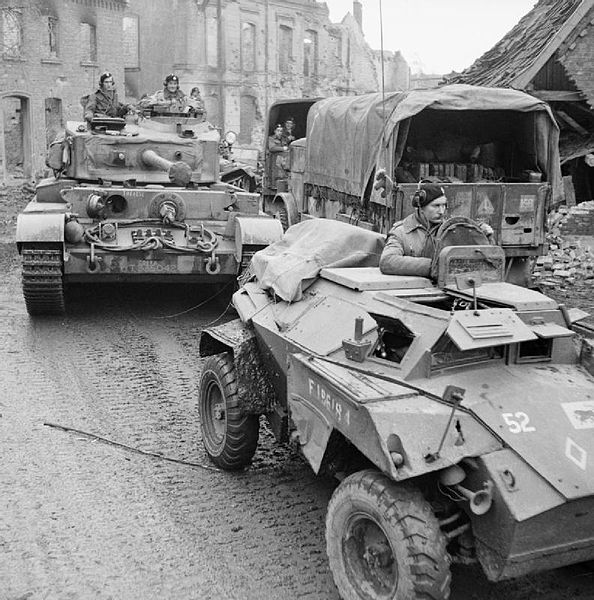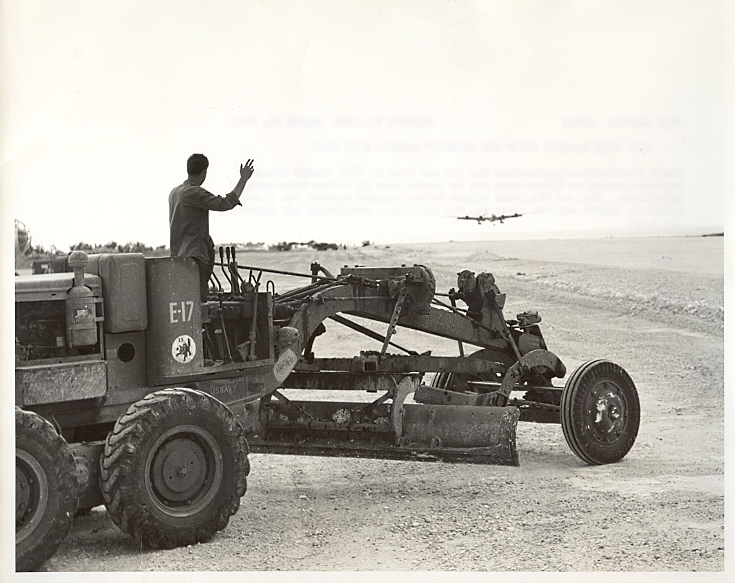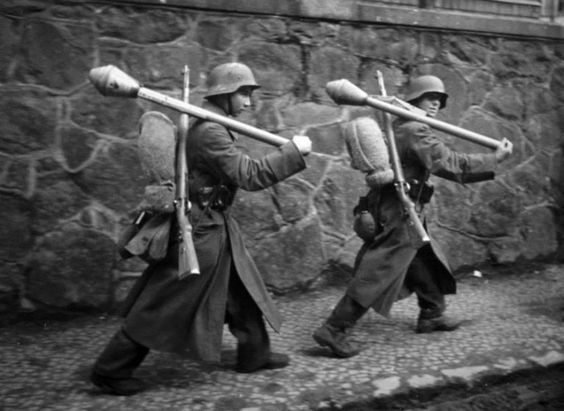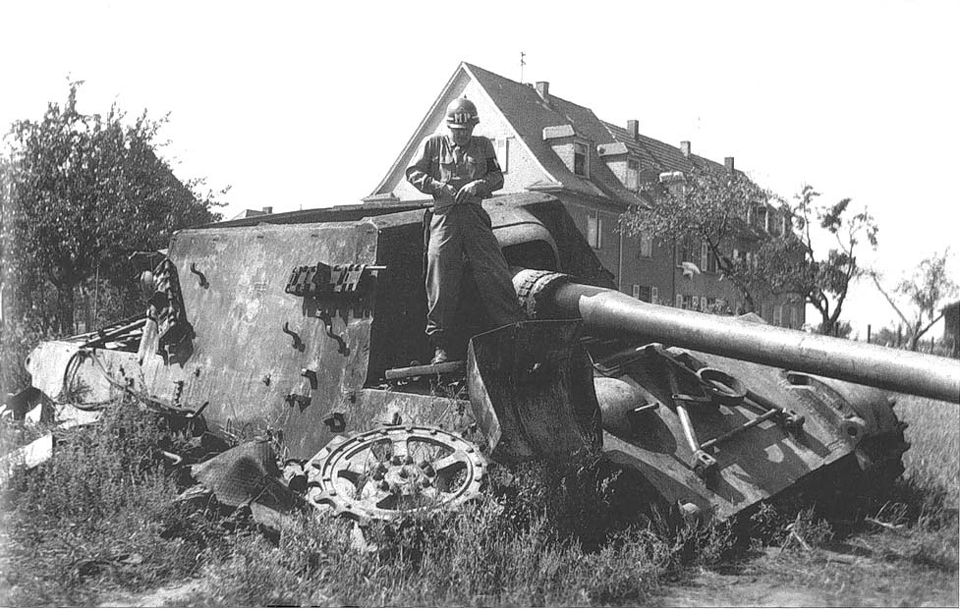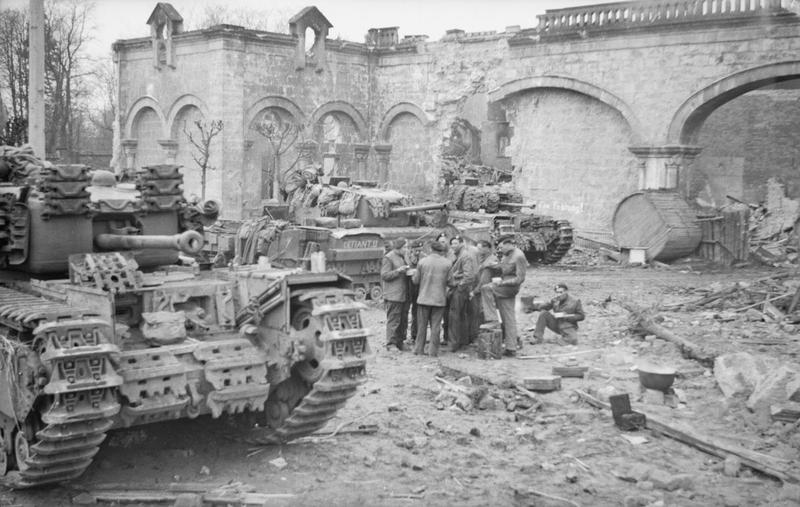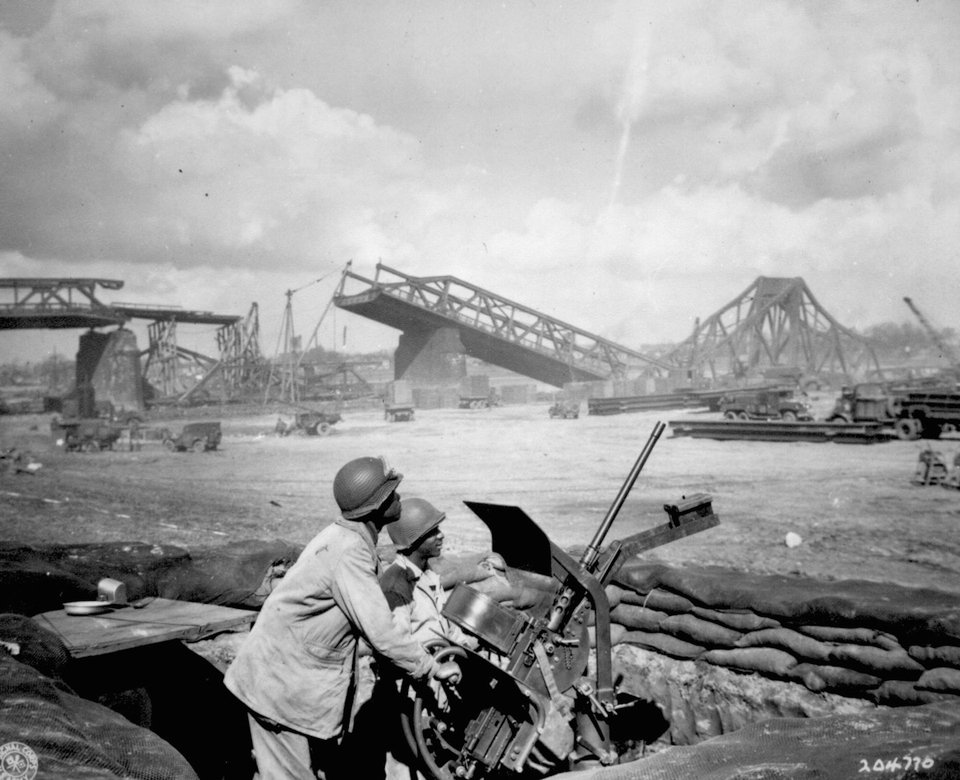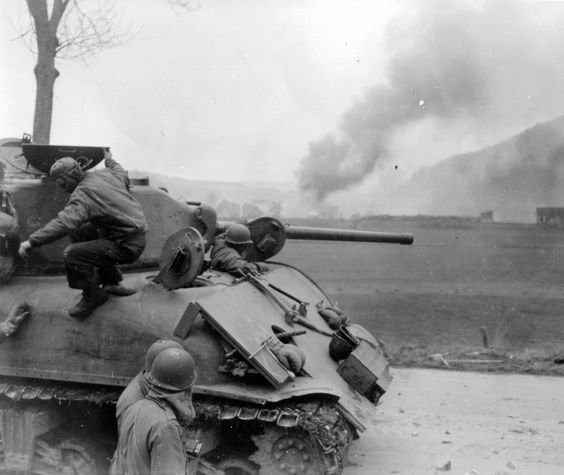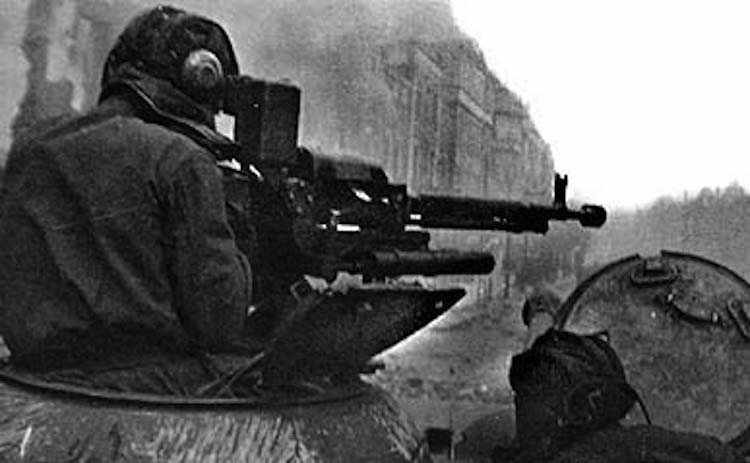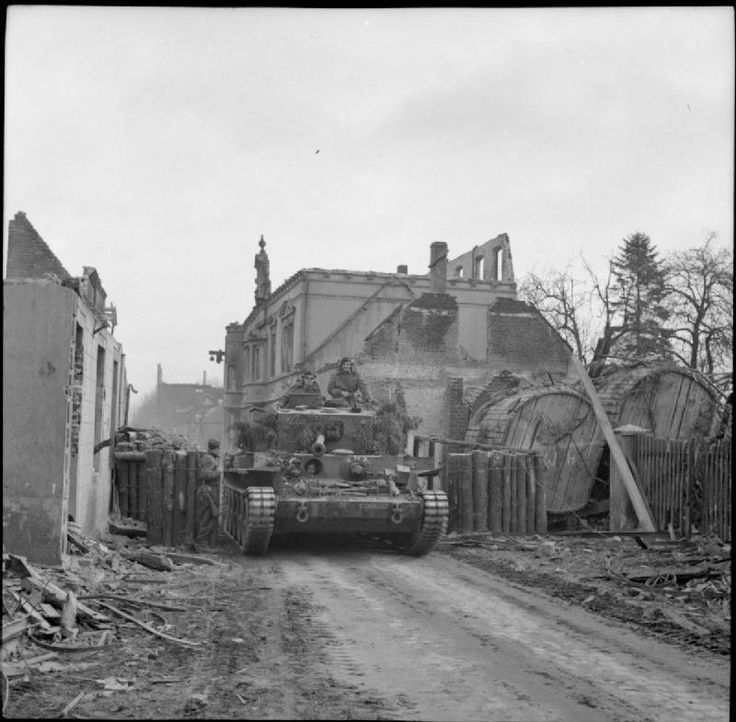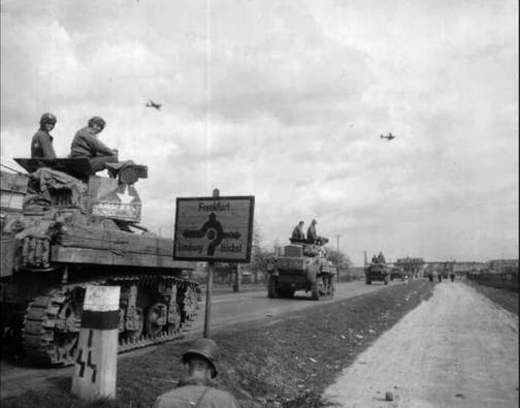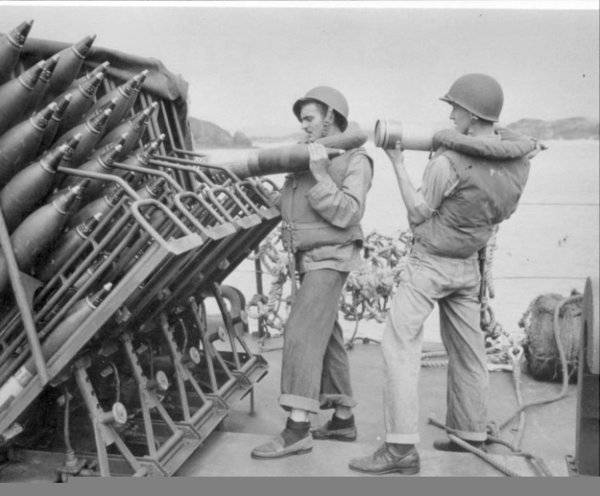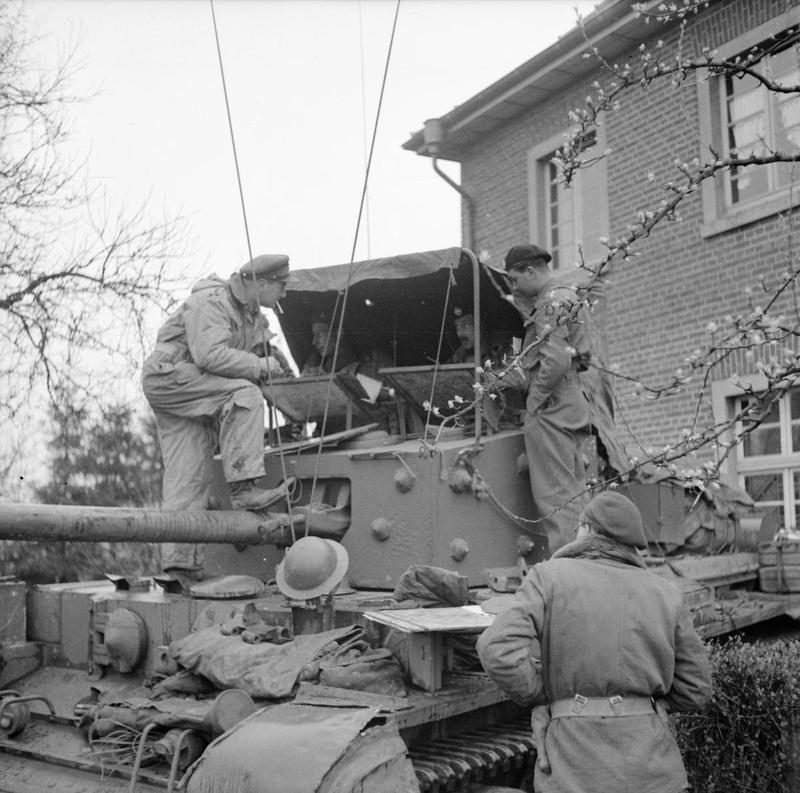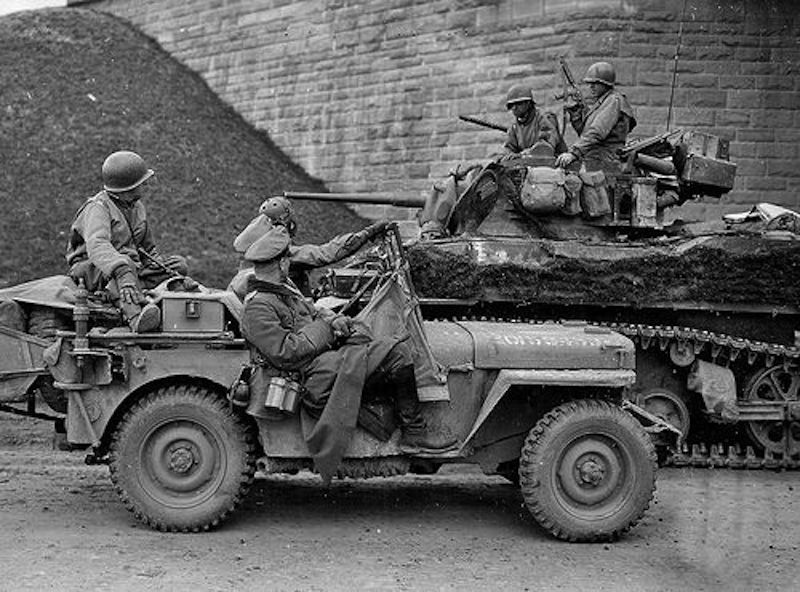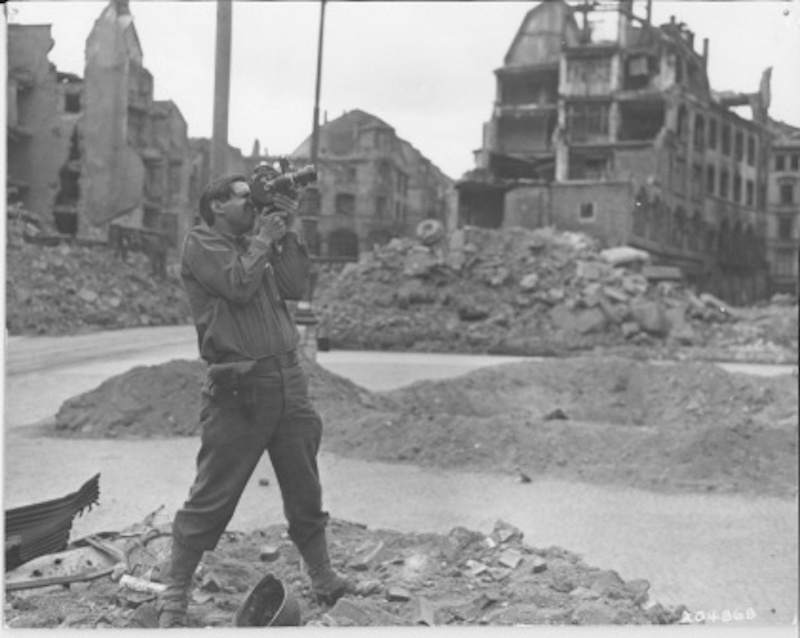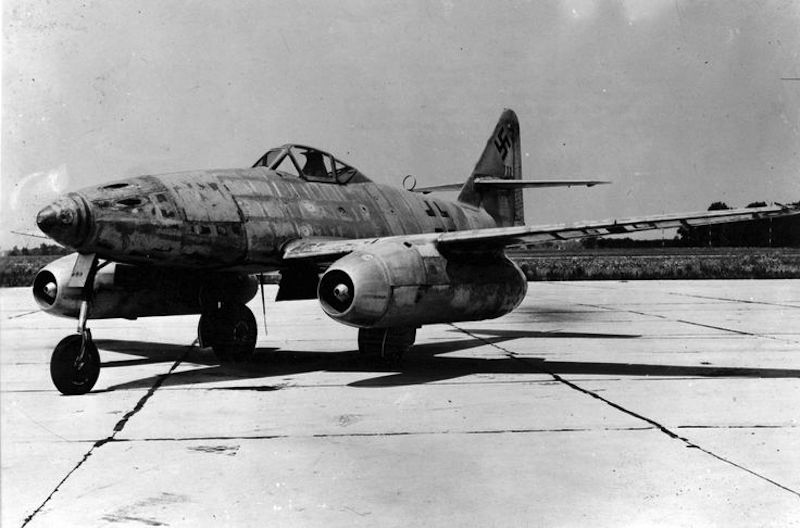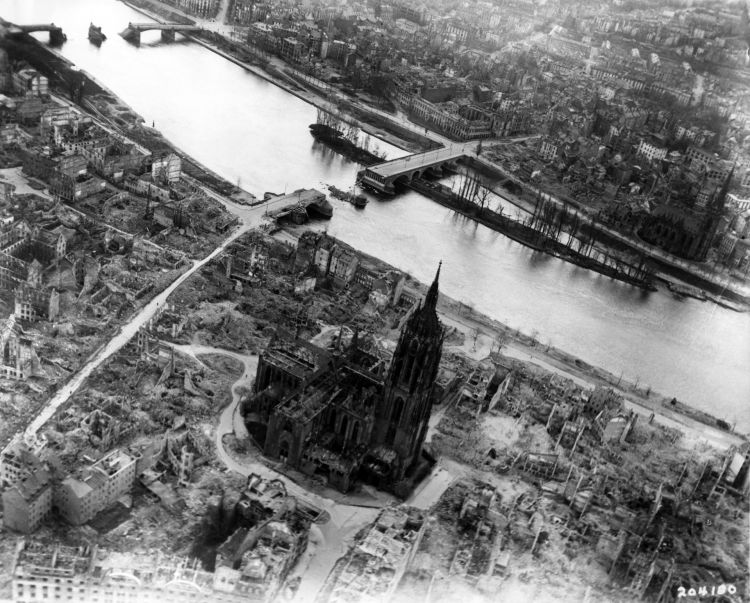Air Operations, CBI
BURMA- Nearly 100 10th Air Force fighter-bombers attack Japanese Army ground troops and many other targets in areas immediately behind Japanese battle lines.
- 27 P-47s support Allied ground forces in the Mogok area.
- 16 P-47s support Allied ground forces in the Lashio area.
- 14 P-47s attack a bypass bridge at Na-lang.
- 6 341st Medium Bomb Group B-25s and 22 14th Air Force P-51s attack Ishan.
- 9 P-51s attack targets of opportunity at Chinchenchiang.
- 4 P-51s attack road targets between Chinchenchiang and Hwaiyang.
- 21 V Bomber Command B-25s sweeping the sea lanes between Hong Kong and Swatow sink a cargo ship.
Air Operations, East Indies
XIII Bomber Command B-24s attack the Labuan, Manggar, and Tarakan airfields on Borneo.
[Air Operations, Europe
RAF BOMBER COMMANDDaylight Ops:
- 478 aircraft including 372 Lancasters, 90 Halifaxes and 16 Mosquitos of Nos 1, 6 and 8 Groups are sent to Mannheim in Bomber Command's last large-scale raid on the city. This is a general attack on the city area. Skymarking is used because of the complete cloud cover. No details of the results are available.
- 3 Lancasters are lost.
- 151 Lancasters of No. 3 Group attack an oil plant at Kamen through cloud.
Minor Ops:
- 55 Mosquitos are sent to Berlin, 40 to Erfurt and 3 on nuisance raids over northern Germany, and there are 13 Mosquito patrols and 32 RCM sorties.
- There are no losses.
GERMANY:
- A total of 1,114 8th Air Force B-17s and B-24s attack marshalling yards at seven locations n southern and central Germany.
- 95 B-17s and B-24s attack various secondary targets and targets of opportunity.
- Following the completion of their escort duties, fighters from seven escort groups strafe airfields and transportation targets of opportunity.
- 7 of 460 VIII Fighter Command escorts are lost.
- More than 340 9th Air Division bombers attack communications centers at four locations, a rail bridge, a road bridge, and ordnance depot, and targets of opportunity.
- 9th Air Force fighter pilots down 17 Luftwaffe fighters over Germany between 0915 and 1330 hours.
- 15th Air Force B-17s and B-24s attack marshalling yards at seven locations and an oil refinery at Moosbierbaum.
- Pilots of the 14th, 52nd, and 325th Fighter Groups down 7 Axis fighters over and near Lake Balaton between 1400 and 1430 hours.
- 15th Air Force heavy bombers attack a marshalling yard at Maribor.
- 44 V Bomber Command B-24s attack Takao.
- B-24s attack an aluminium plant at Takao, the airfield at Tainan, and a satellite airfield.
- V Fighter Command P-51s attack Keishu.
GERMANY:
AUSTRIA:
Air Operations, Formosa
-Air Operations, Philippines
- Following a pre-invasion bombardment by 13th Air Force aircraft and US warships, a US 8th Army infantry battalion lands on Lubang Island in the southern Philippines.
- 494th Heavy Bomb Group B-24s, 42nd Medium Bomb Group B-25s, and 347th Fighter Group P-38s mount the first in a series of pre-invasion missions against the Zamboanga region of Mindanao.
- 42nd Medium Bomb Group B-25s attack the Zettlefield airfield on Jolo.
- 5th Air Force aircraft attack targets on Negros and Panay islands.
- V Fighter Command fighters mount napalm attacks against Japanese Army ground troops near Fort Stotsenburg and near Corregidor.
Air Operations, Ryukyus
- Task Force 58 aircraft and 5th Fleet surface warships bombard several targets on a number of islands, especially Okinawa.
- V Fighter Command P-51s attack numerous targets of opportunity throughout the Ryukyus.
- A VF-30 F6F downs a Ki-46 'Dinah' reconnaissance plane at sea at 1007.
- 2 VF-80 F6Fs down a G4M 'Betty' bomber at sea at 1520 hours.
- VF-80 F6Fs down 2 G4M 'Betty' bombers at sea at 1555 hours.
Air Operations, Volcano Islands
- Task Group 52.2 TBMs and FMs provide support for US V Marine Amphibious Corps ground forces on Iwo Jima.
- VMR-952 R5Ds air-drop ammunition, spare parts, blood, and even some mail to US Marine Corps ground troops on Iwo Jima.
Burma
The British 14th Army begins the assault on Meiktila, attacking through the northern suburbs of the town against a tenacious defense from Maj-Gen Tomekichi Kasuya's garrison. The Japanese have converted the town into a heavy defensive outpost.
[Diplomatic Relations
Turkey declares war on Germany and Japan. Saudi Arabia declares war on Germany and Japan. Iran declares war on Japan.
[Eastern Front
In Hungary the Germans still prepare for their counteroffensive. The Vistula Army Group contains the attacks of the 1st and 2nd Belorussian Fronts southeast and southwest of Pyritz, south of Stettin; the German 7th Panzer Division and 4th SS Panzergrenadiere Division suffer heavy losses. In Yugoslavia there is fighting in the Sarajevo area.
In Pomerania the northwest attacks of Zhukov's forces achieve a breakthrough north of Arnswalde and move on in Kolberg direction.
GERMANYThe 1st Guards Tank, 2nd Guards Tank, 3rd Shock, 47th and 61st Armies launch a fresh attack into Pomerania, hitting the junction of the German II and X SS Corps. The Soviet 3rd Guards Tank Army defeats a counterattack by the XXIV Panzer Corps near Lauban.
CENTRAL SECTORWith the now customary arty and air support, 1st Belorussian Front launches its offensive into Pomerania. The 1st and 2nd Guards Tank Armies and 3rd Shock Army push north from Arnswalde, while the 47th Army attacks west of Pyritz and the 61st Army east of Stargard, The main assault hits the junction of the III and X SS Corps.
The XXIV Panzer Corps launches a strong counterattack near Lauban but after initially takint the 3rd Guards Tank Army by surprise, it is brought to a halt and suffers heavy losses. Over the next few days the 4th Tank Army pulls out of the combat line and moves to Oppeln to support 21st Army.
[Iwo Jima
Turkey Crest, one of the three hills near Airfield No. 2 so fiercely contested by the Japanese, finally falls to the assaults of the Marines. The 3rd Division advances east of the village of Motoyama but is held up about half a mile beyond it by the Japanese. The Americans take part of Airfield No. 3 but are then held up by very strong Japanese resistance. The 4th Marine Div fights all day at the base of Height 382, where the enemy shows signs of giving way.
The US destroyers Terry (DD-513) and Colhoun (DD-801) are both damaged by coastal gunfire. The attack transport Berrien (APA-62) is damaged in a collision.
[Okinawa
Part of the TF 58 carrier force attacks targets on Okinawa and shipping nearby. Two small Japanese warships are sunk.
[Pacific
- The Japanese torpedo boat Manazuru is sunk by US carrier-based aircraft in the Ryukyu Islands area.
- US carrier-based aircraft sink the Japanese minelayer Tsubame in the Formosa area.
- The US submarine Sterlet (SS-392) sinks the Japanese army cargo vessel Tateyama Maru (1148t) south of Yokohama.
- The Japanese mrchant vessel cargo shi Eisho Maru (2850t) is sunk by grounding in Shihtao Bay, off Shantung Peninsula.
Philippines
On Luzon in the capital, Japanese resistance is now confined to the Ministry of Finance building. East of Manila, the US 6th Division re-groups to attack the Shimbu line, which runs north from Antipolo to Mount Oro and is strongly manned by the Japanese. Filipino guerrillas are carrying out operations against the Japanese in the south of the island. The I Corps takes the initiative again, moving north toward Baguio. The 32nd and 25th Divisions, against strong enemy opposition, move toward the Cagayan Valley and Balete Pass, in the northeast of the island. Nearer the landing area at Lingayen Gulf there are renewed efforts by I Corps in the direction of Baguio and north along the coast.
The combat group from the 41st Division, US 8th Army, which landed at Puerto Princesa on February 28 virtually completes the occupation of Palawan Island. Other units of the army land on Lubang Island and take Tilic. Lubang, the biggest of the group of islands of the same name, is occupied in the course of a few days.
[Ryukyu Islands
Aircraft from Vice-Adm Marc A. Mitscher's fast carrier squadron attack enemy installations in the area of Okinawa. It is the beginning of a solid month of aerial and naval bombardment against Okinawa in preparation for the US invasion of the island scheduled for April 1. Next day Task Force 58 hits at Okino Daito Island, also in the Ryukyu Islands and only 450 miles from the Japanese island of Kyushu.
[Western Front
The British XXX Corps and Canadian II Corps, Canadian 1st Army, continue to advance in the Kervenheim sector and in the Hochwald and Balberg Forests. The town of Venlo, in Holland, is taken by units of the 35th Division, XVI Corps, US 9th Army. In the XIII Corps sector the 84th and 102nd Divisions begin a co-ordinated offensive toward Birgen, Dülken, the Niers Canal and Anrath. Units of the 29th Division, XIX Corps, seize München-Gladbach, the most important town reached by the Allies in Germany so far. The 2nd Armored Division advances northward across the Cologne plain, capturing Kleinenborich, crossing the North Danal and continuing north on the line Willich-Osterath, places which are soon captured.
In the US 1st Army sector, the VII Corps, with the Erft as its start line, continues to attack toward Cologne and the Rhine, with the 3rd Armored Division operating in the Glesch-Paffendorf region, the 10th engaged on the area of Quadrath and the 8th advancing on the town of Mödrath. The III Corps is also advancing toward the Rhine.
The VIII Corps, US 3rd Army, astride the Prüm River, is still advancing eastward, but meets with strong resistance from the German 7th Army. The 87th Division reaches Ormont and the 4th makes some progress in the bridgeheads east of the Prüm River. The 6th Armored Division reinforces the bridgehead on the right flank of the corps. Between the Prüm and Nims Rivers, the 80th Division, XII Corps, makes headway, and between the Prüm and the Kyll the 4th Armored Division captures Sefferweich and Malbergweich.
Units of the 10th Armored Division, XX Corps, begin to enter Trier; the bridge over the Moselle was taken intact overnight.
The US 7th Army, with its 3 corps, XXI, XV and VI, abreast of one another, takes up defensive positions along the Saar, Rotbach and Moder Rivers between Emmersweiler, Germany and Oberhoffen, France.
The French 1st Army remains on the defensive along the Rhine, protecting the right flank of the US 7th Army.
[